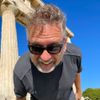Week 199: Bunbury with Otto the wonder dog
Touring Cheshire and off to Spain.
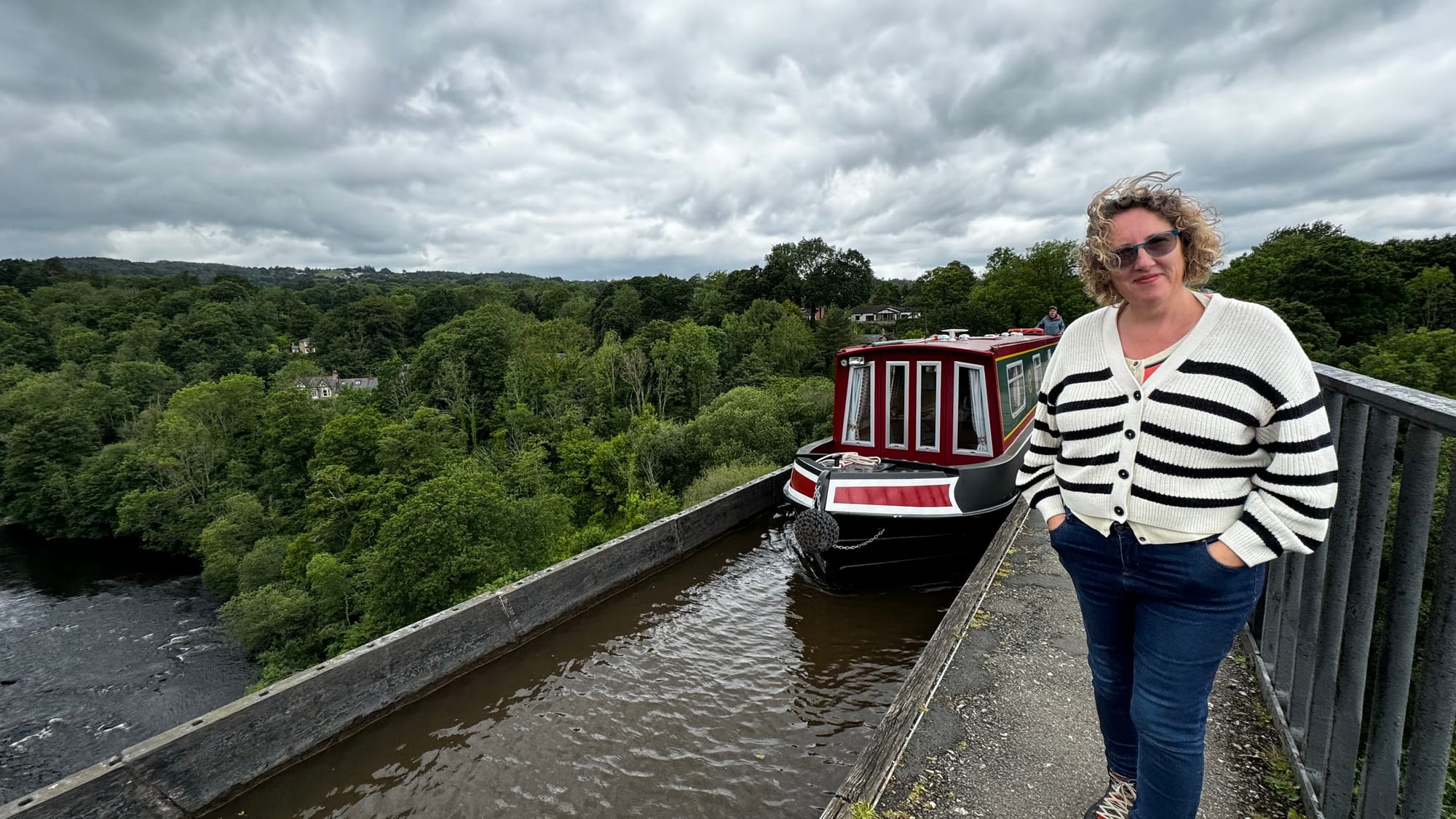
All of our house sits have been enjoyable, but this one has been particularly good. Aside from the fact that the house is very comfortable, Otto is a delightful companion who is very easy to be around. He's a lovely dog who just wants to go for the occasional potter around the neighbourhood, have his ears scratched, and be fed on time. He's also very fond of walking to the pub.
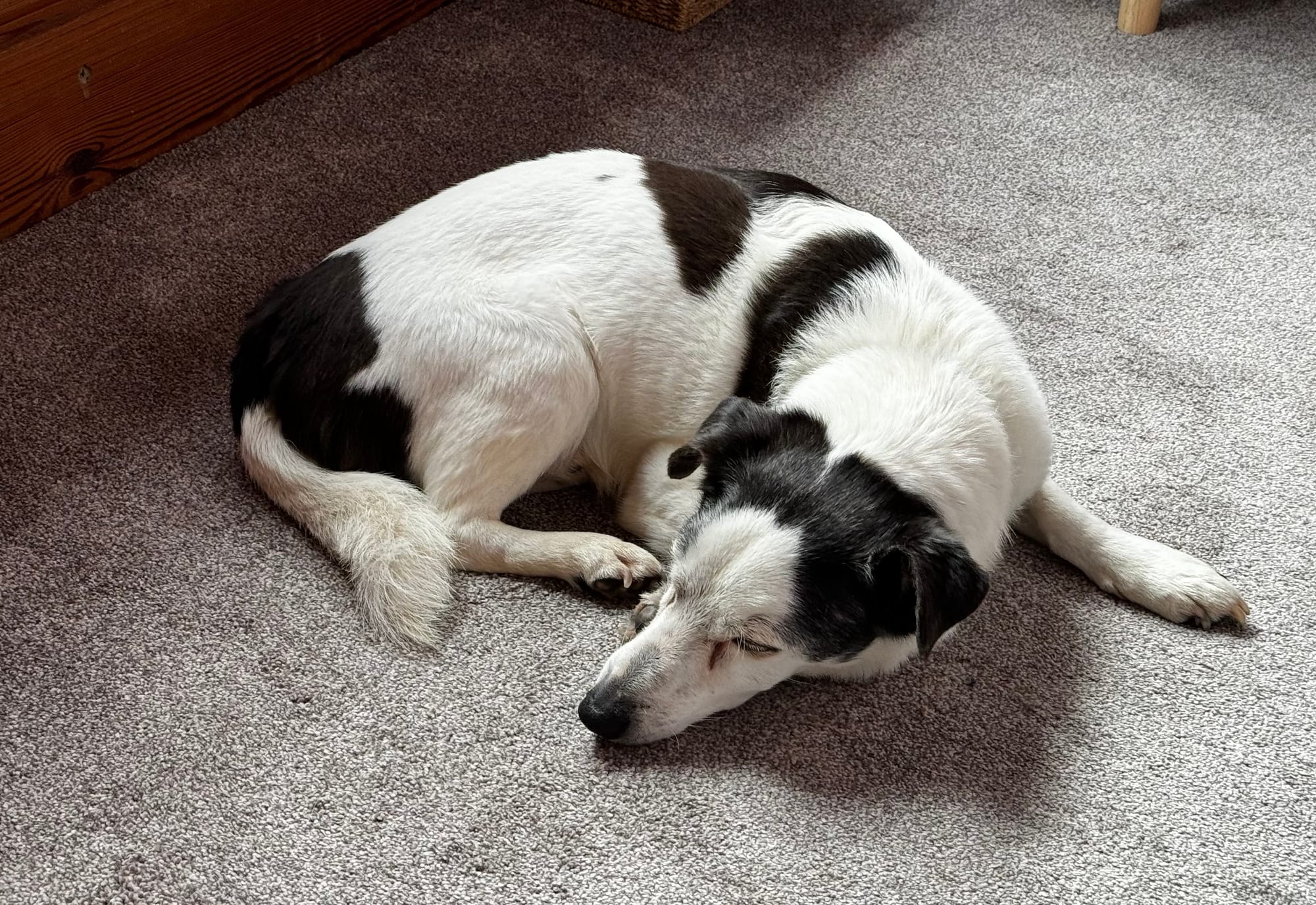
As you know, I'm a bit of a geek for architecture. You might wonder what could amuse us in a small village like Bunbury (population around 1,500), but there's lots to learn if you know where to look. The more we travel and the more we see, the more small details become interesting. There's a lot to learn about a place from its architecture.
Some of the interesting local clues in Bunbury are things like the finials on top of some of the houses. The houses with finials were built at the same time as part of the development of the local manor – these were the houses for the skilled artisans attached to the estates.
Other hints include things like infilled brick windows. Now houses, these buildings used to be shops and hint to the more dynamic past of the village, which, like many small towns, is now a lot quieter from a shopping perspective.
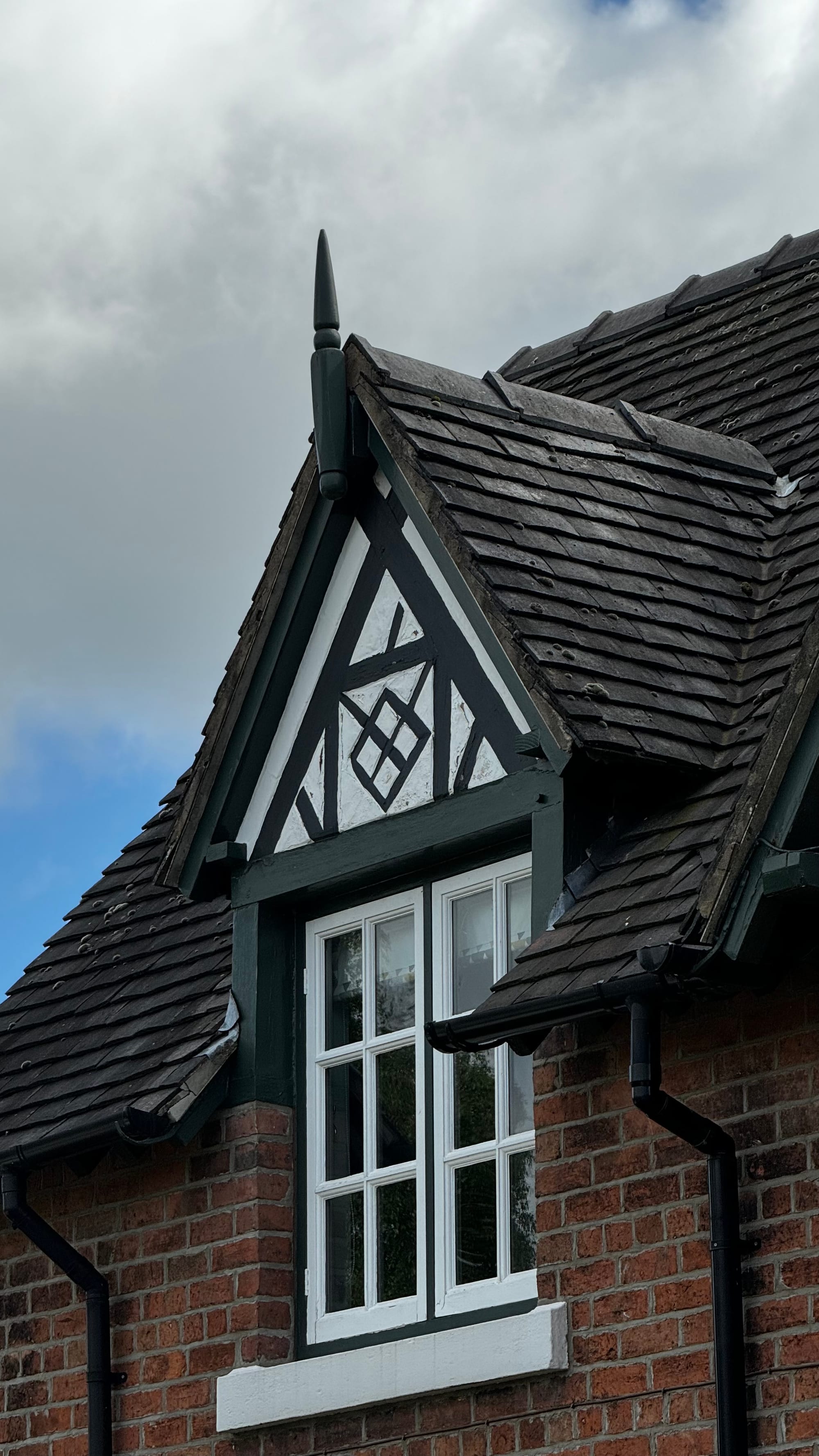
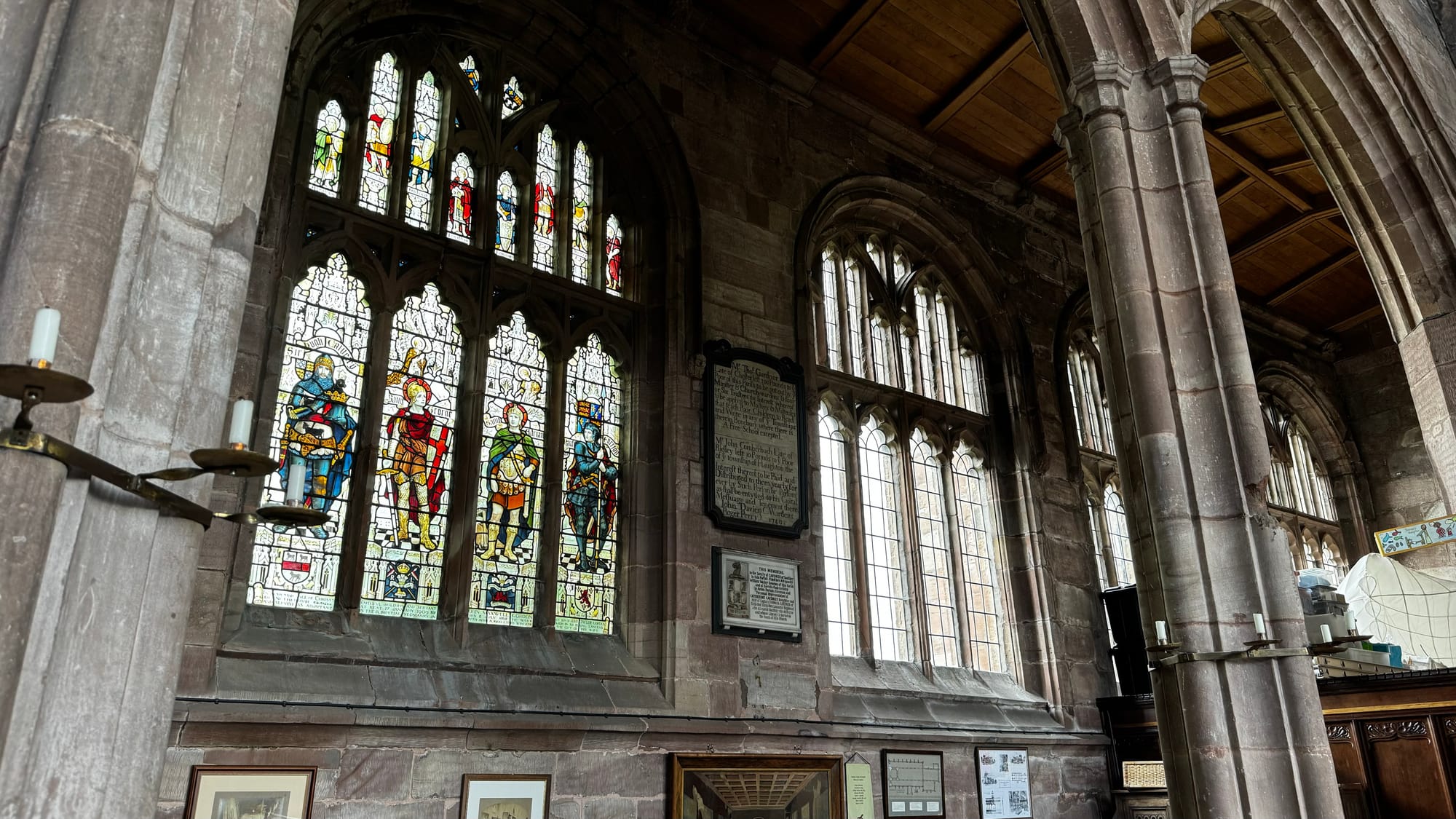
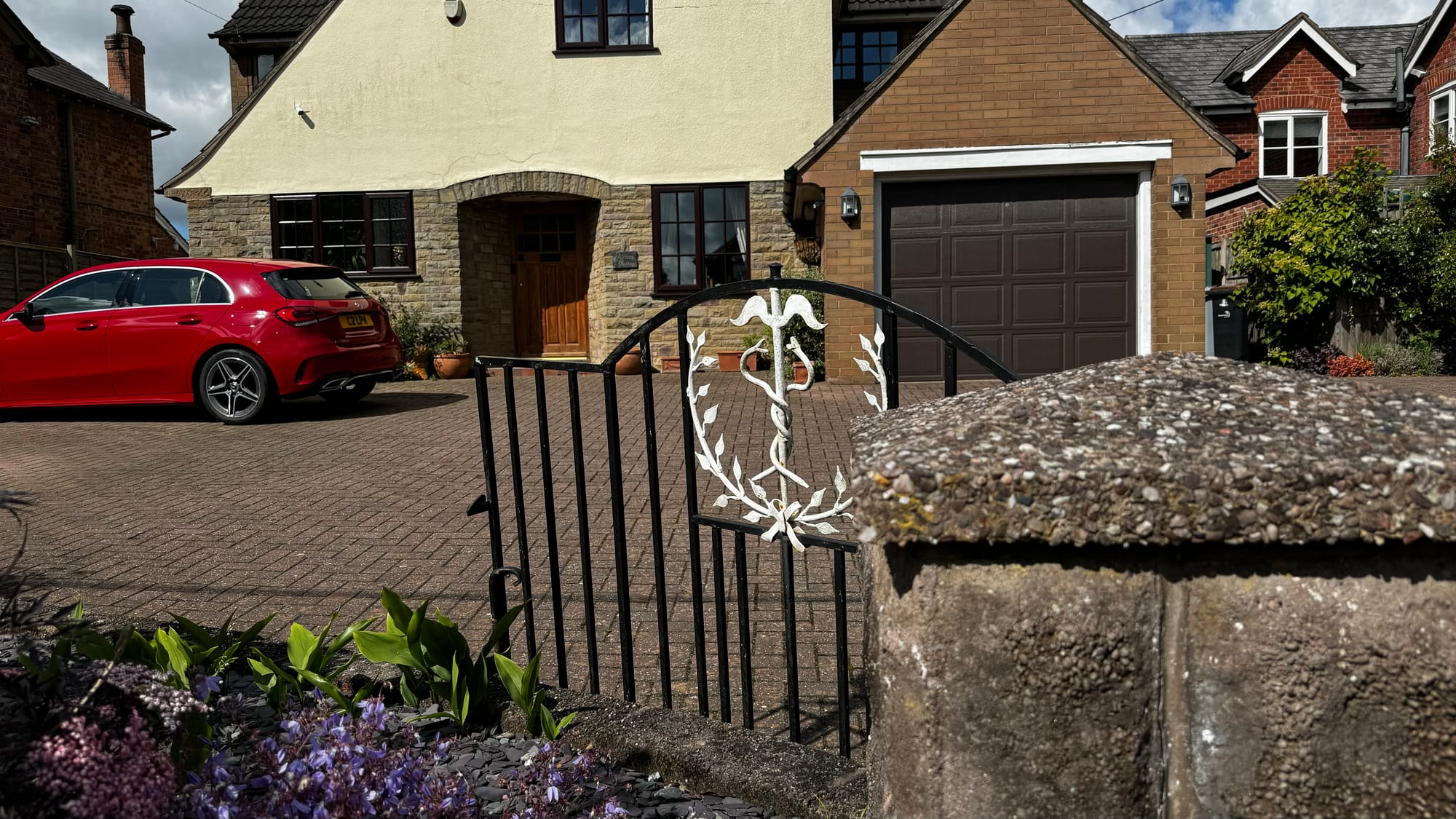
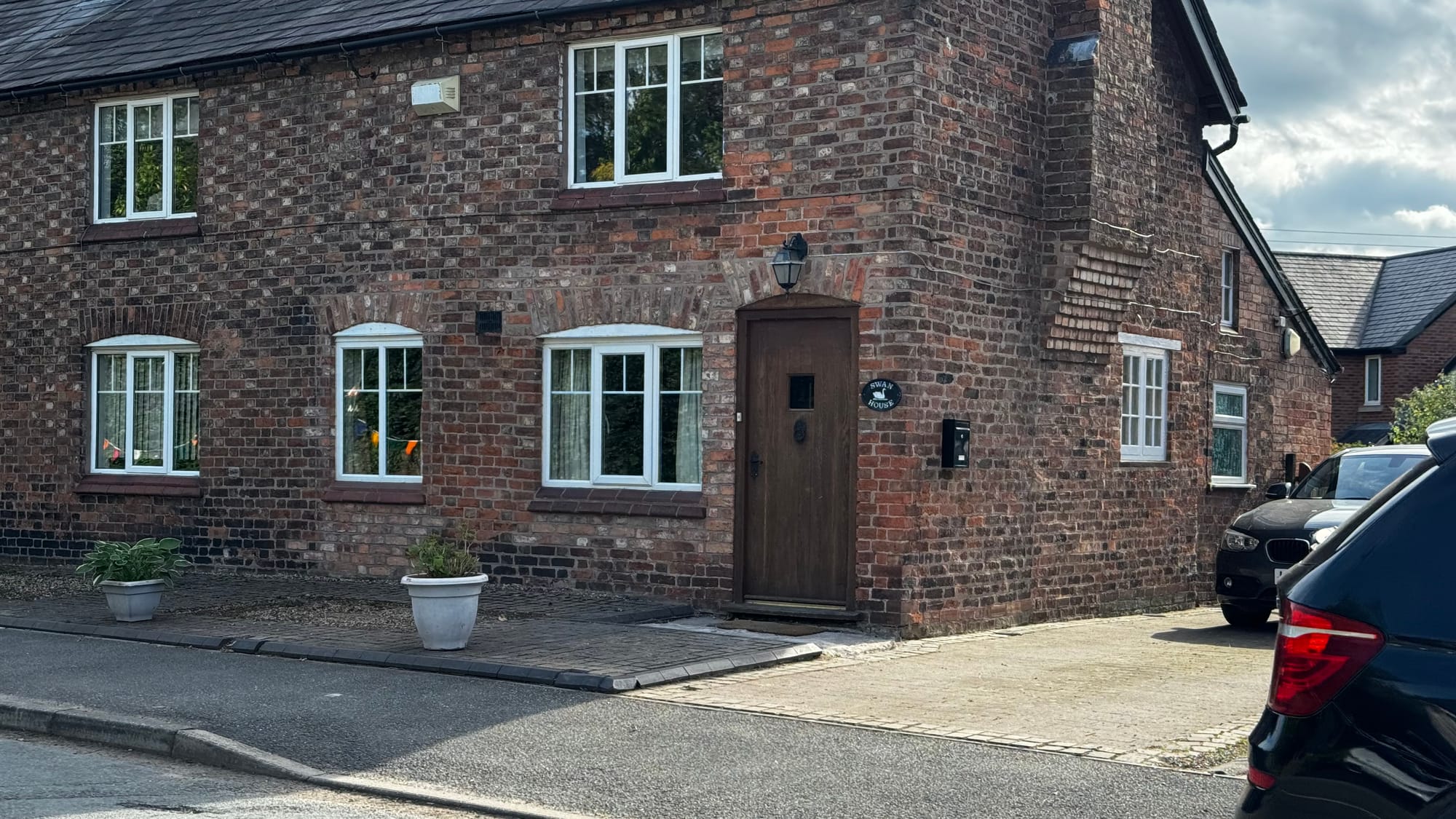
Finials on the house sit, this used to be the wheelwright's cottage for the estate. Missing stained glass at the church. Wrought iron doctors symbol at the old doctor's cottage. Infilled storefront, the windows matched the rest of the house.
Or the decorations on the gate. This place used to be the local doctor's surgery, and the house is called "Doctors Cottage" (which is in itself a clue, admittedly not a complicated one—the names of cottages in the UK often carry a lot of history and significance).
In the local church, St Boniface, there are even more hints of history. For example, why are some of the stained glass windows missing? This turns out to be caused by misguided bombs in World War II. The local town of Crewe is a major rail centre and also the home of Bentley Motors, which made Merlin engines for Spitfires. It was a big bombing target – apparently, it was so well fortified with flack that the bombing crews would intentionally drop early so they didn't have to fly over, which meant that non-target villages like Bunbury copped it. There is some more WWII history related to this coming up as well.
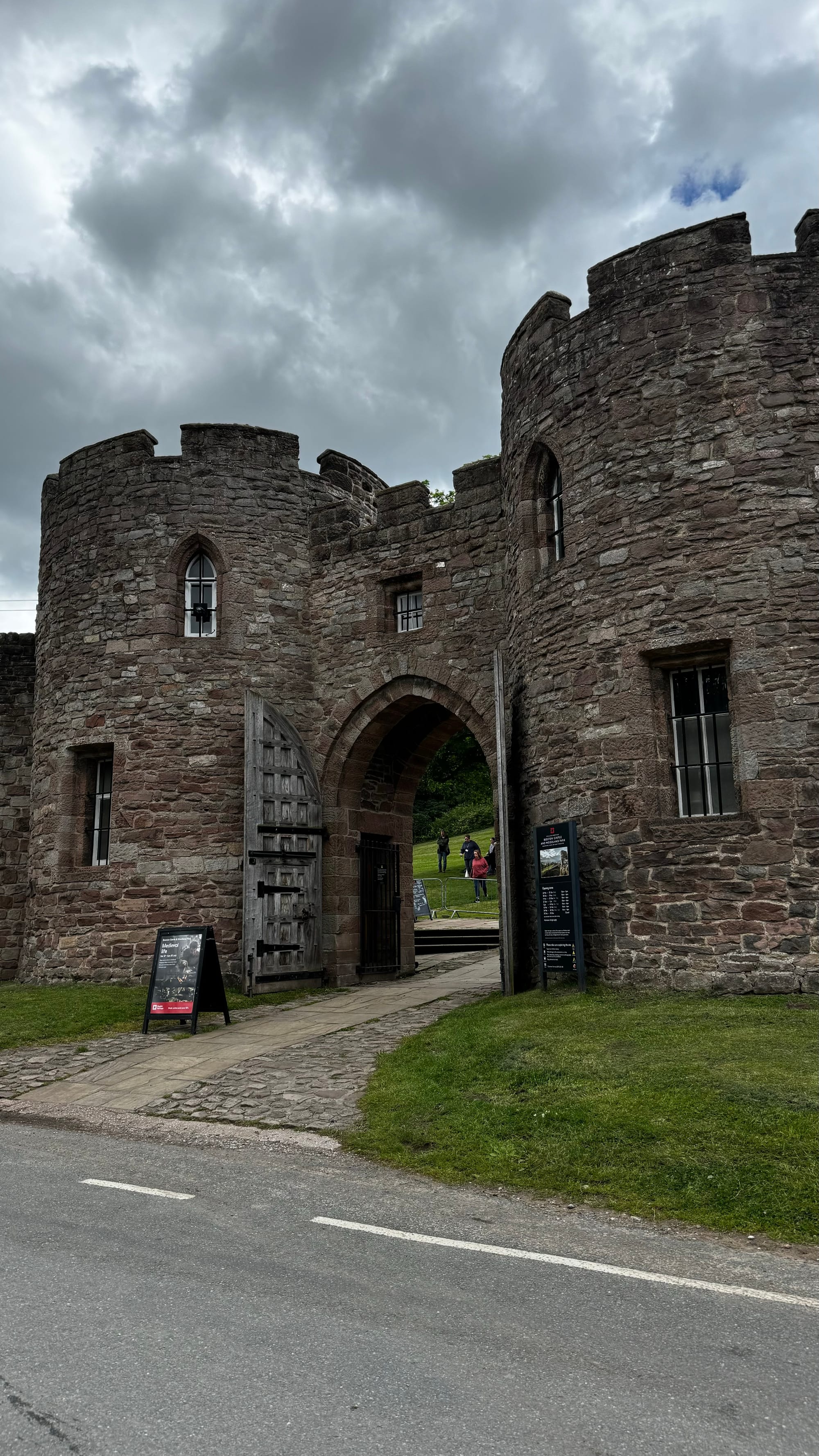
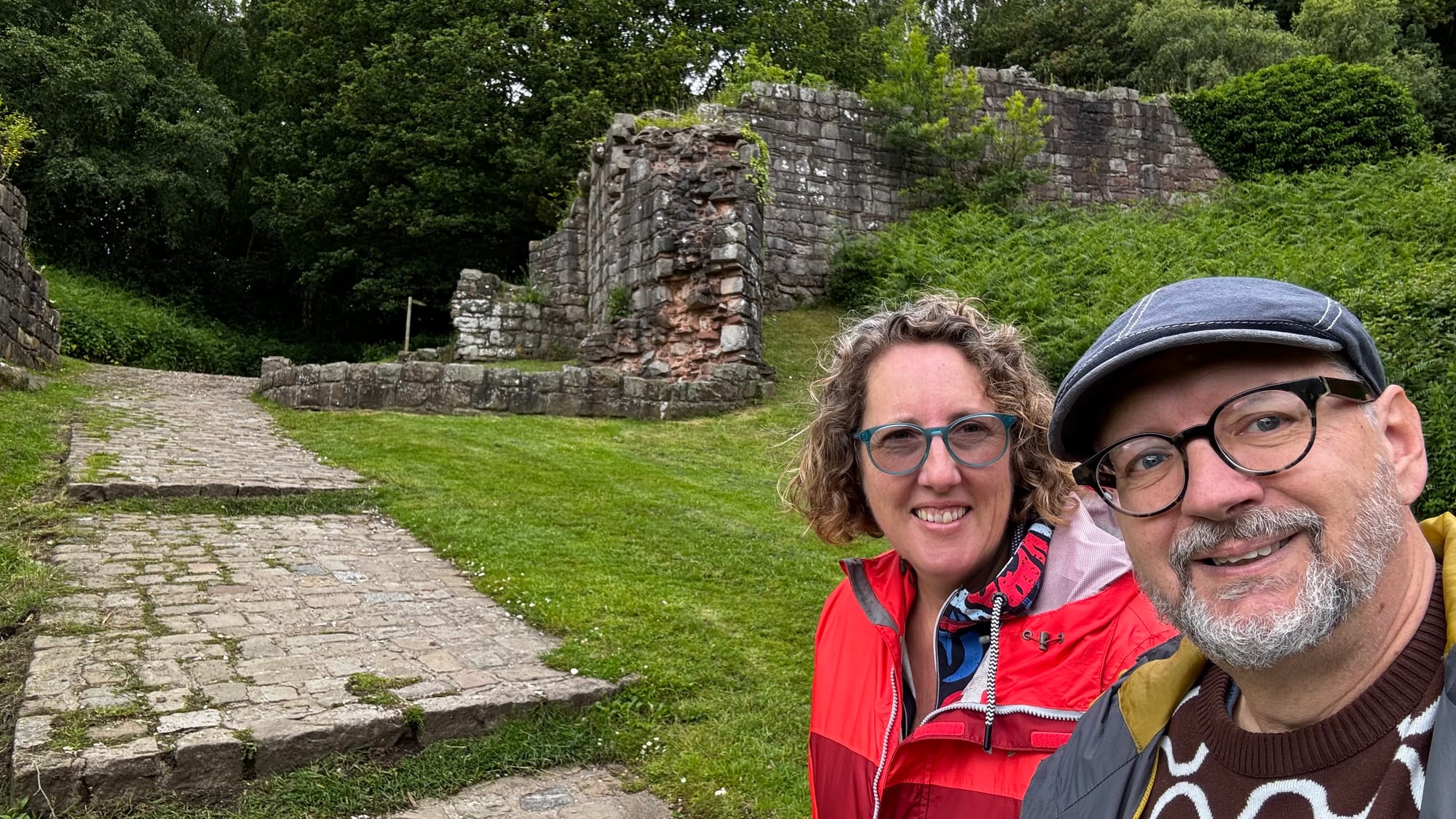
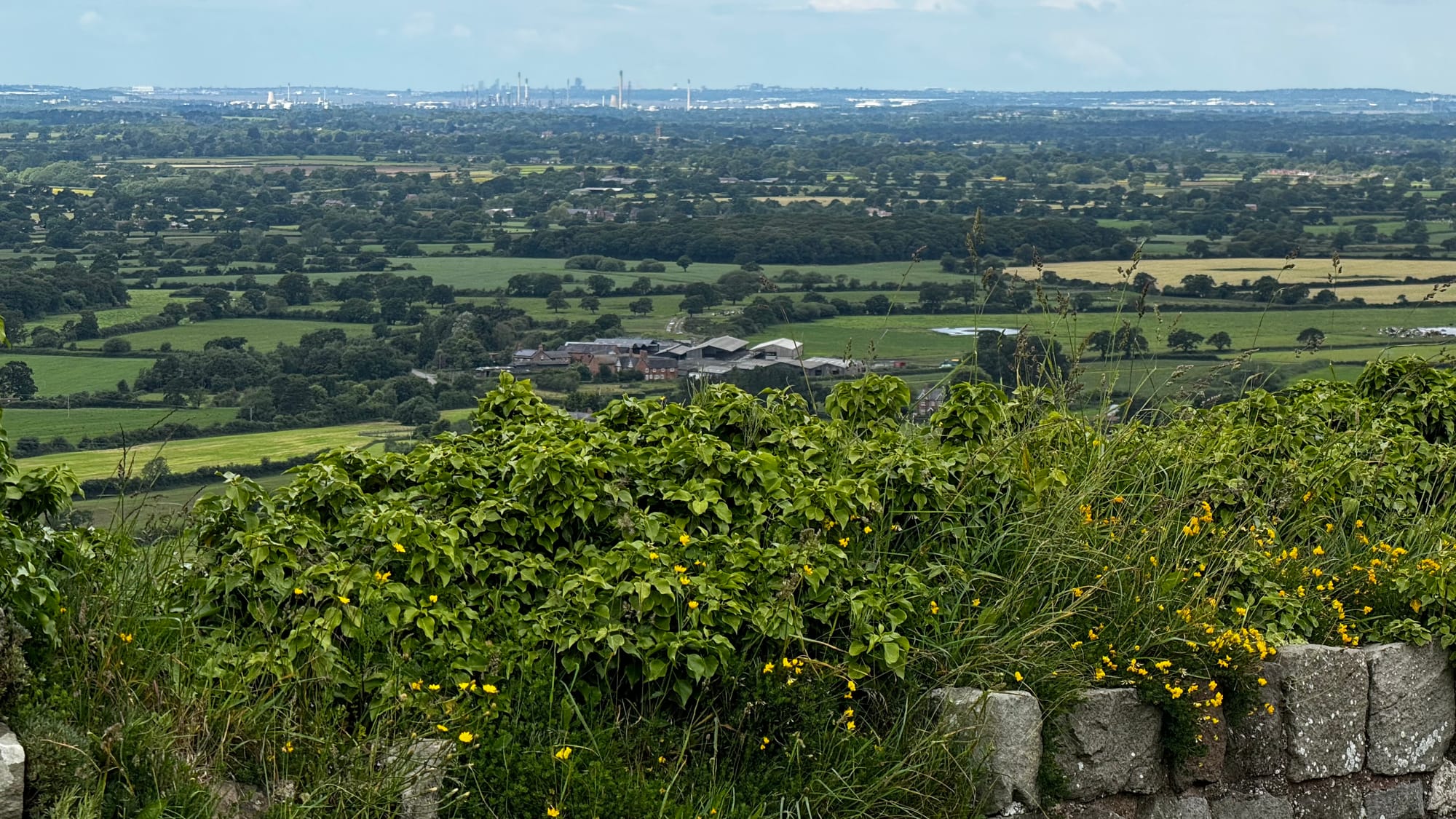
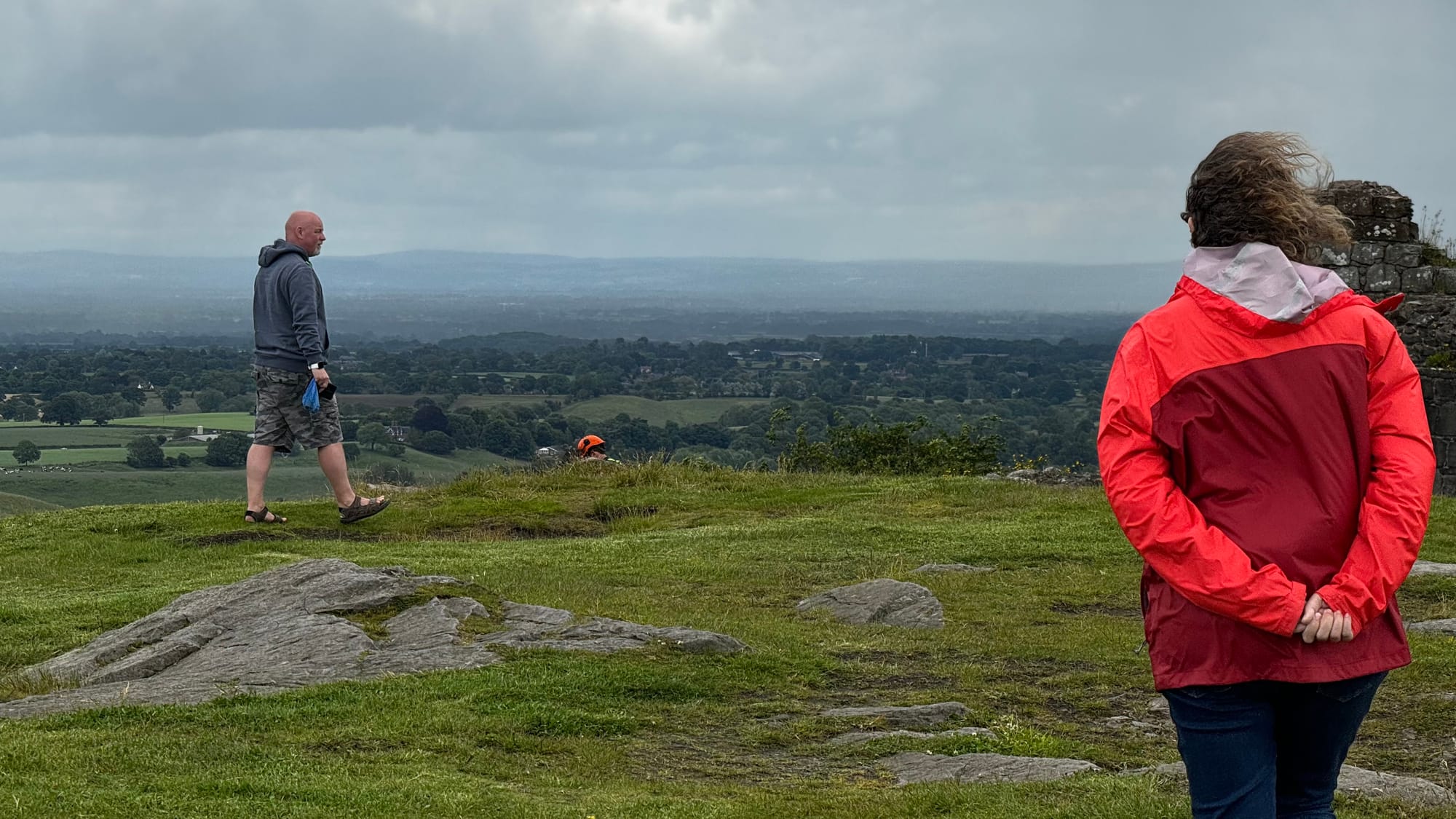
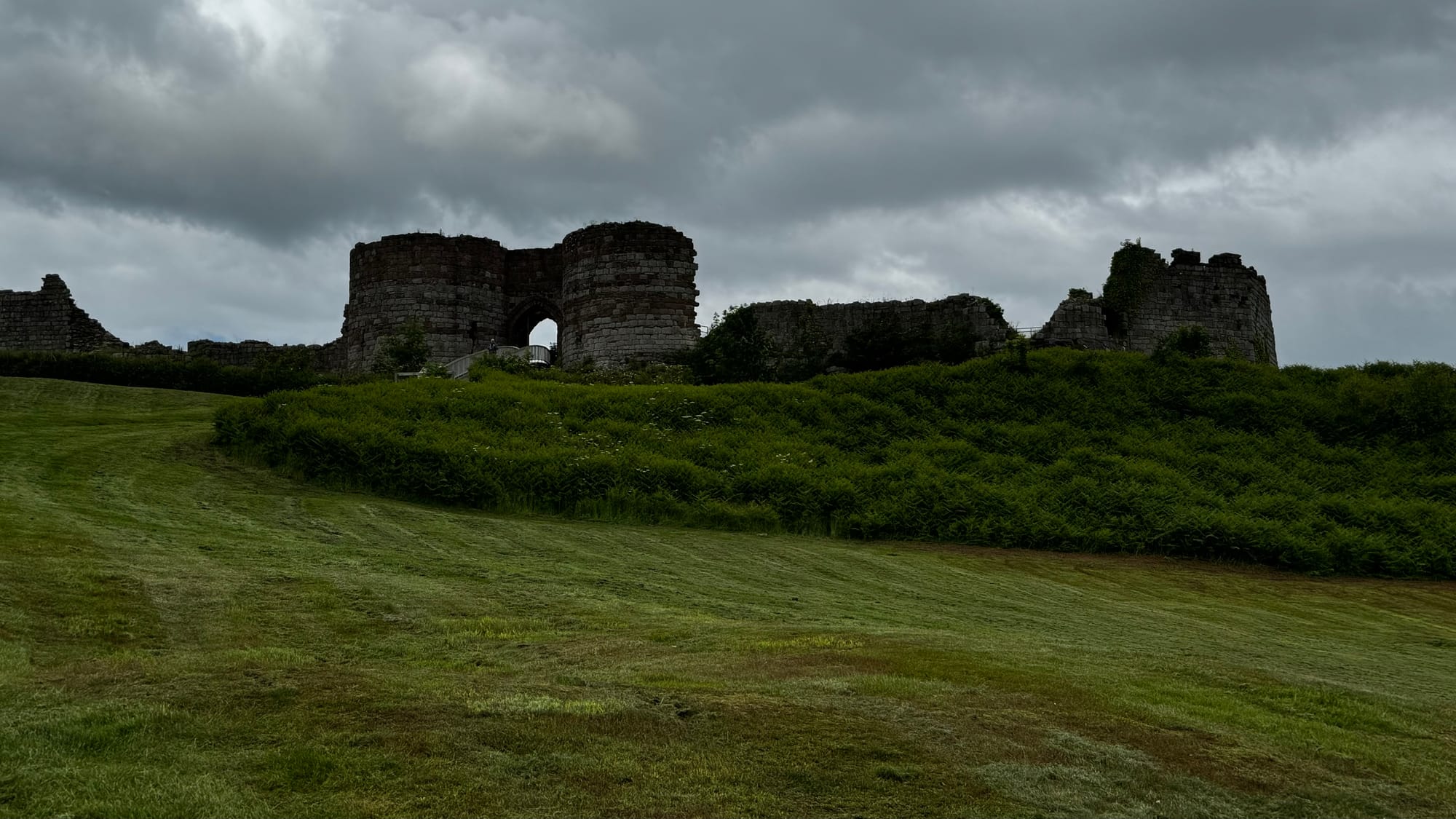
Beeston Castle. More cold and wet weather. There are traces of Iron Age settlements here dating back to 3,000 BC.
On Monday, we headed for Beeston Castle, which is up on a hill with amazing views of the surrounding Cheshire plains. From here, you can see all the way to Liverpool. We walked to the top and enjoyed the view. As Karina said, as a castle, it's probably not worth the money (we've seen plenty of other castle ruins, more comprehensive and often cheaper). The views, however, were quite spectacular, and it's one of the few high points in the area.

Driving back from Beeston Castle, we stopped at the Bunbury Staircase (a small double lock) and had a lovely time chatting with the couple navigating their barge through. We helped out with the gates and opening and closing the sluices. It's the first narrowboat lock we've operated, and it was surprising just how much hard work it is! You have to be patient – the lock gates swing open manually, so even the smallest imbalance in water is almost impossible to overcome. Even then, the gates are very heavy.
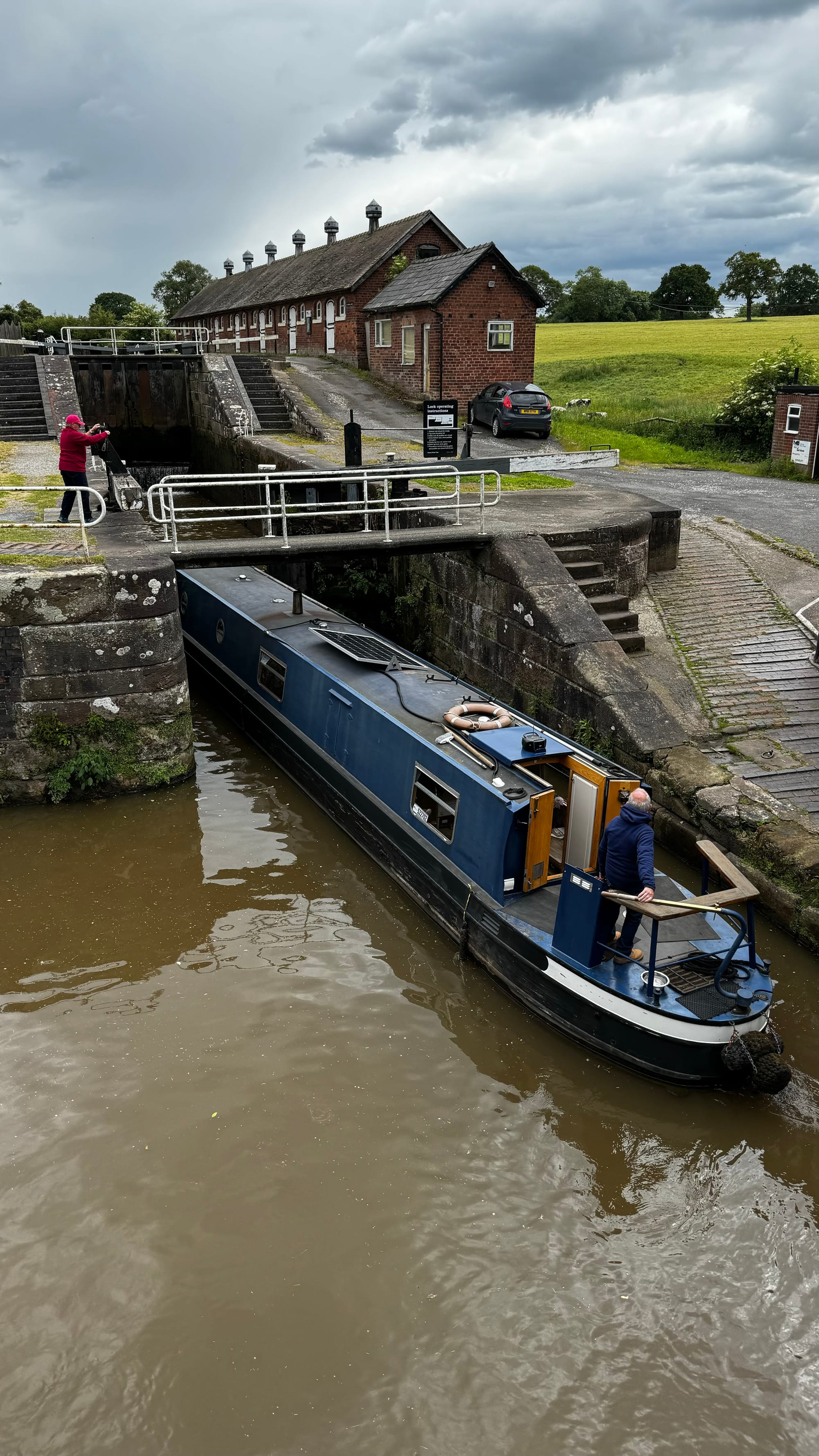
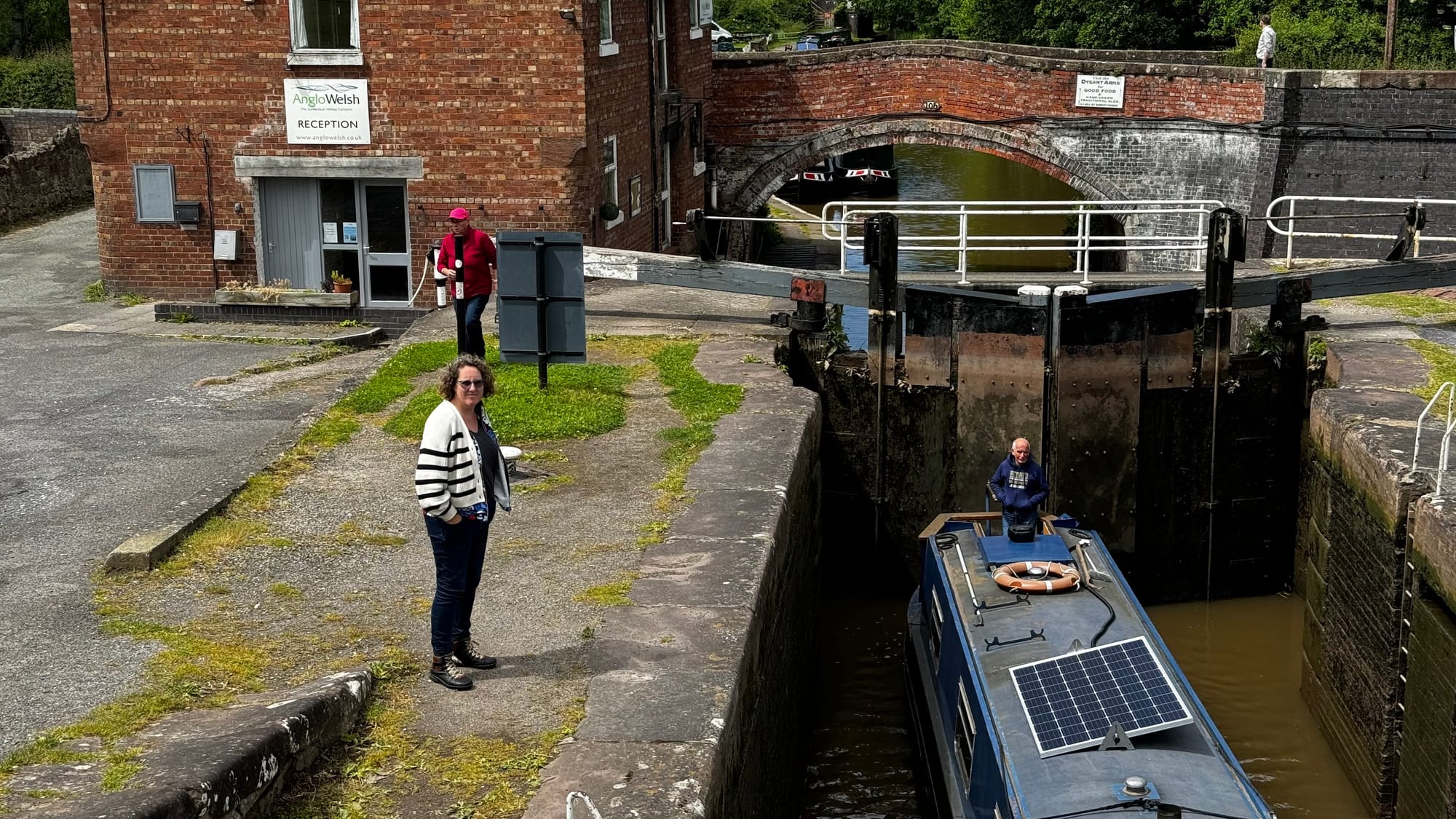
Chatting and helping
Next, we found the local ice cream dairy, Snugbury's and stopped off for an afternoon snack.
On Tuesday, the weather was not too bad, so we headed for Pontcysyllte in Wales to visit the canal aqueduct there. A UNESCO World Heritage site, it was built to bring barges from one side of the valley to the other. It's now a very popular tourist destination with a lot of barges making the journey some 38 meters above the valley floor. It's the longest aqueduct in Great Britain and the highest canal aqueduct in the world. Only 3.8 meters wide, the edges on the canal side are only about 30 cm tall, making it a trip that's not for those afraid of heights! We enjoyed lunch at a local pub and then home to Bunbury again.
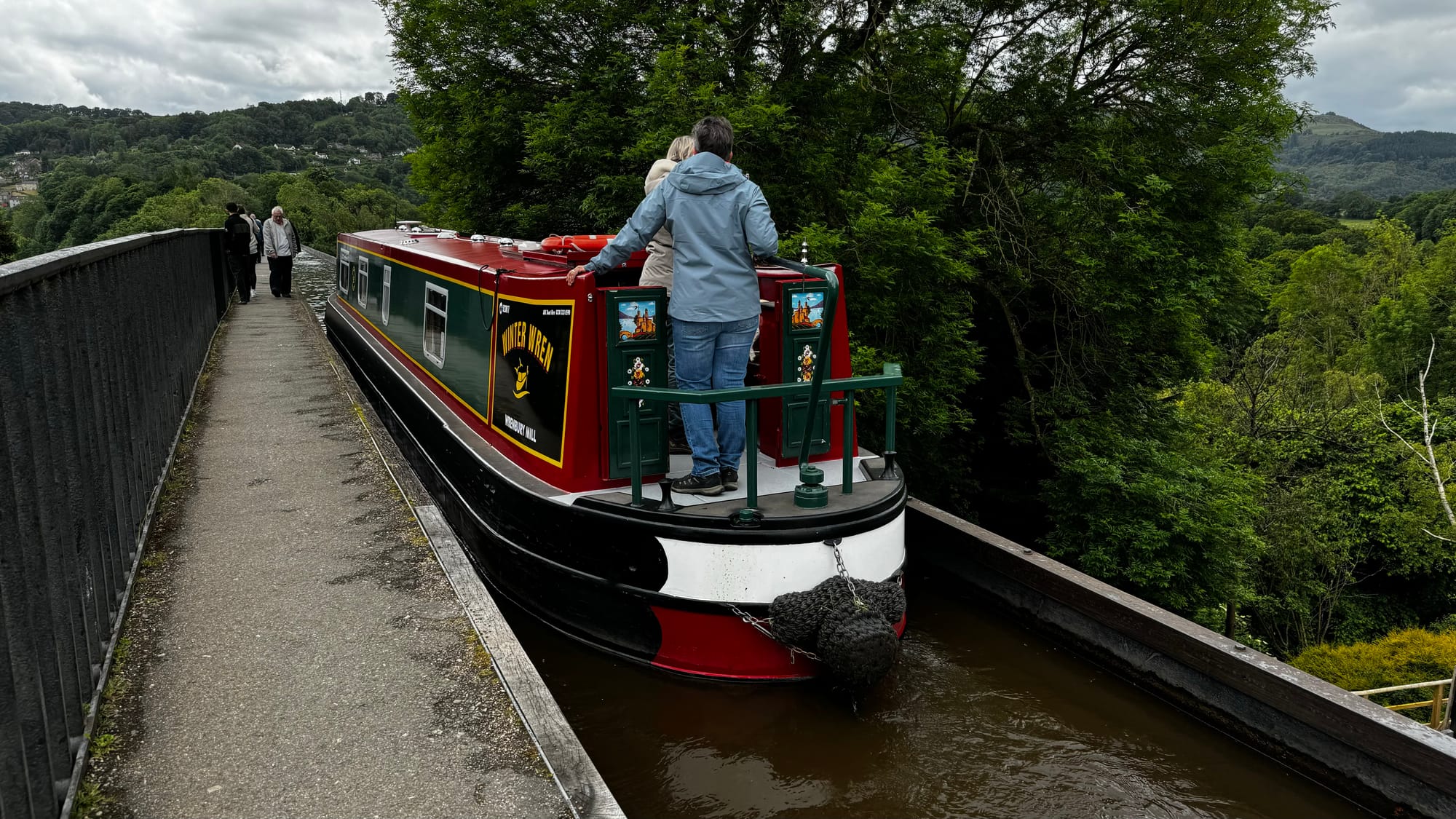
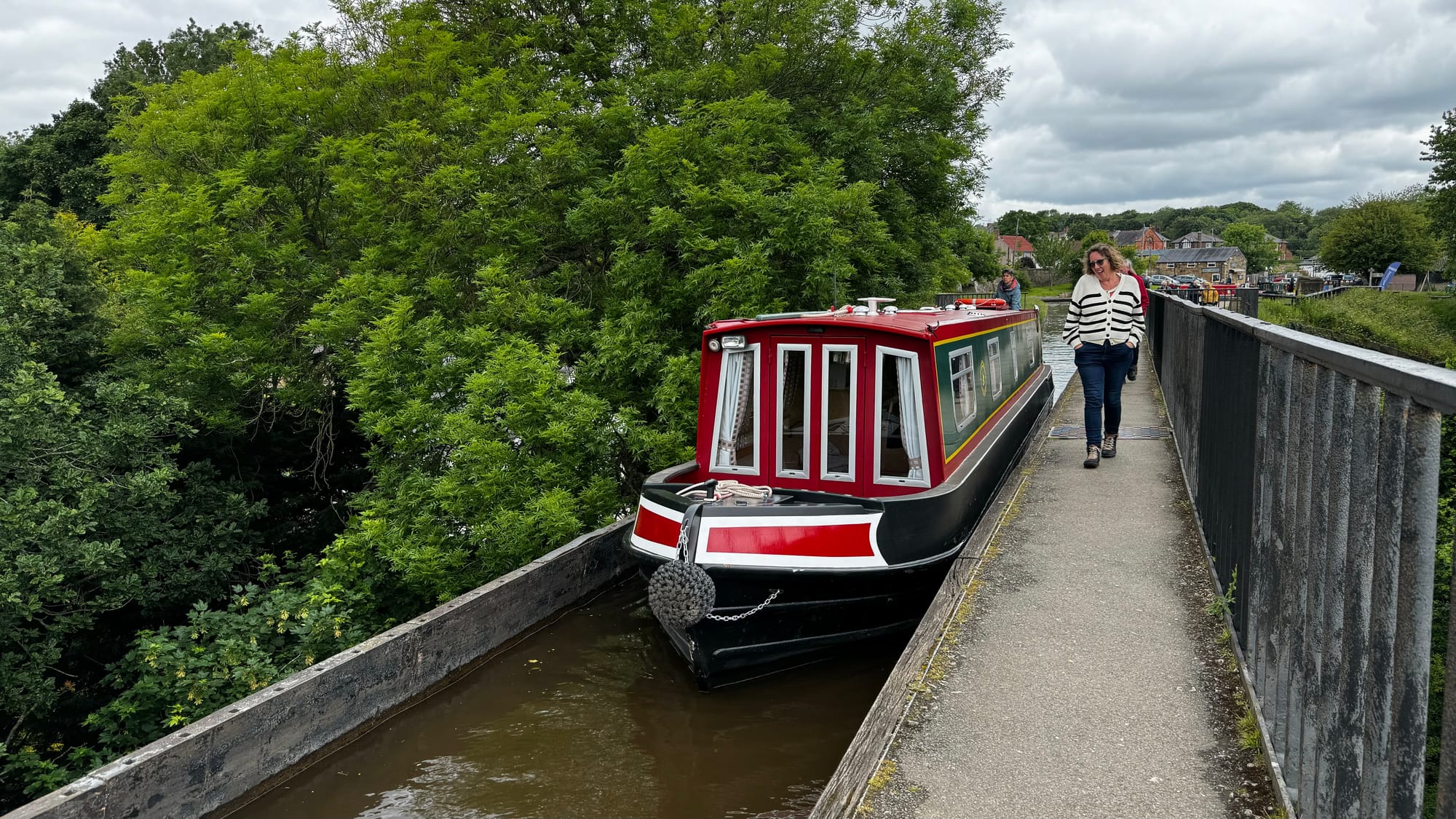
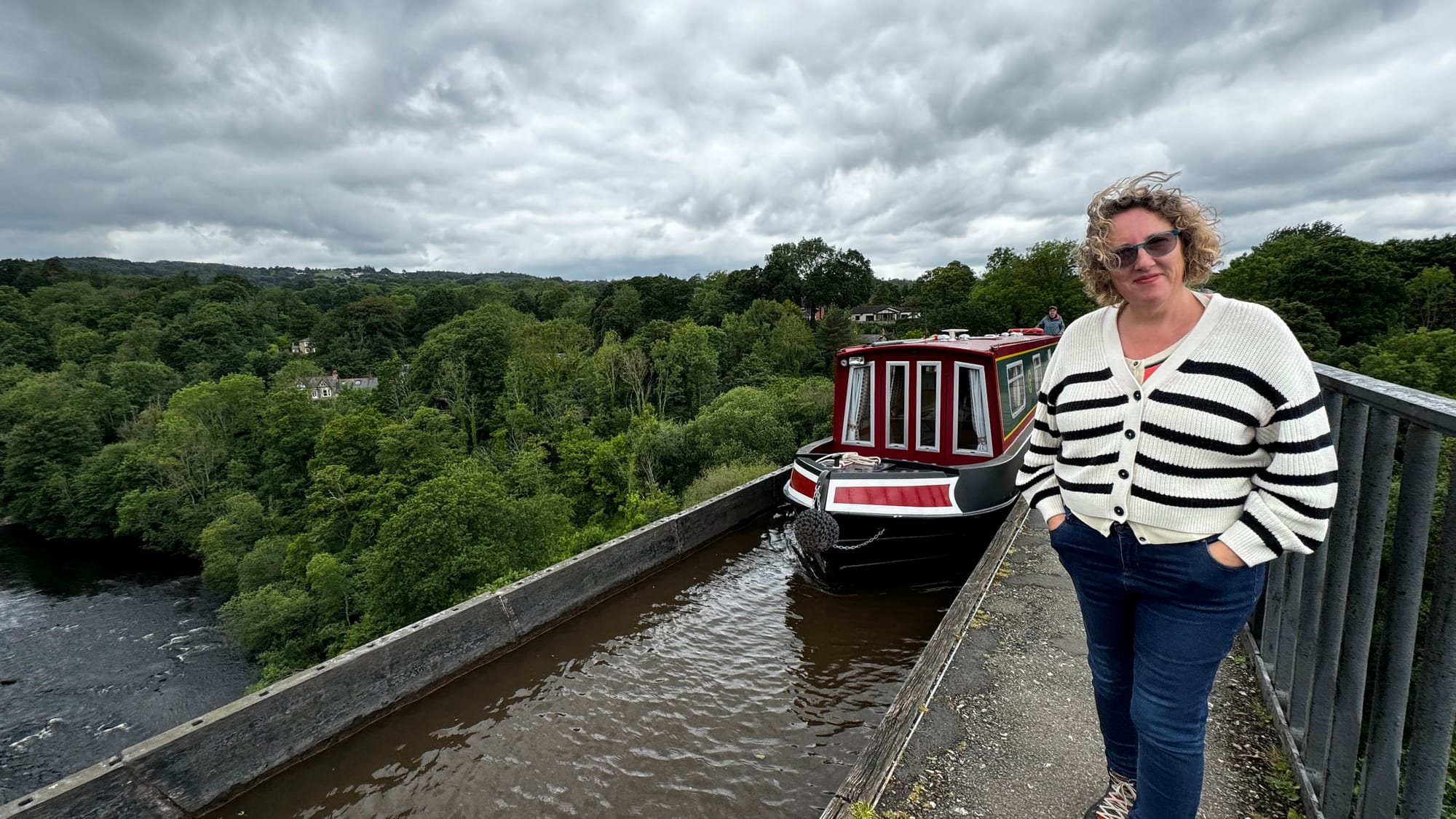
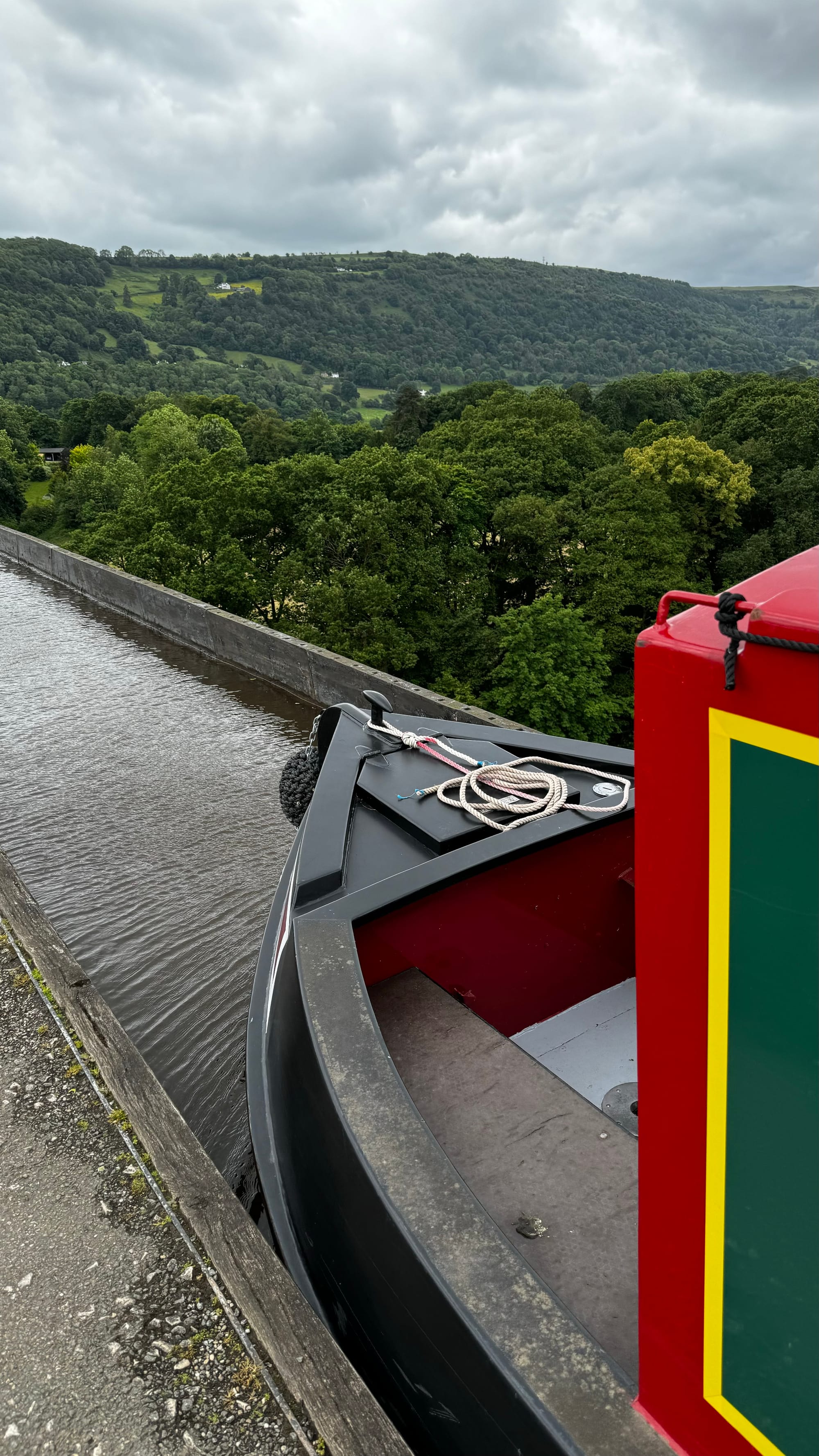
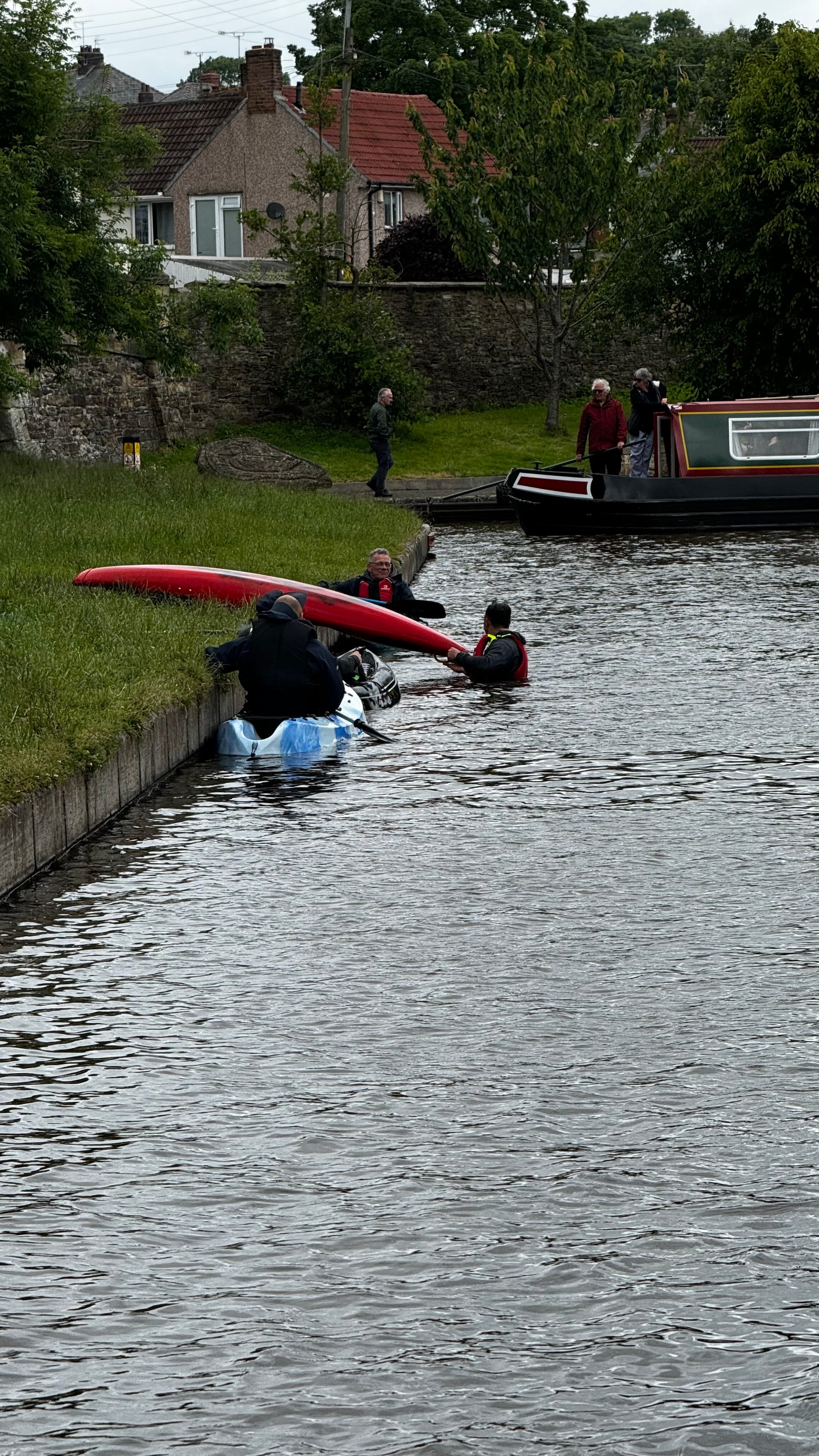
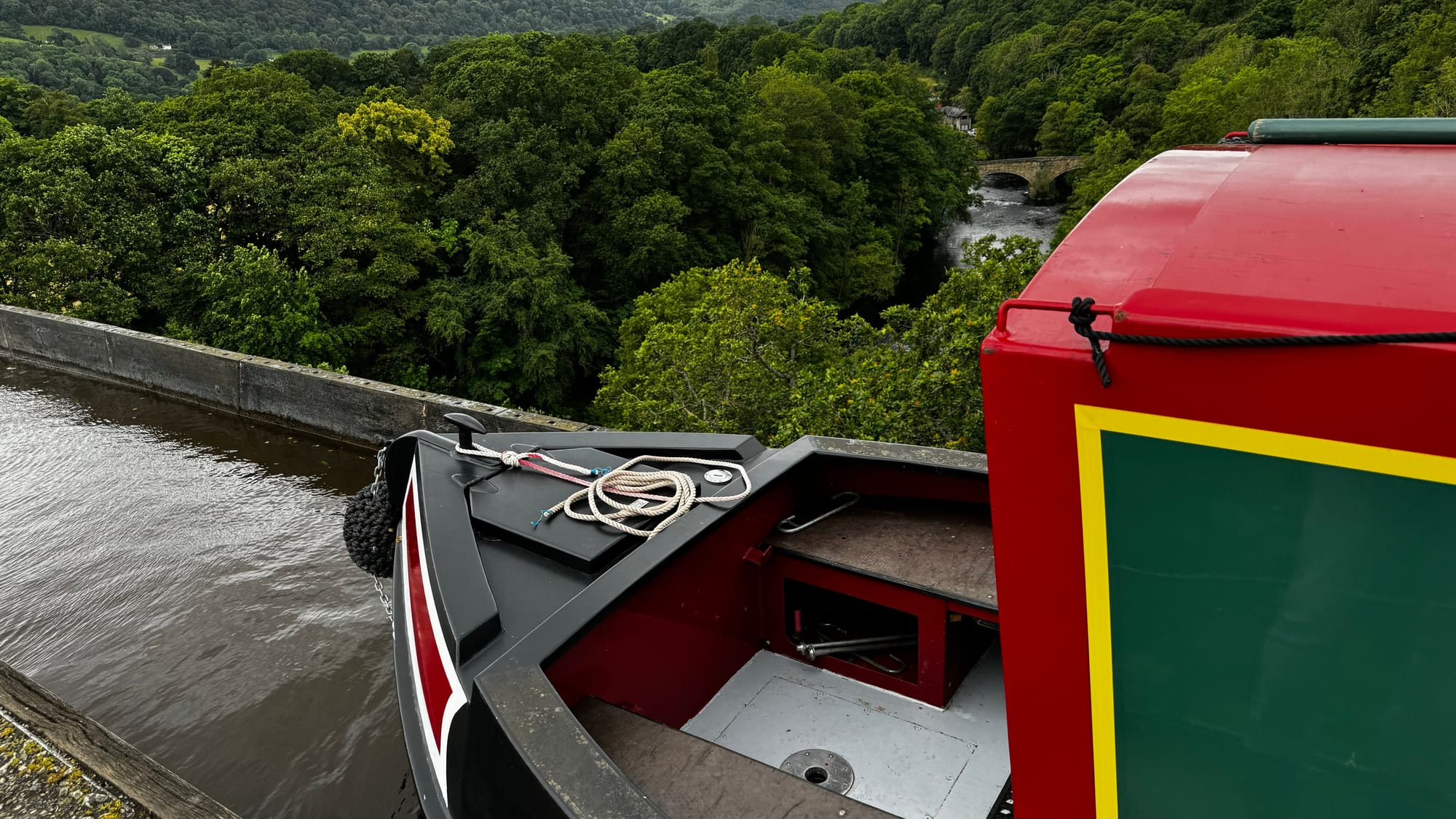
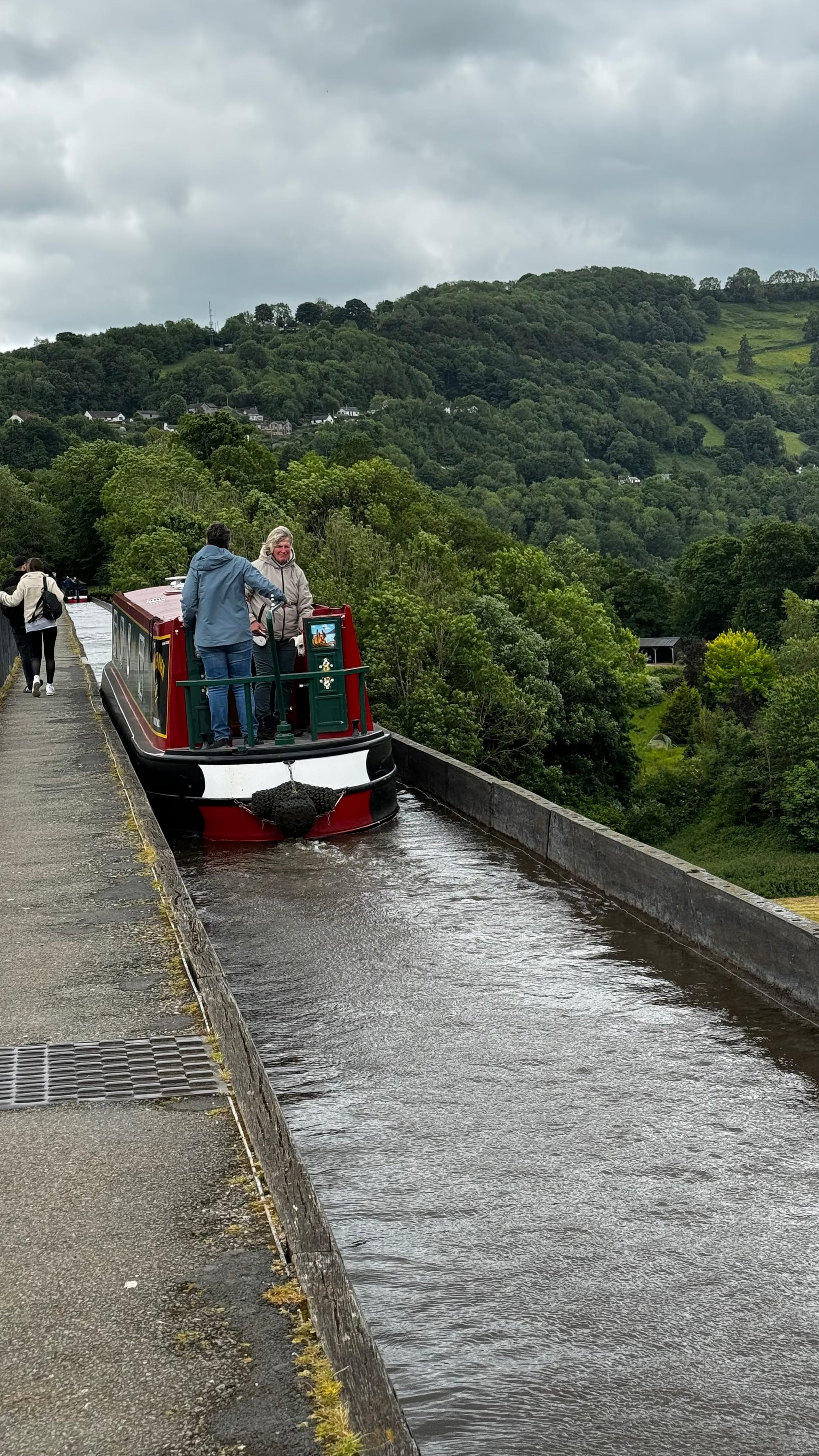
Views of the aqueduct. It was 14C outside and windy, no idea why the kayaker was in the water!
Wednesday, we took Otto out and then left him behind to explore more of the village on foot (he's a keen walker but a little slow over big distances). We headed over to St. Boniface's church to see a few of the locals inside. Of particular note, Sir Hugh Calveley from the 14C, over 7ft tall, who founded the church and Sir George Beeston, who lived to over 100 and served as a Fleet Admiral for four different monarchs, including defeating a Spanish Armada at 78 years of age!
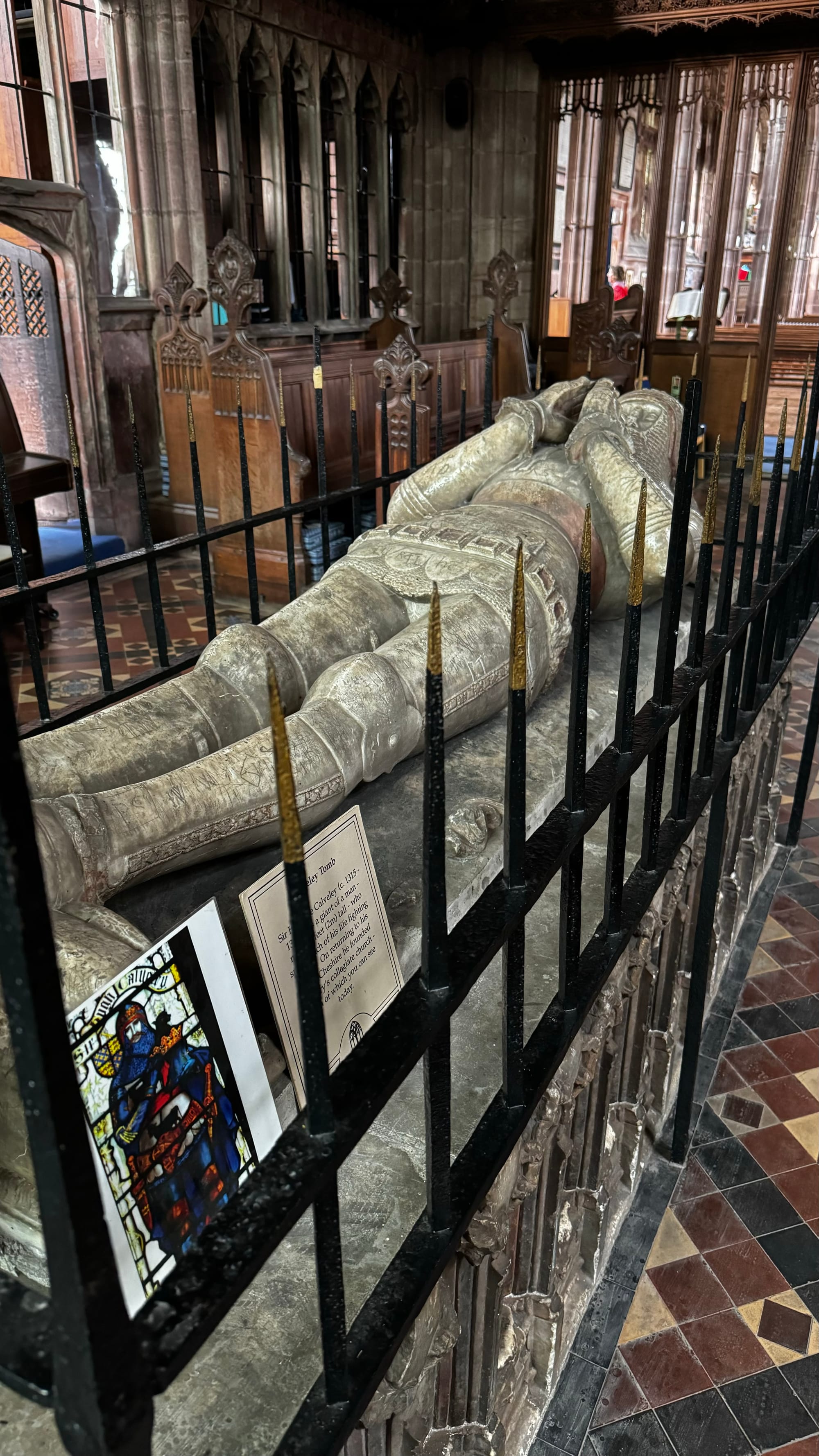
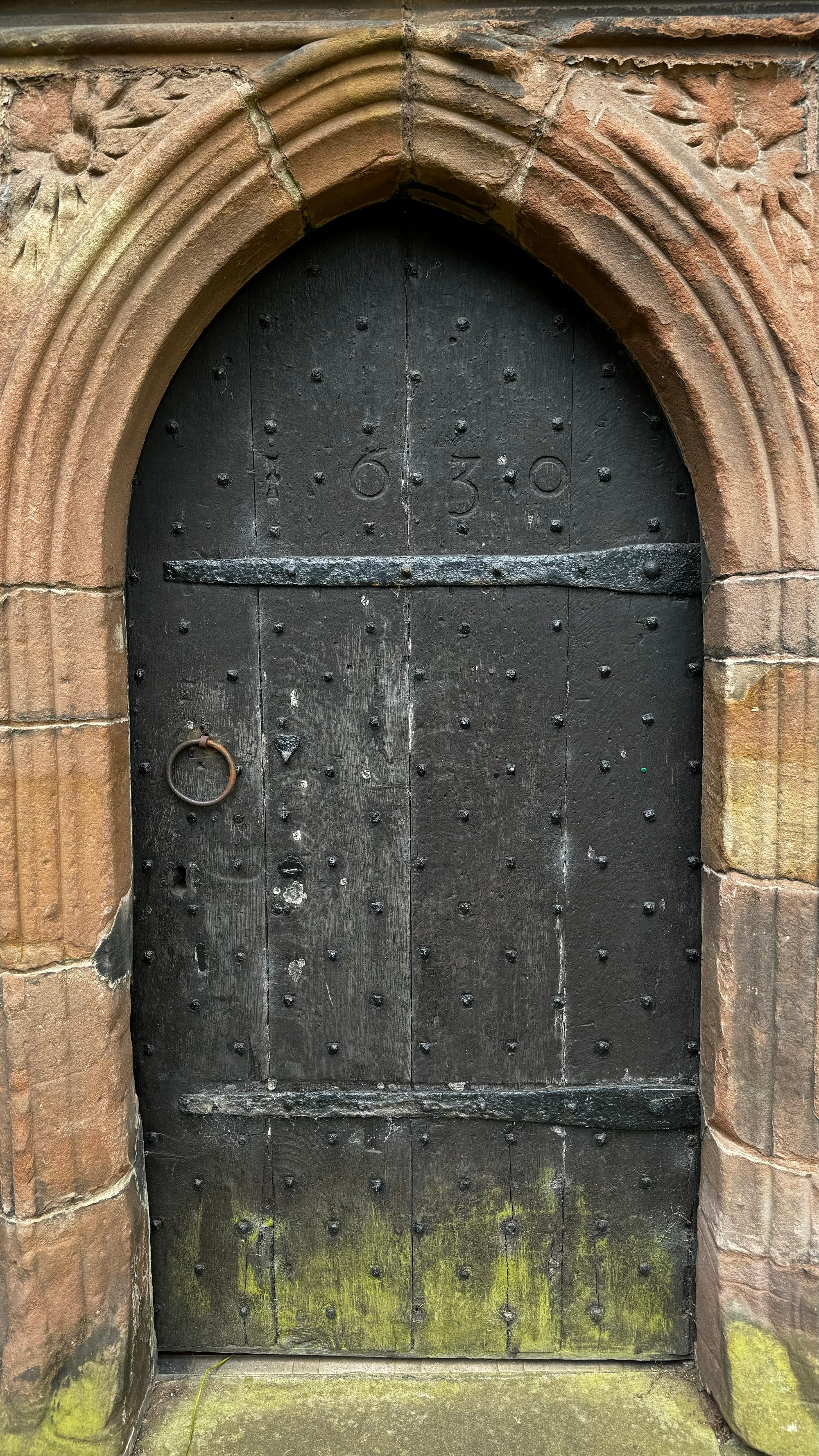
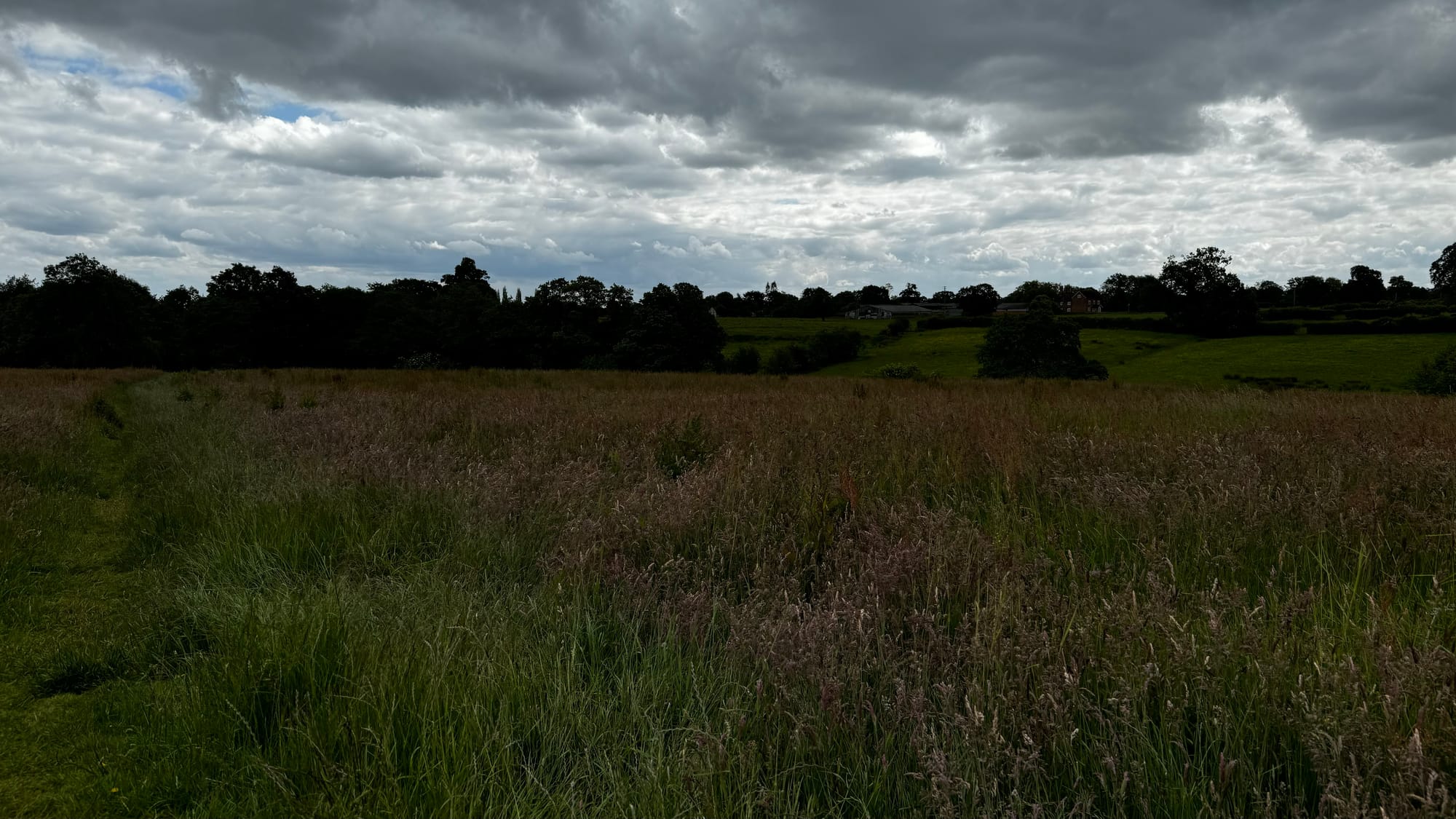

We also visited the local mill to watch the ducks flirt with danger and the mill race.
On Thursday, it was time for history of a different kind: the Hack Green Secret Nuclear Bunker. This was built as a radar station and situated on land south of Nantwich, which was used to construct a decoy of Crewe Railway Station to trick German bombers into dropping their bombs on the fake location.
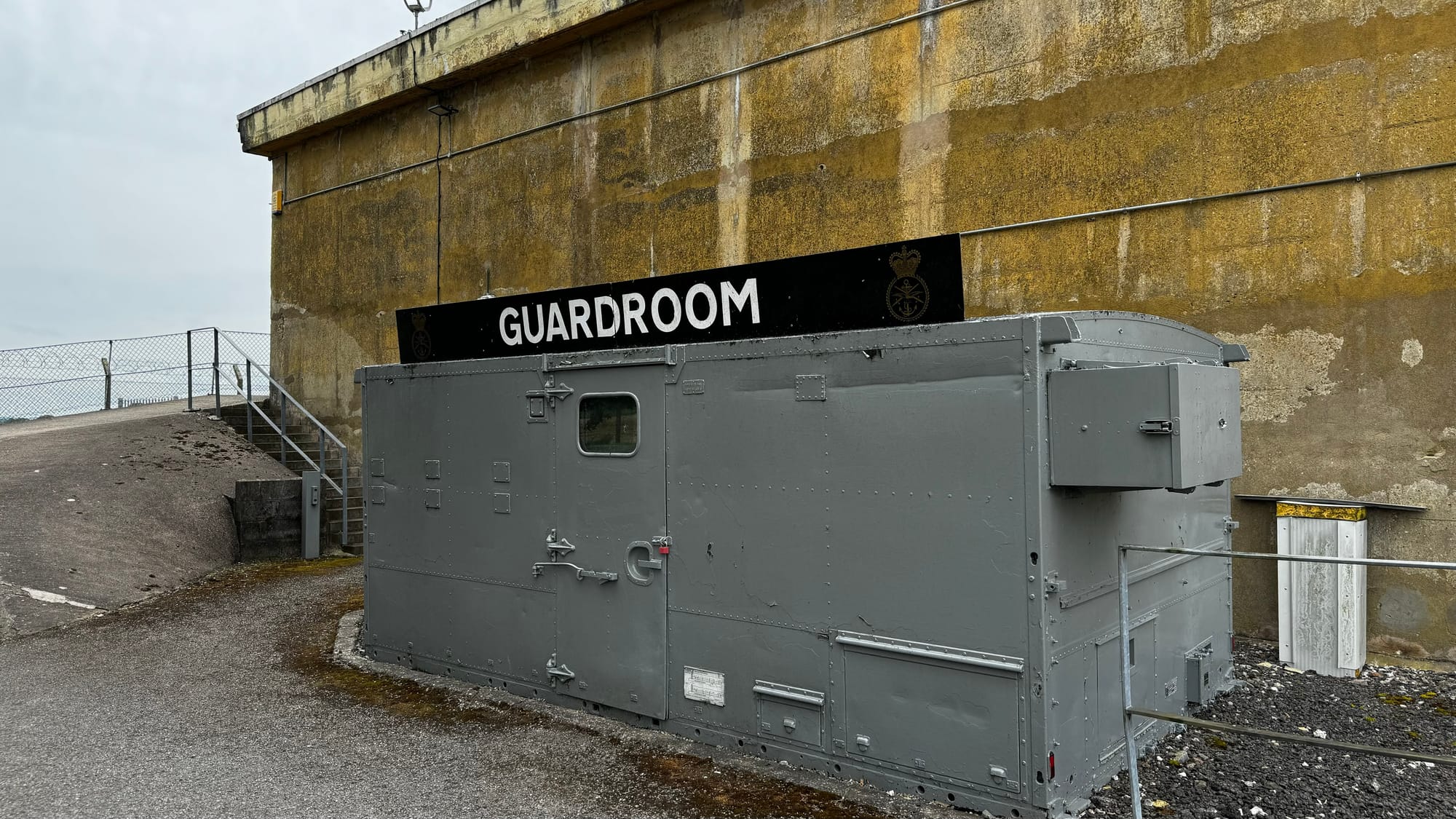
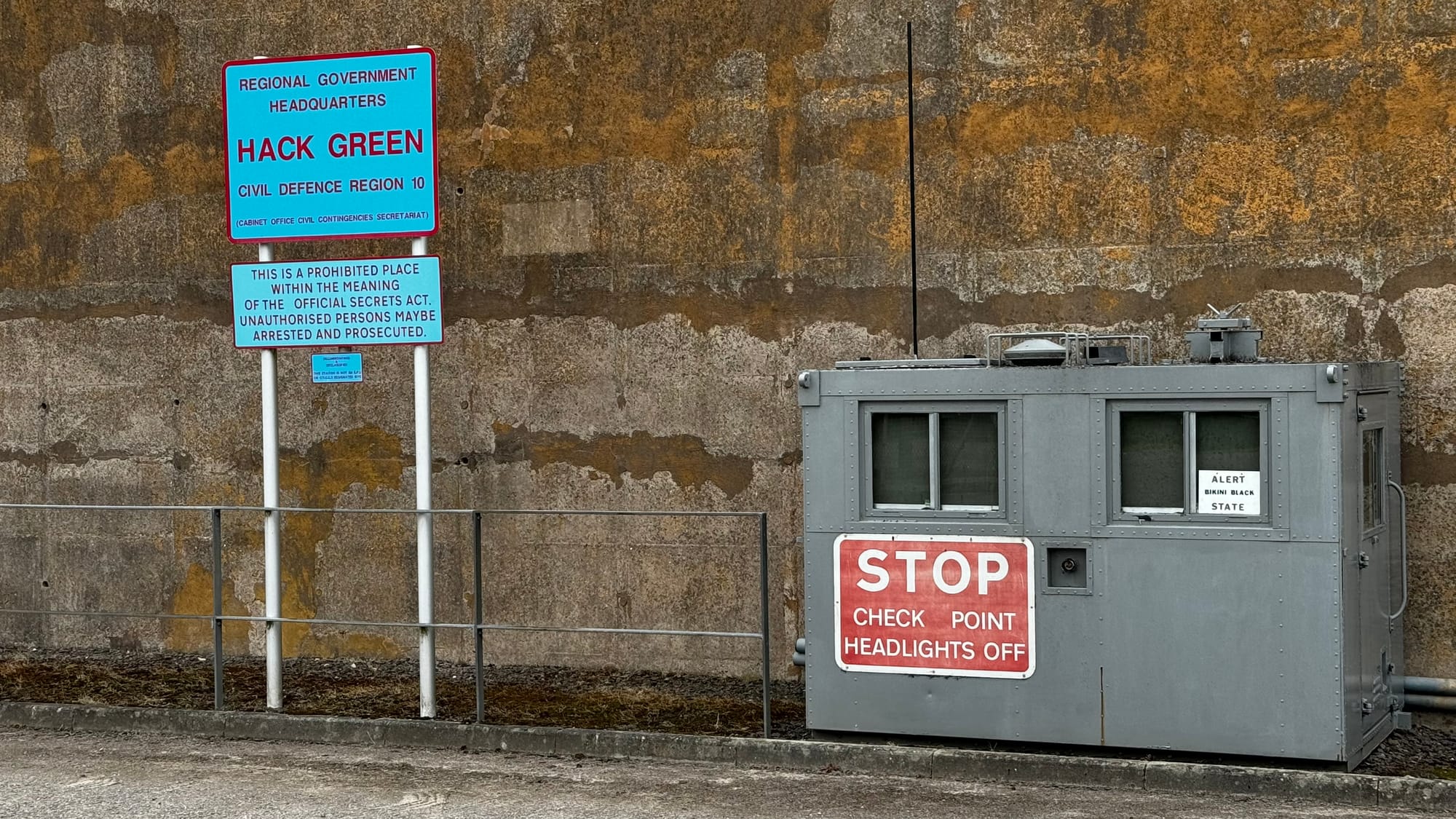
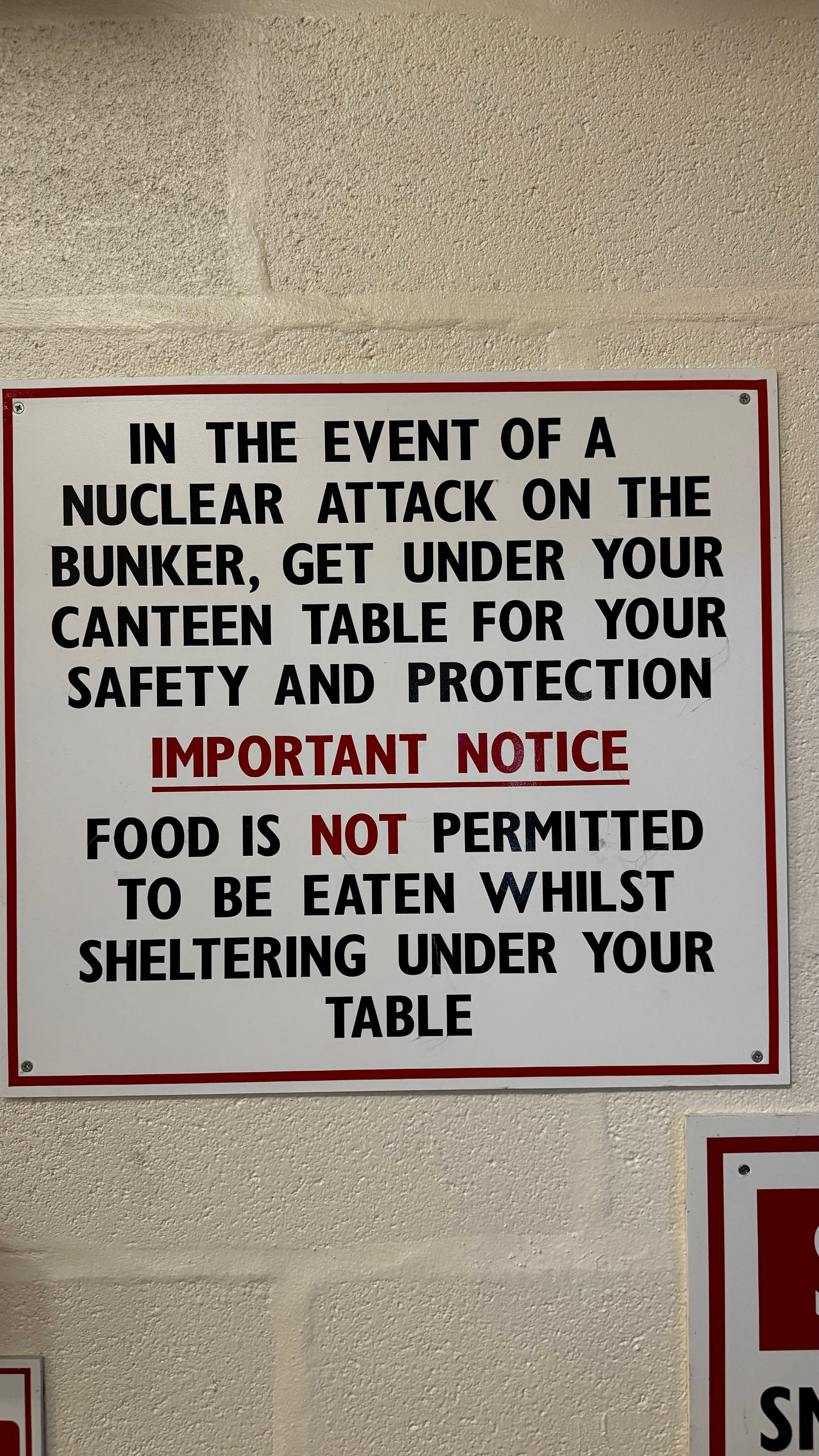
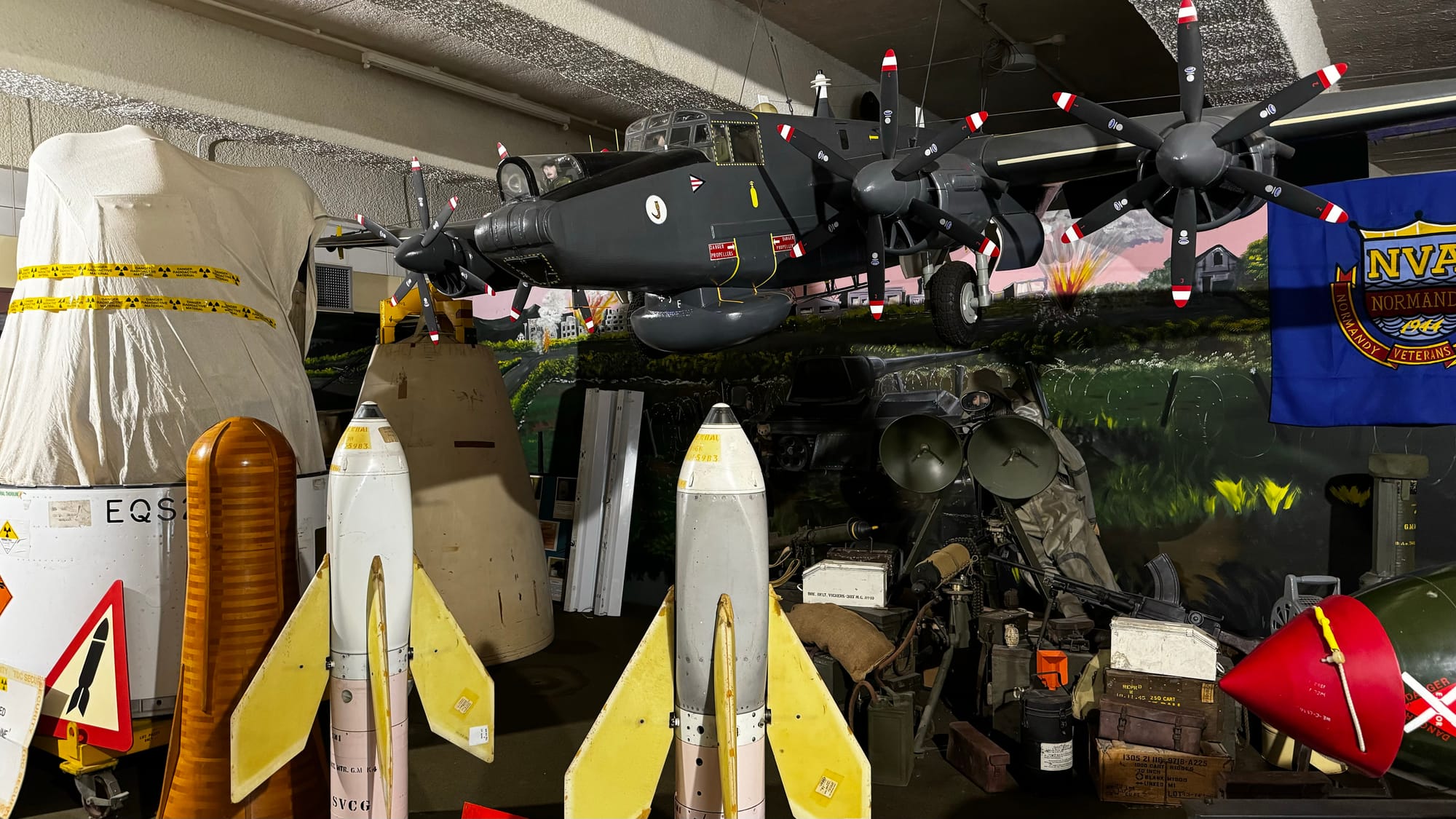
During the Cold War, it was converted into a bunker against nuclear attack – not a place missiles were fired from, but rather a hardened administrative centre that was used to both track incoming missiles but also act as a local civil administrative regional centre in the case of nuclear war. Today, it's a very eclectic but interesting museum with a very comprehensive display of Cold War era artifacts, history, news cuttings, recordings and all in all, worth the visit.
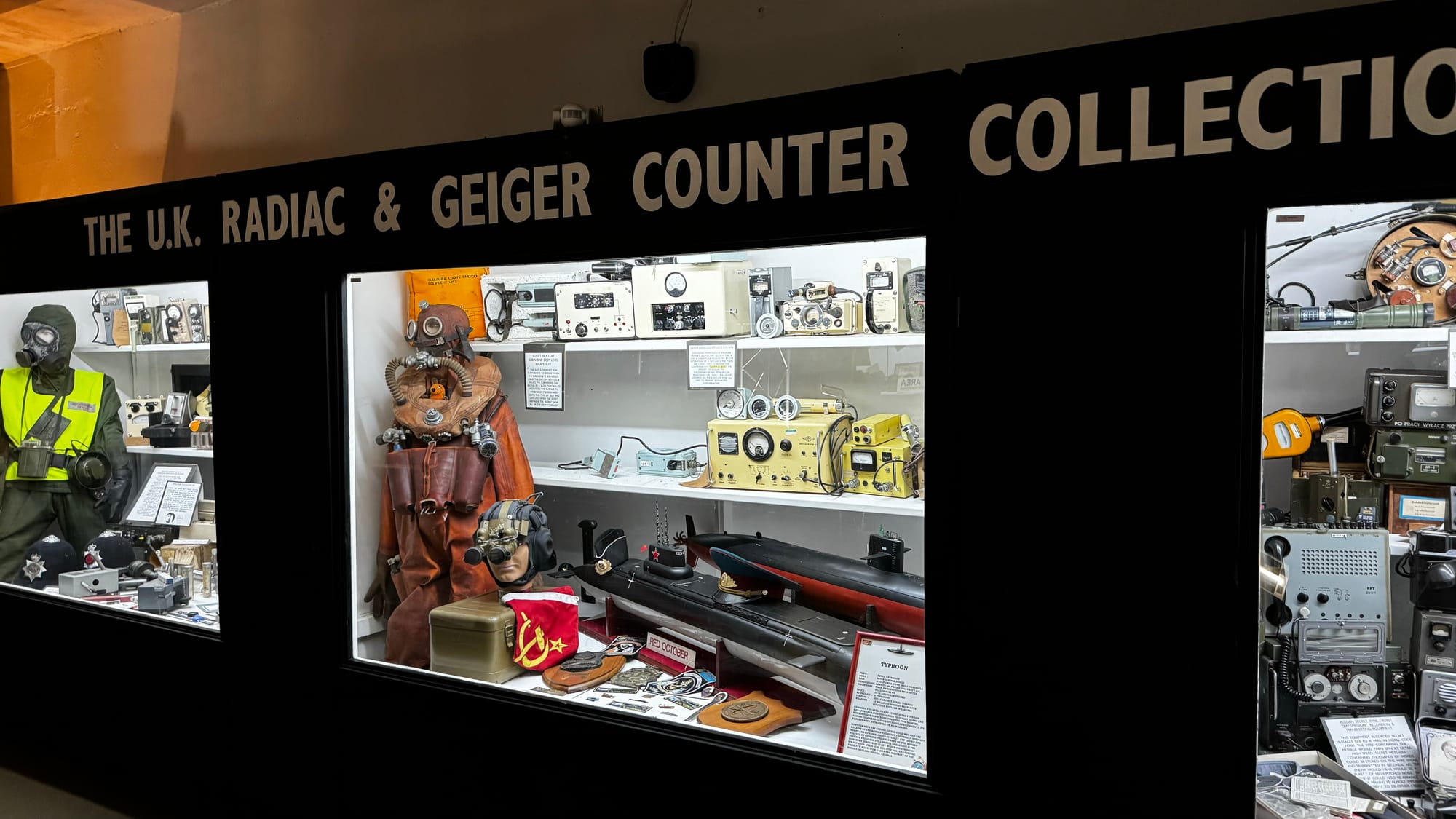
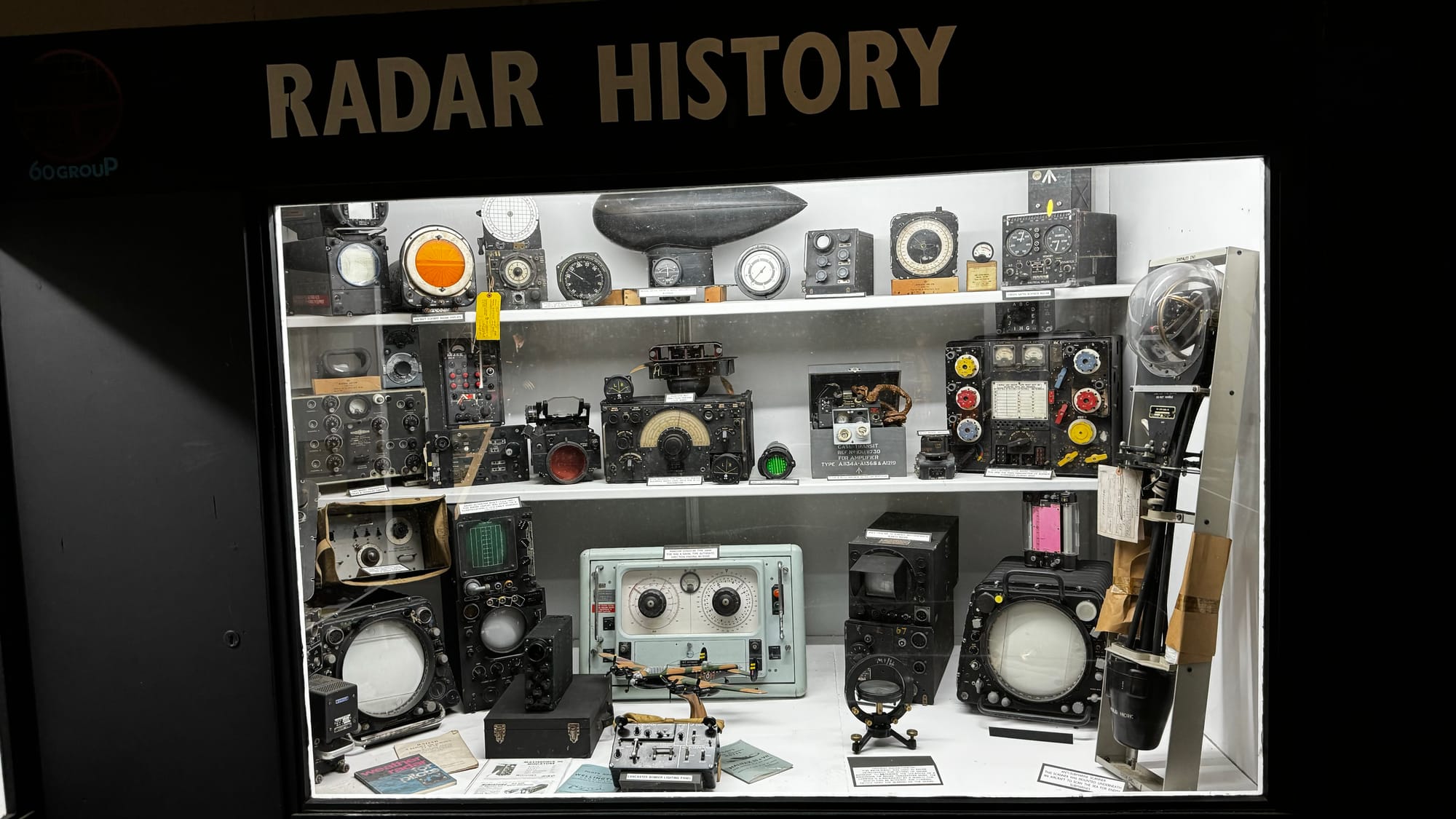
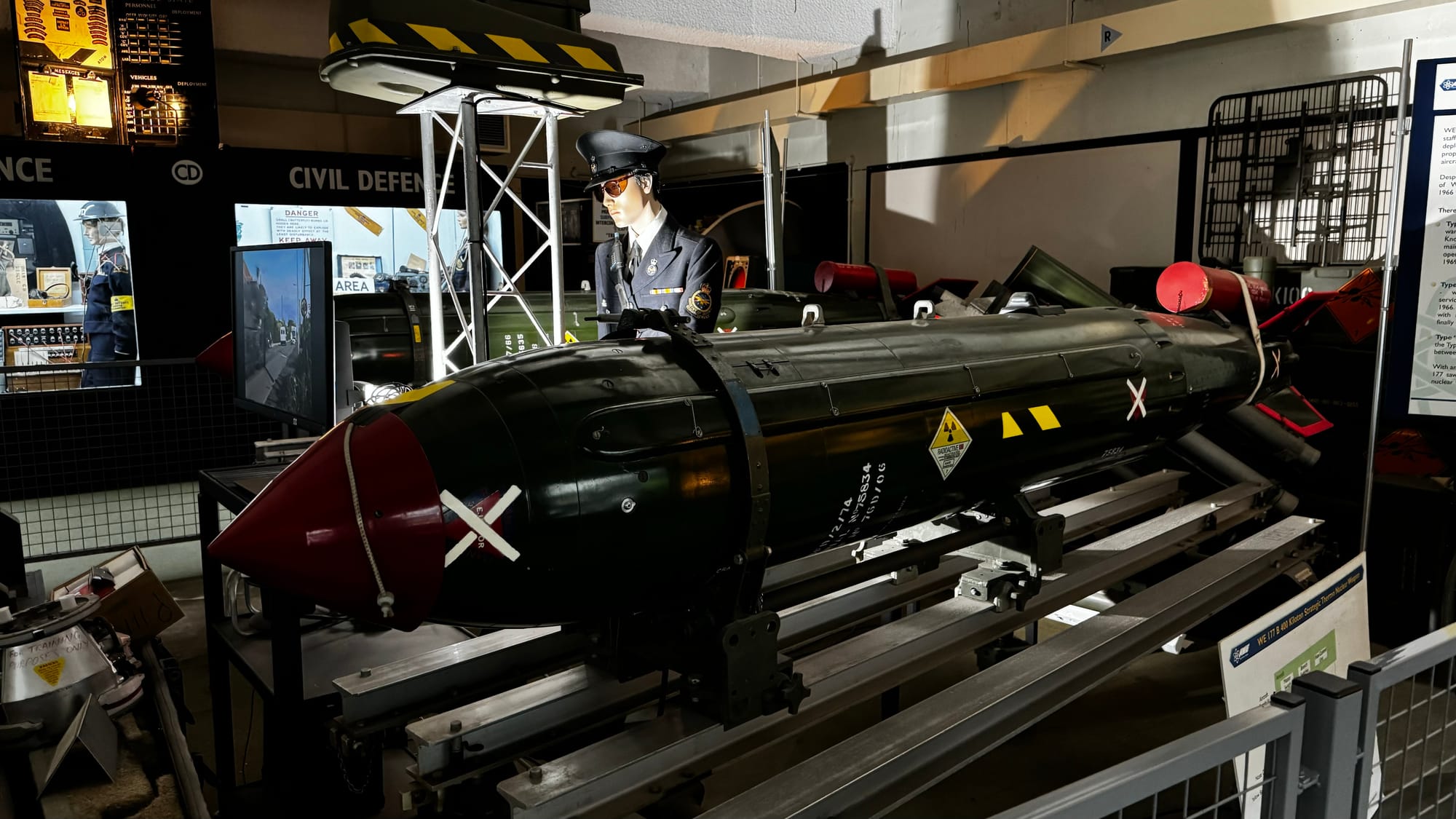
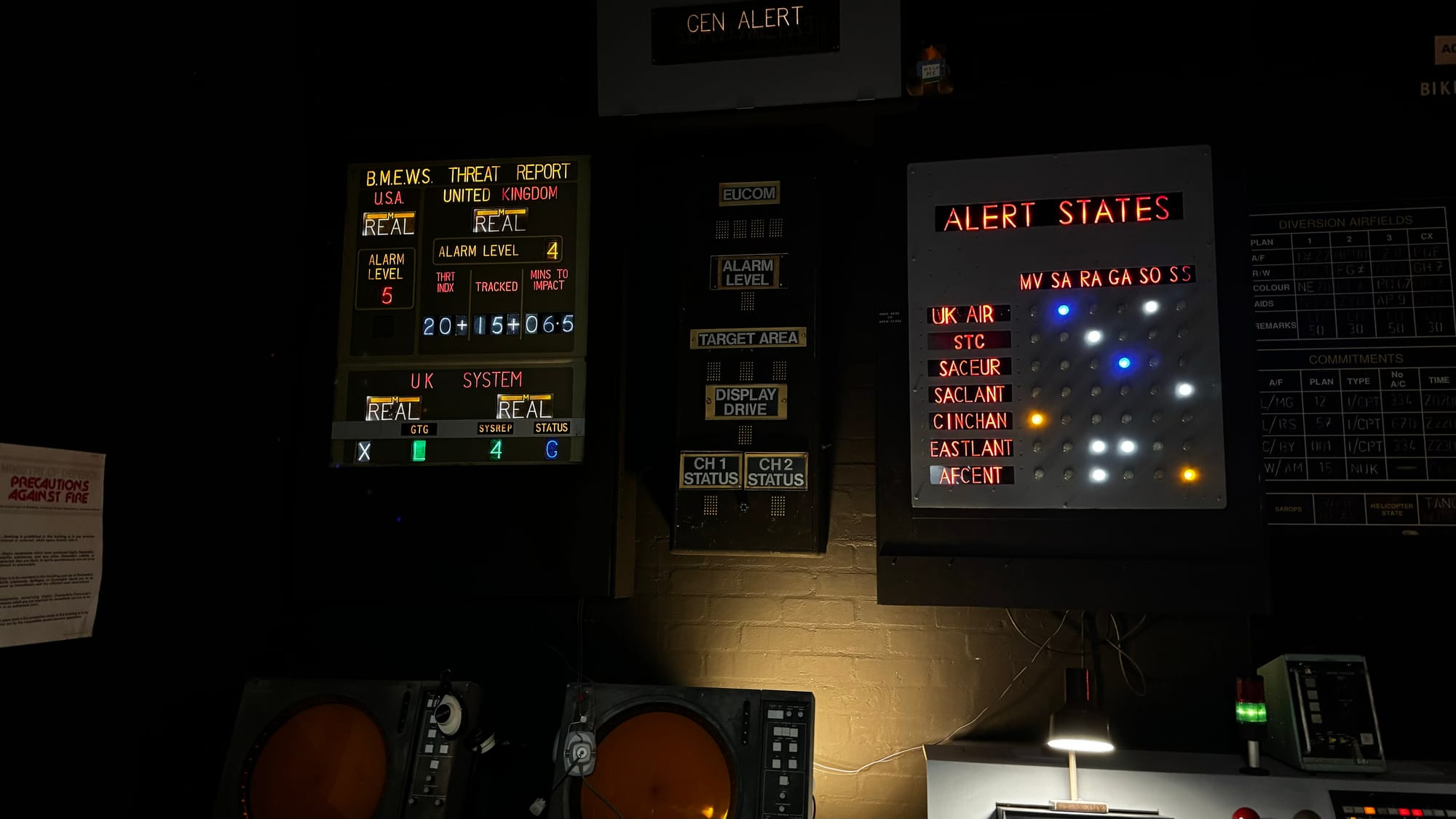
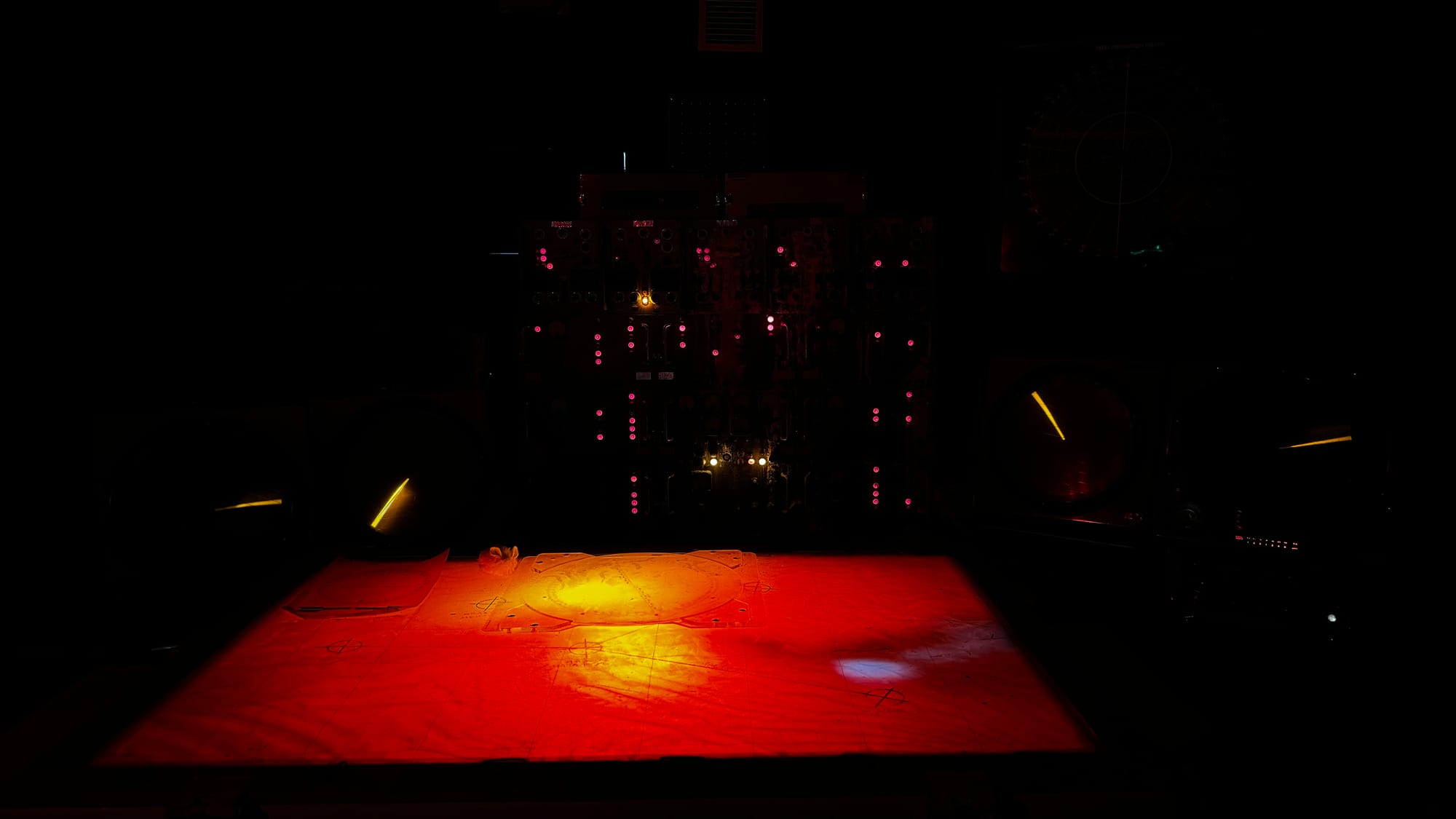
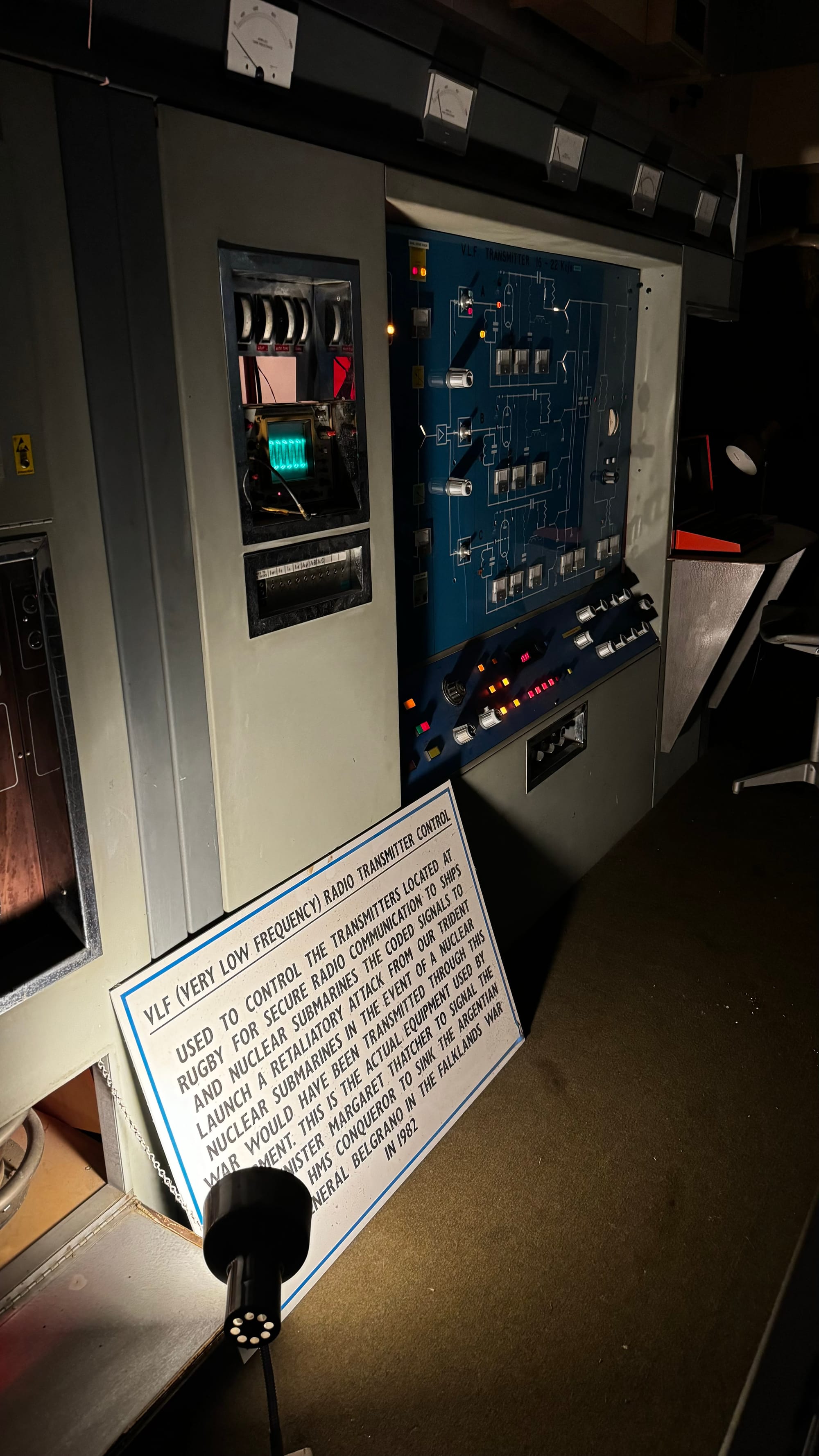
Geiger counter collections, radar history, UK missiles—there is lots of history here. The last item (with the big sign on the ground) is a radio for talking to submarines. This one is the actual unit that issued Maggie Thatcher's orders for the sinking of General Belgrano during the Falklands War.
Friday was the last day of the house sit, so we spent it at home in the morning, tidying and catching up with writing and getting a head start on the blog because of travel commitments.
Which brings us to Saturday! We left the house sit and caught the train to Manchester. After finding somewhere to leave the luggage for the day we set off to explore.
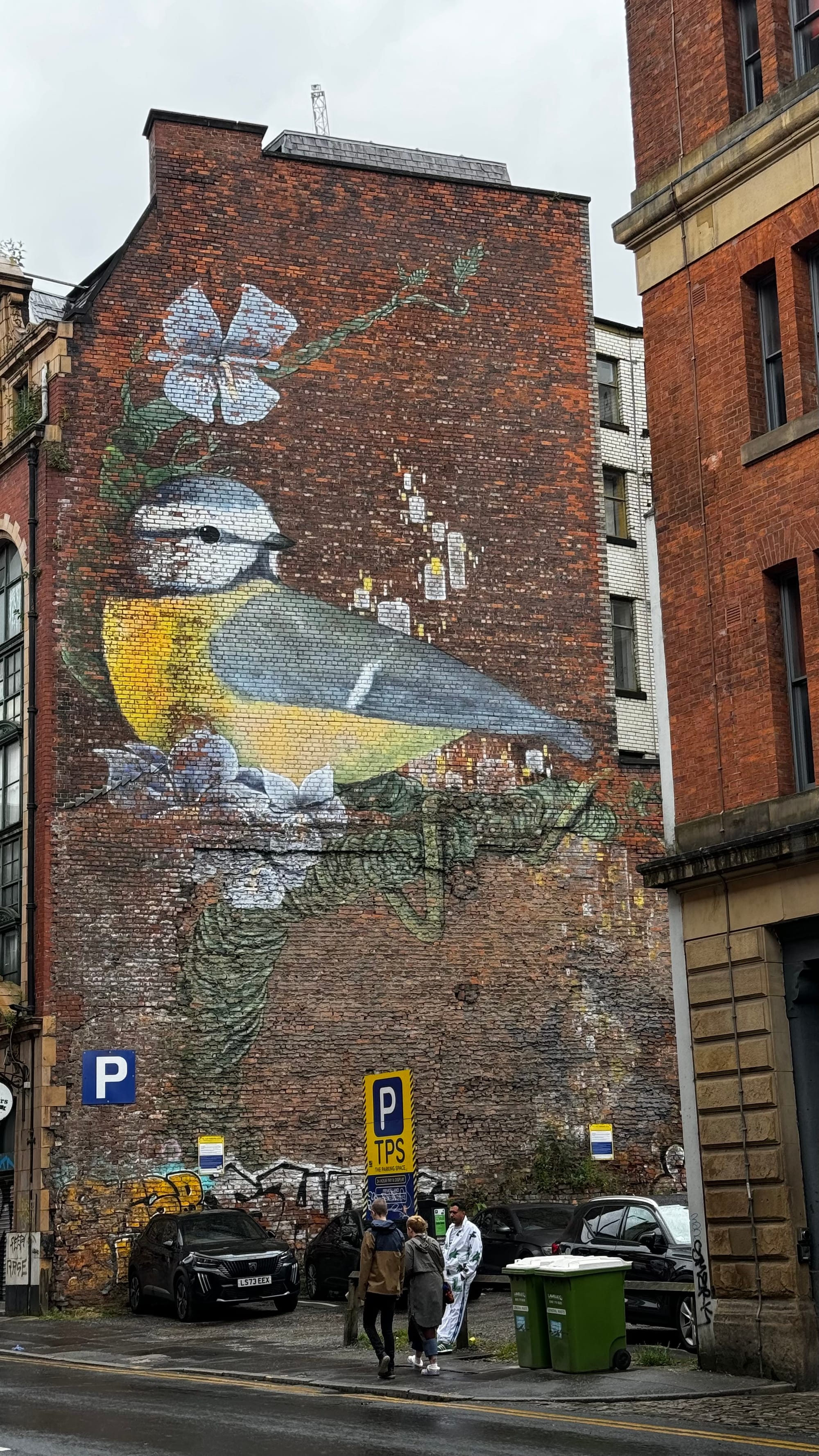
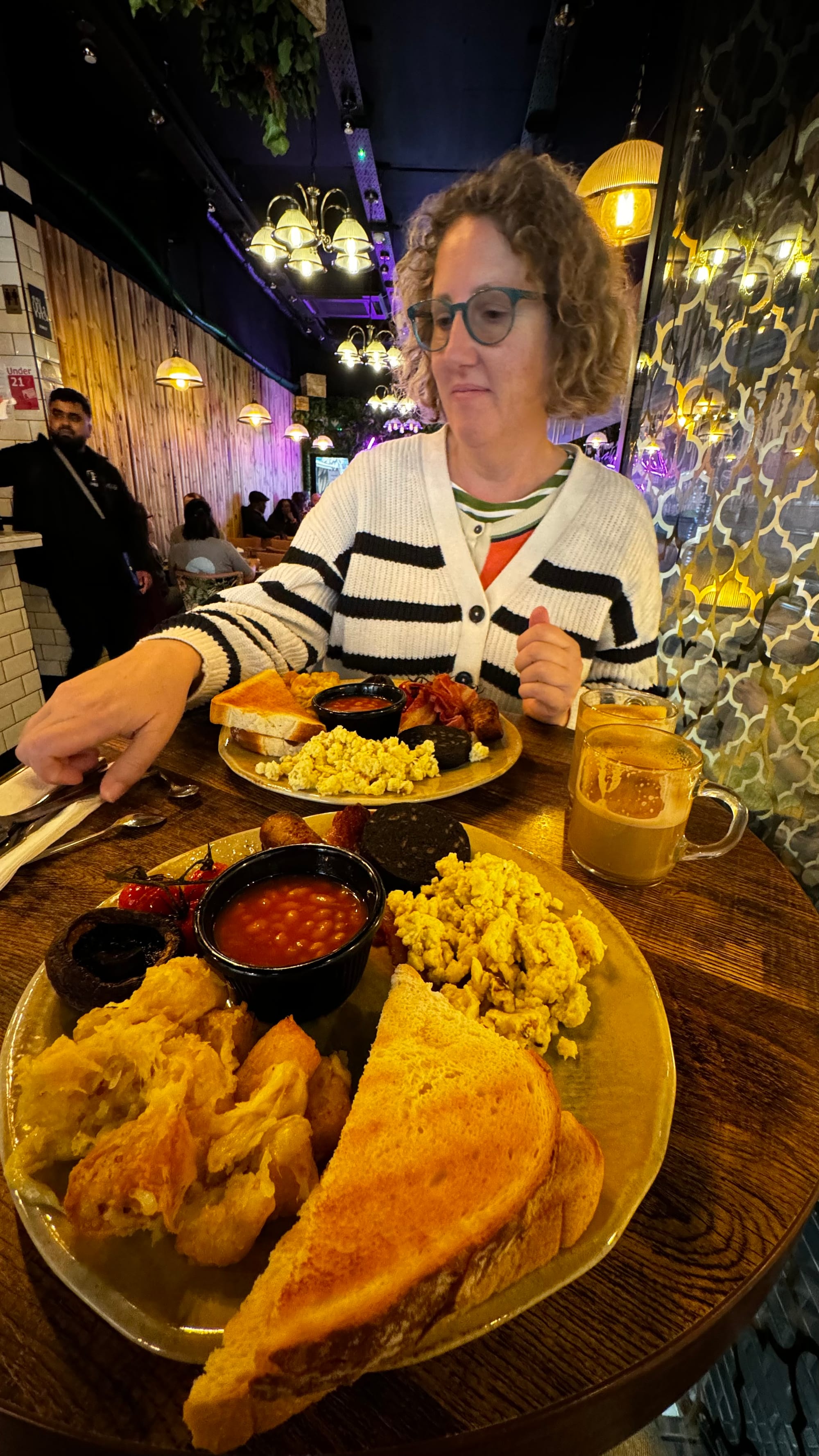
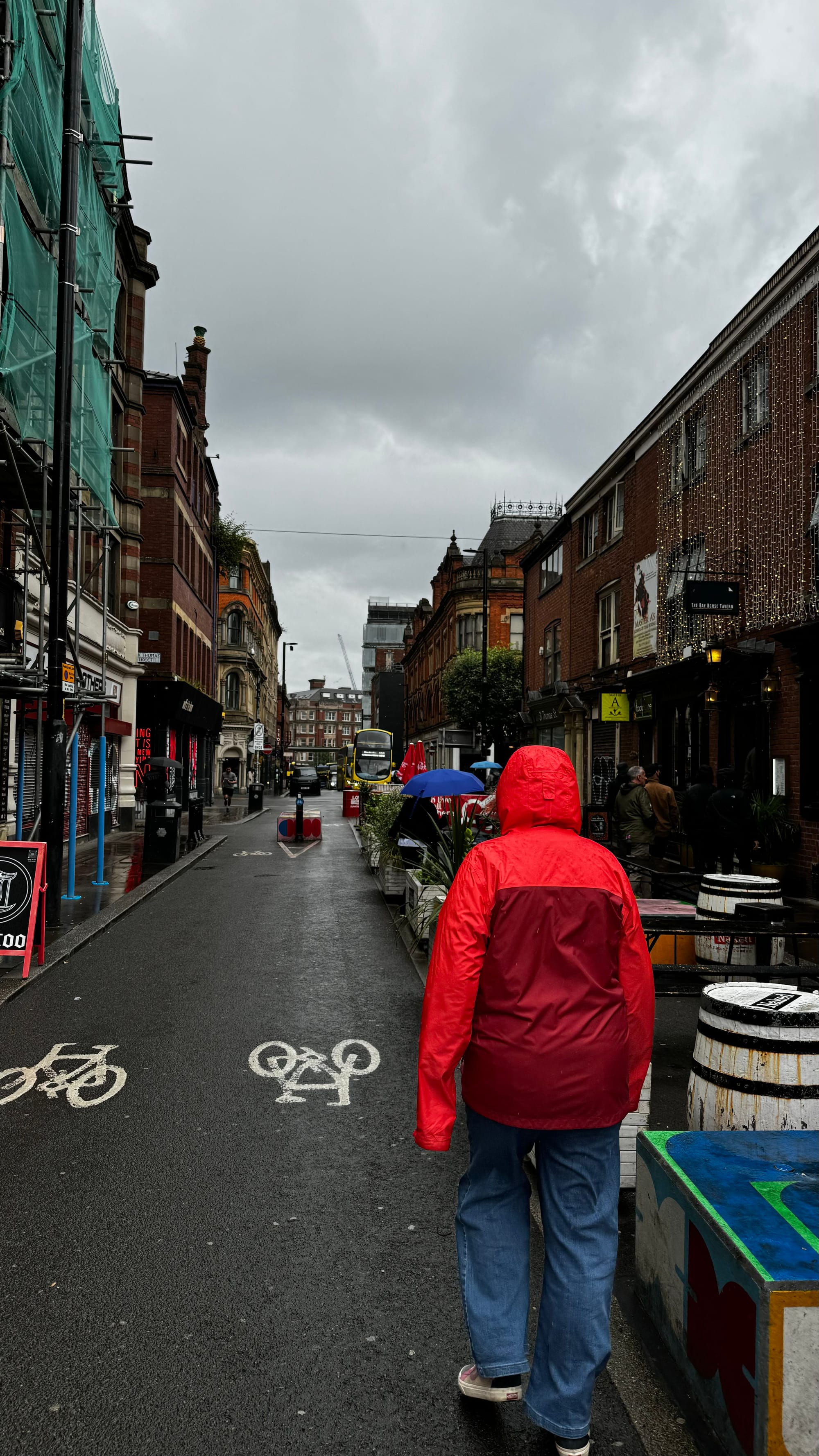
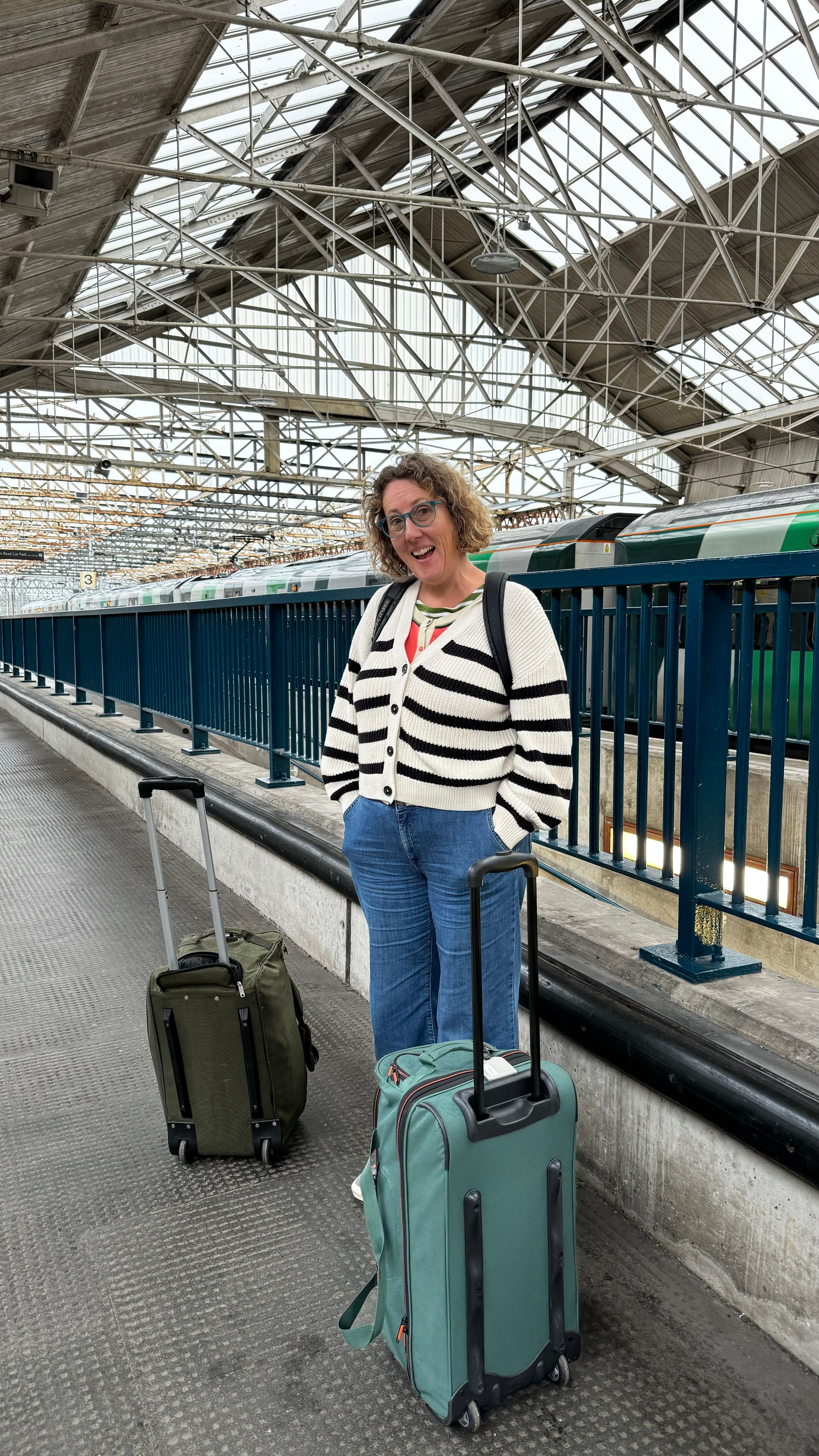
A dreary grey day.
We were amazed at just how busy the city was. There were people everywhere, tourists and locals travelling. We think there were two big concerts in town, but it just felt hectic anyway after 10 days in a sleepy little village.
Our first mission was to find a final English Breakfast as it will be a while before the next one. We found a great sounding cafe, but it had a 30-45 minute queue. We looked up a second cafe. That one had a queue. We tried a third cafe, that one had a queue as well. Finally on our fourth attempt, we found somewhere to sit.
We had no real plans for Manchester so turned to our favourite resource, Atlas Obscura. A top recommendation was the Chetham Library. After checking times and walking there in the rain we made it ready for the 1.30pm tour. The library is the oldest operating public library in the English speaking world and it is quite something to see.
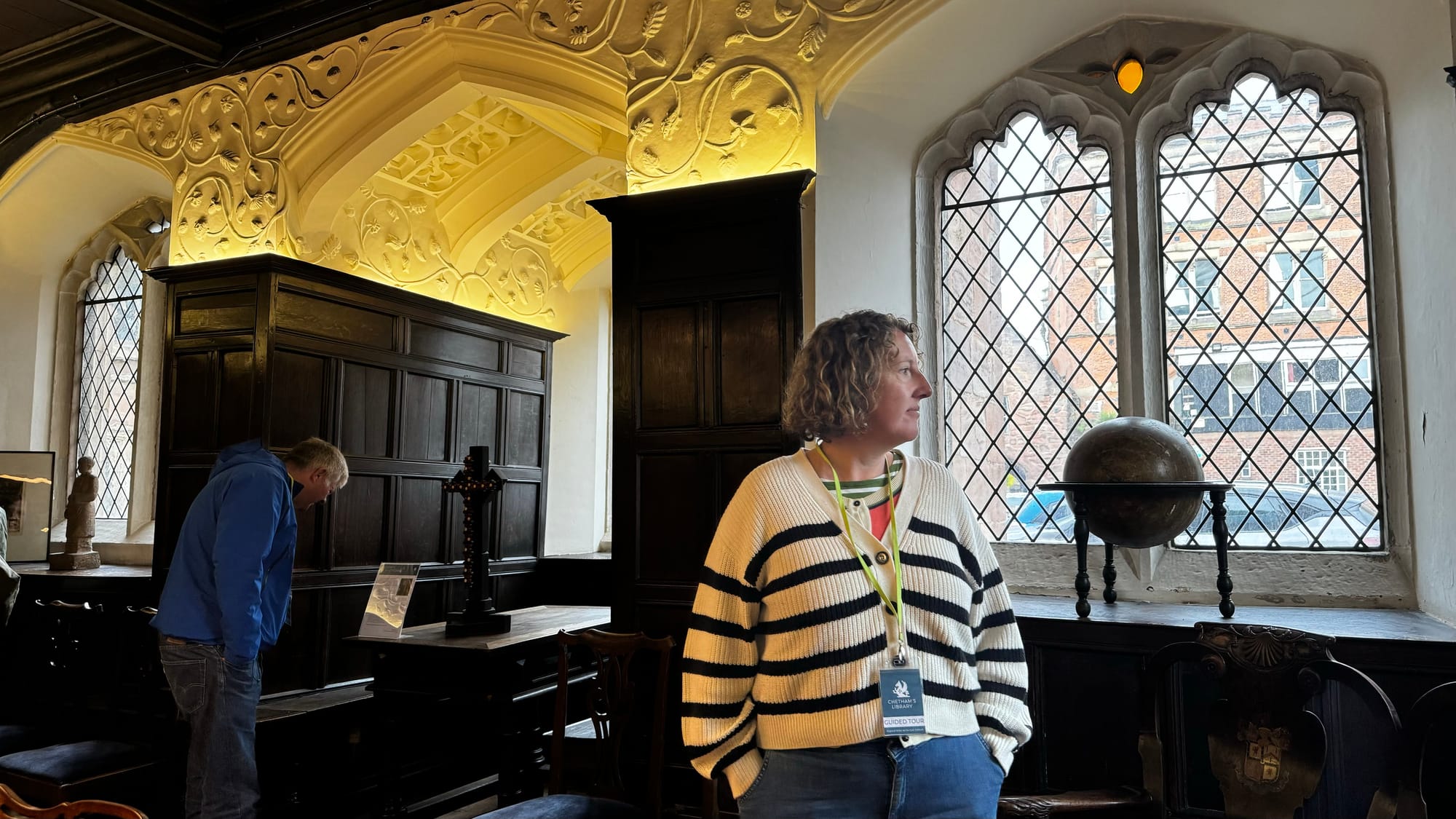
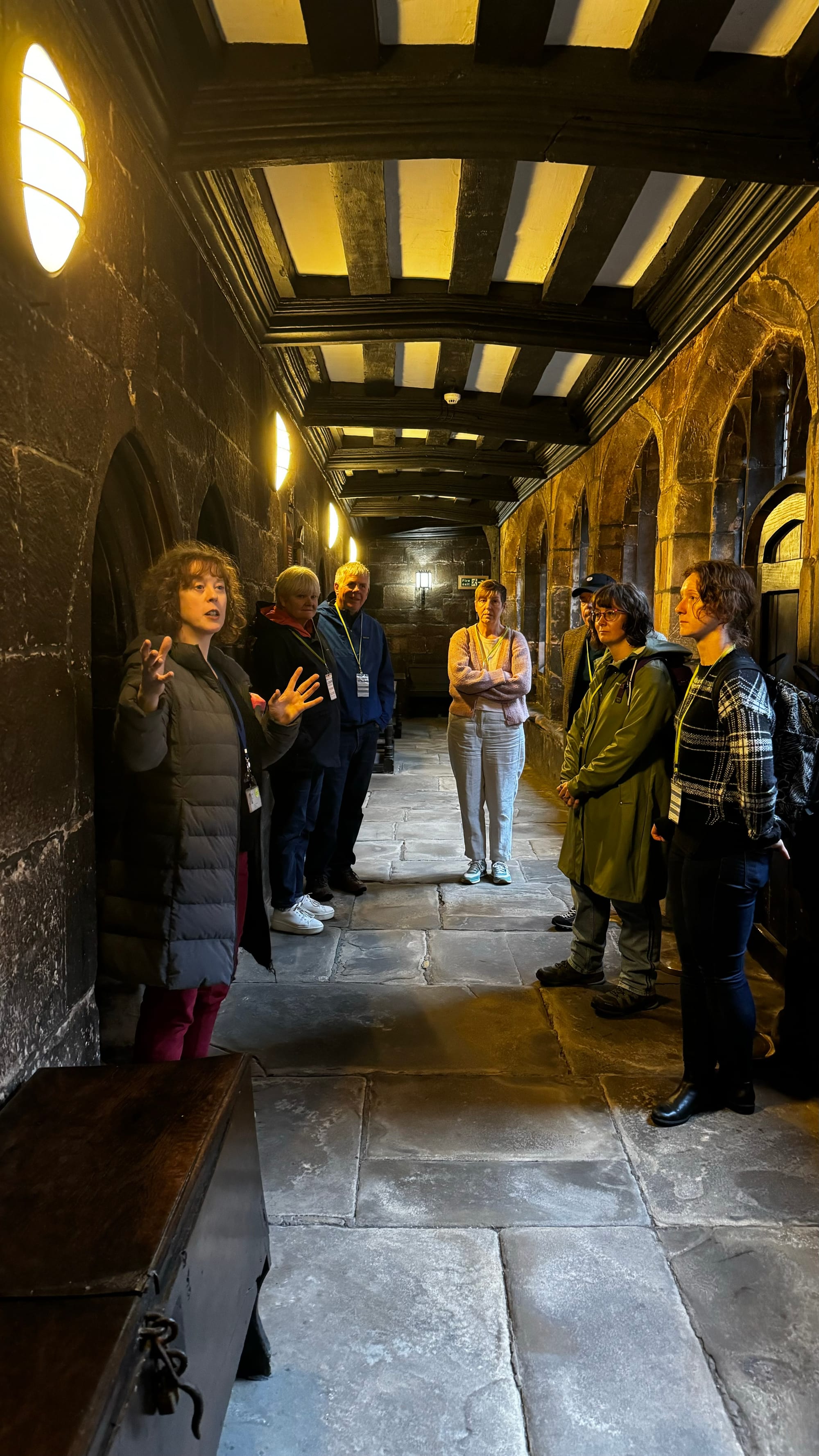
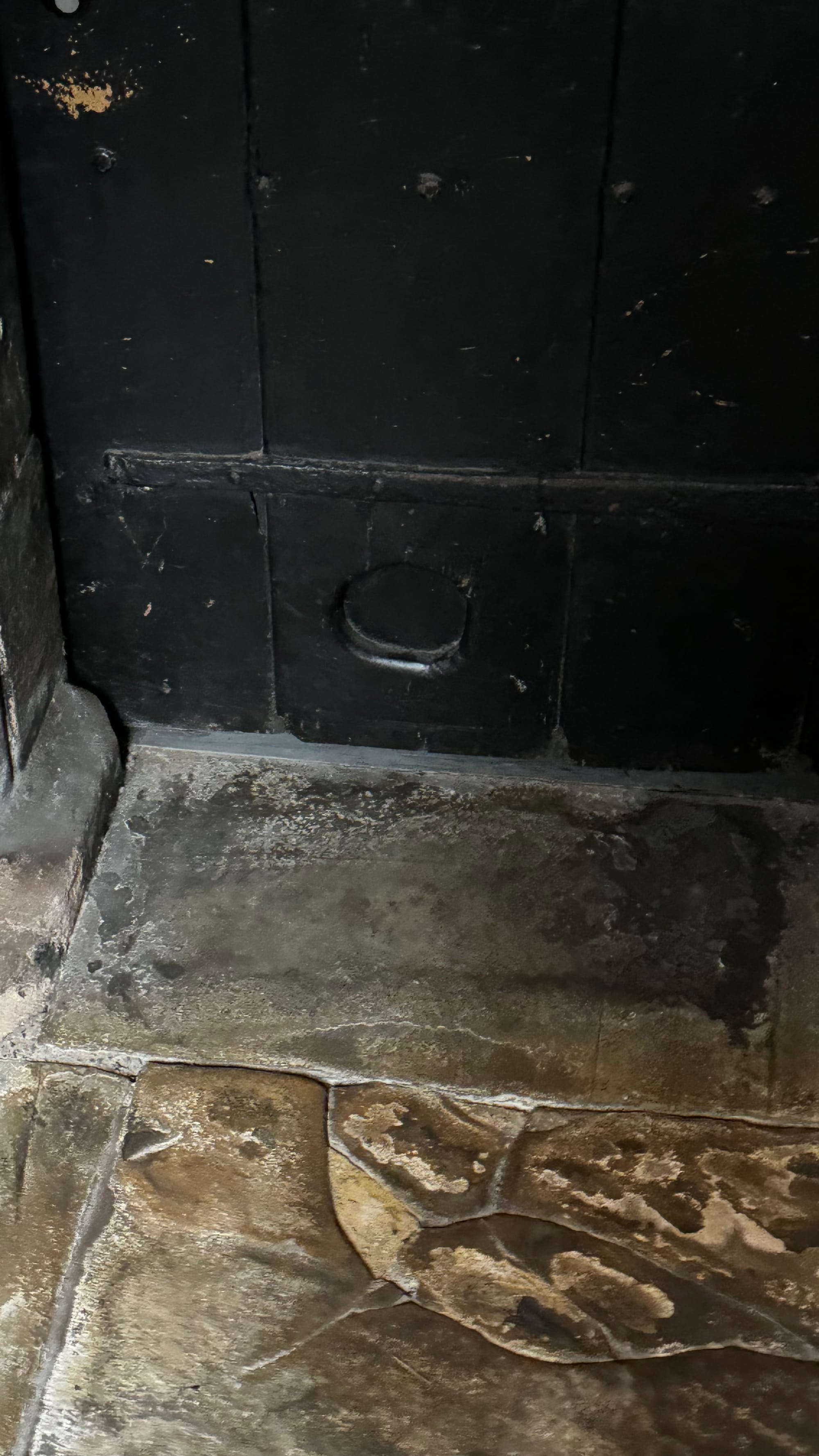
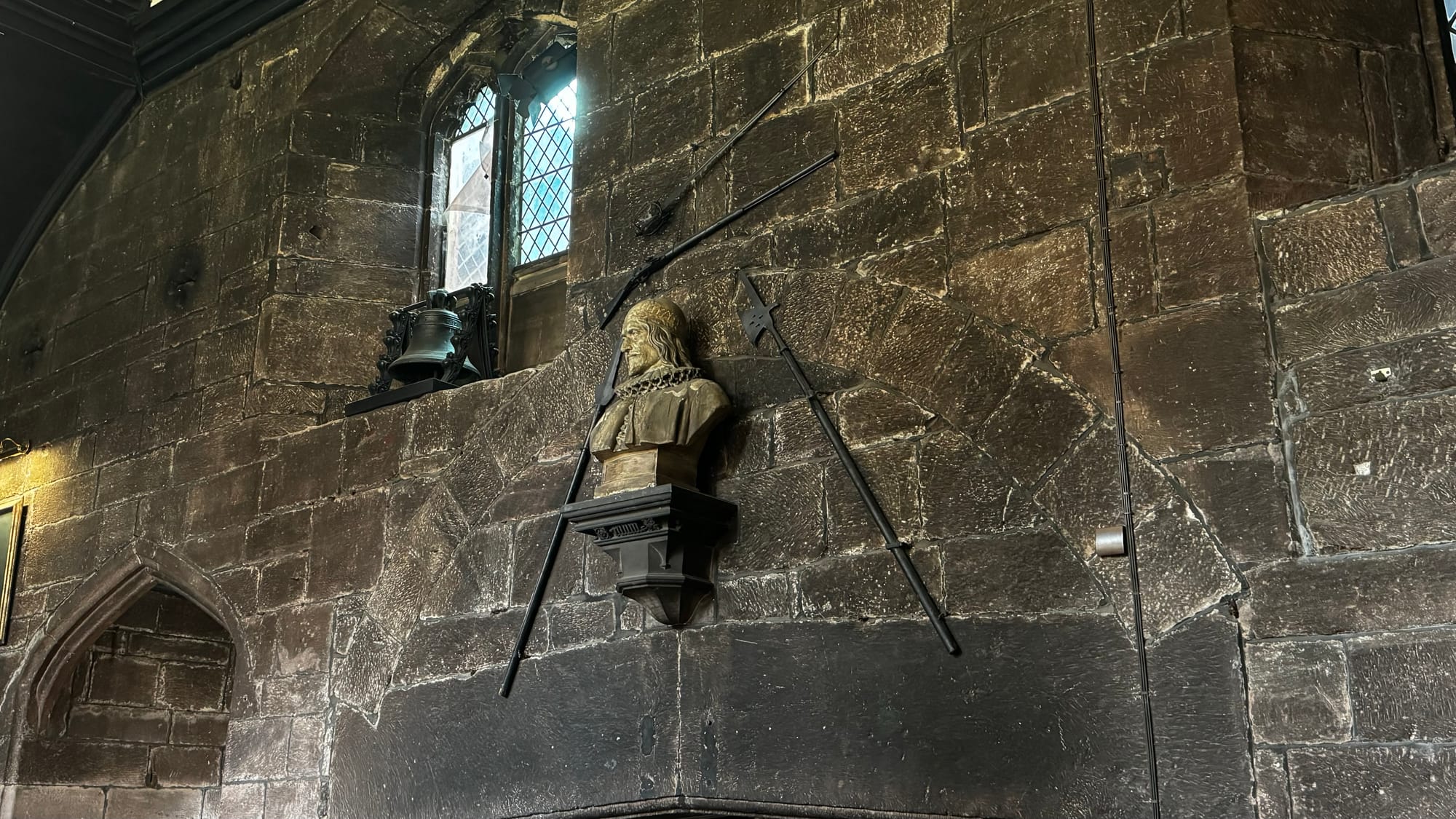
The building is the oldest medieval building still standing in Manchester.
A wealthy businessman, Chetham decided that education was the key to future success, so he invested in three projects. A public school for ”poor boys” (which was in the grounds of an old monastery), a library to continue lifelong learning and five parish libraries to promote learning to the common man. Unusually, the parish libraries were to be in English.
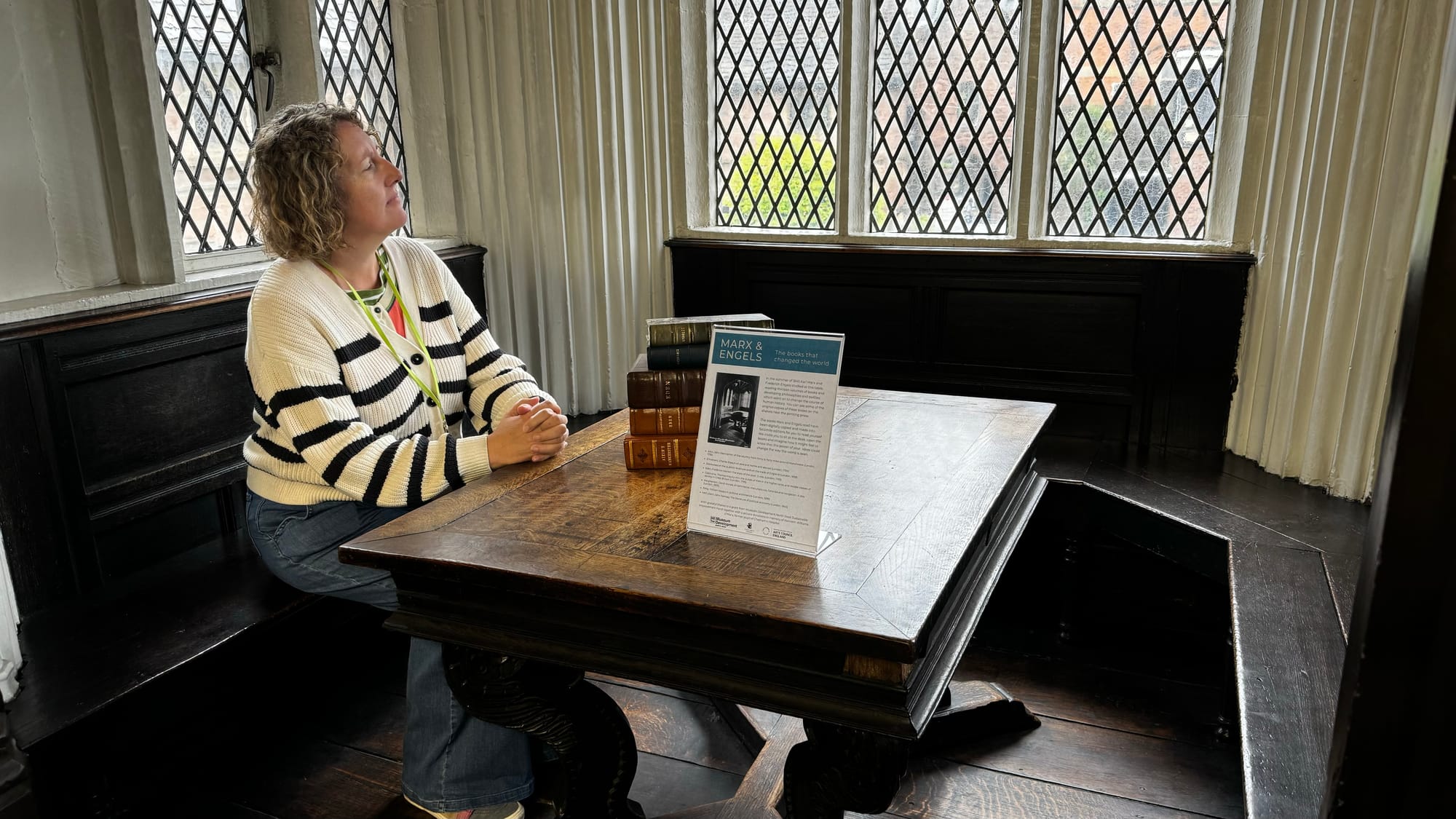
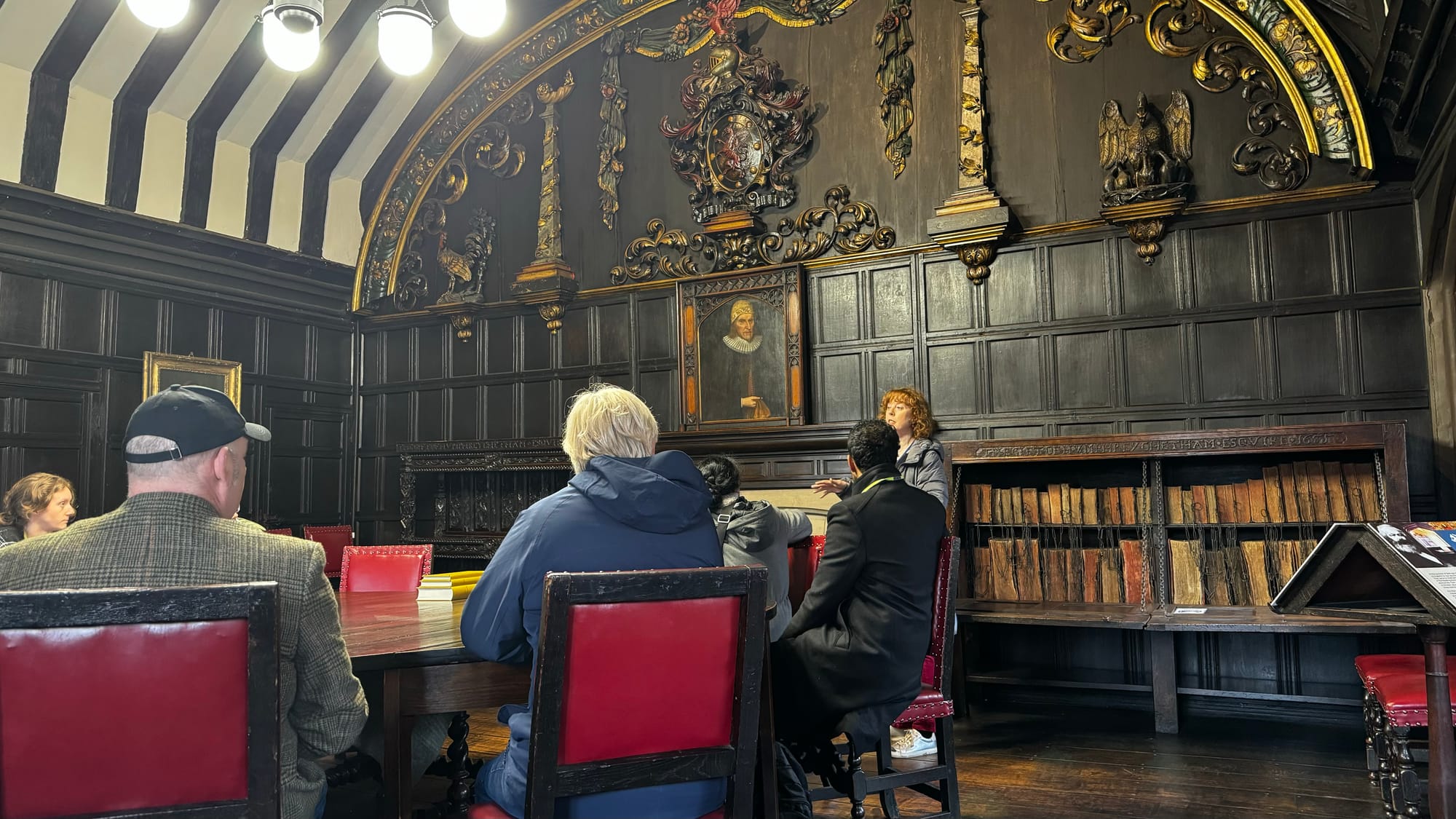
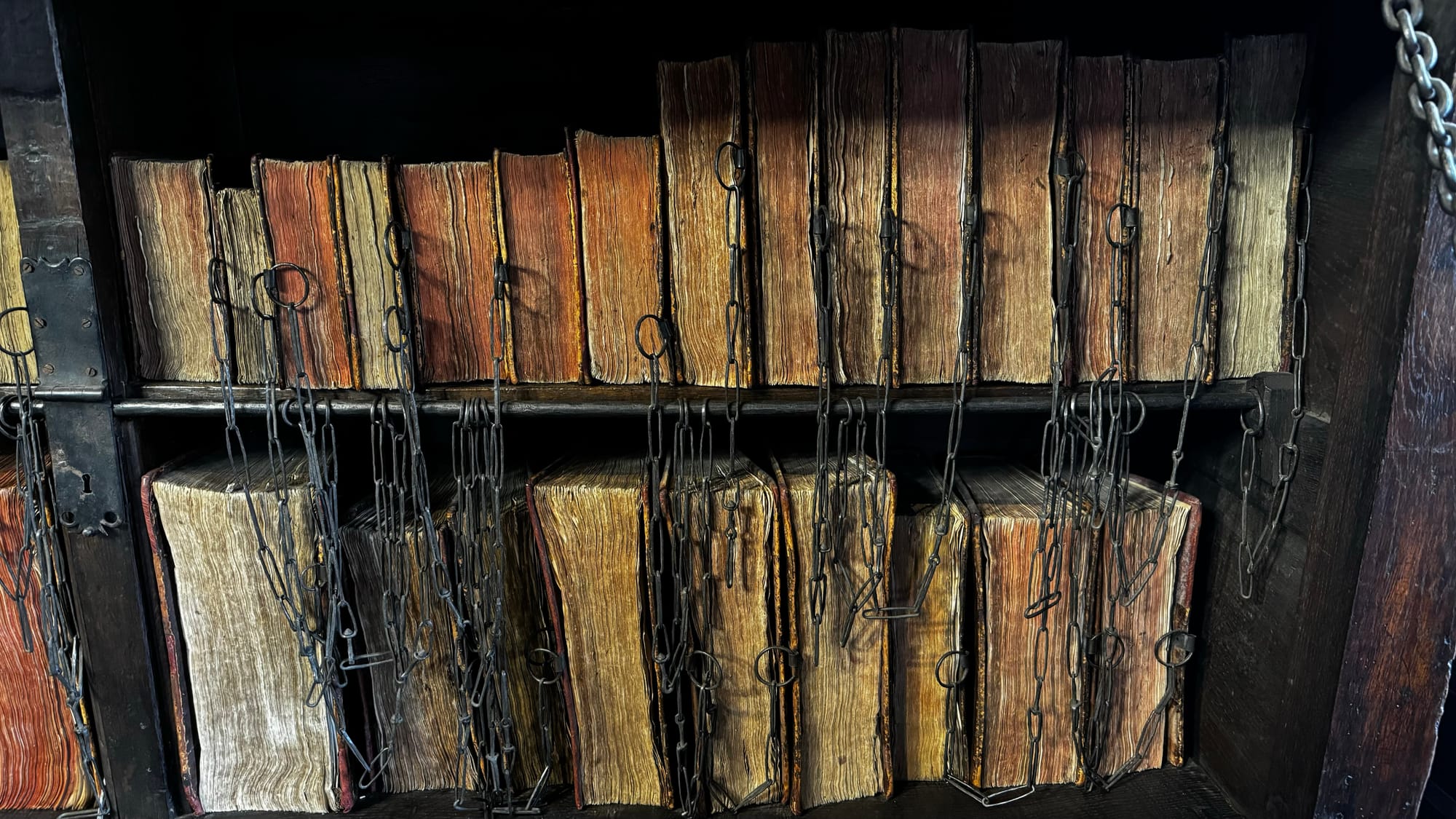
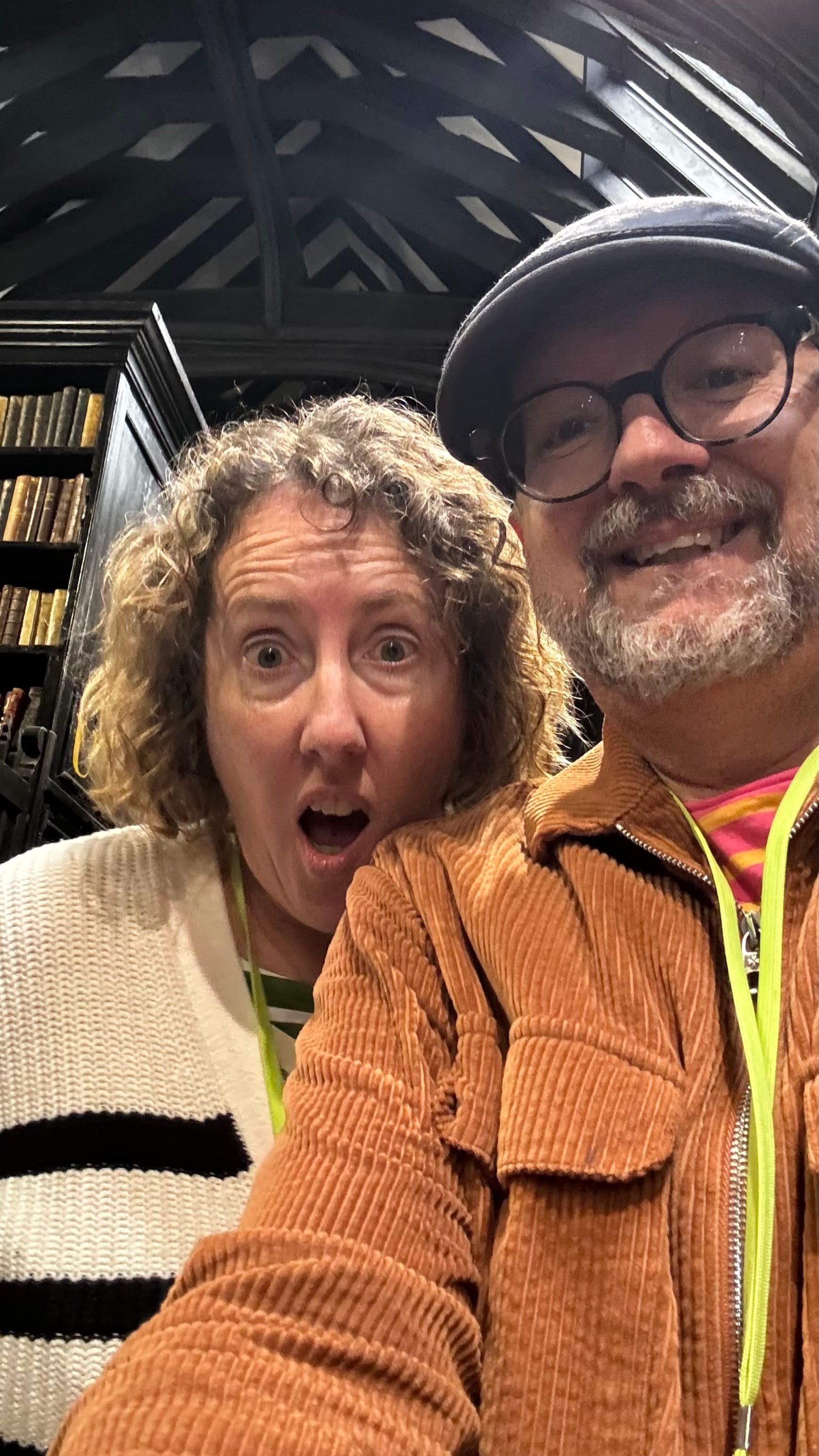
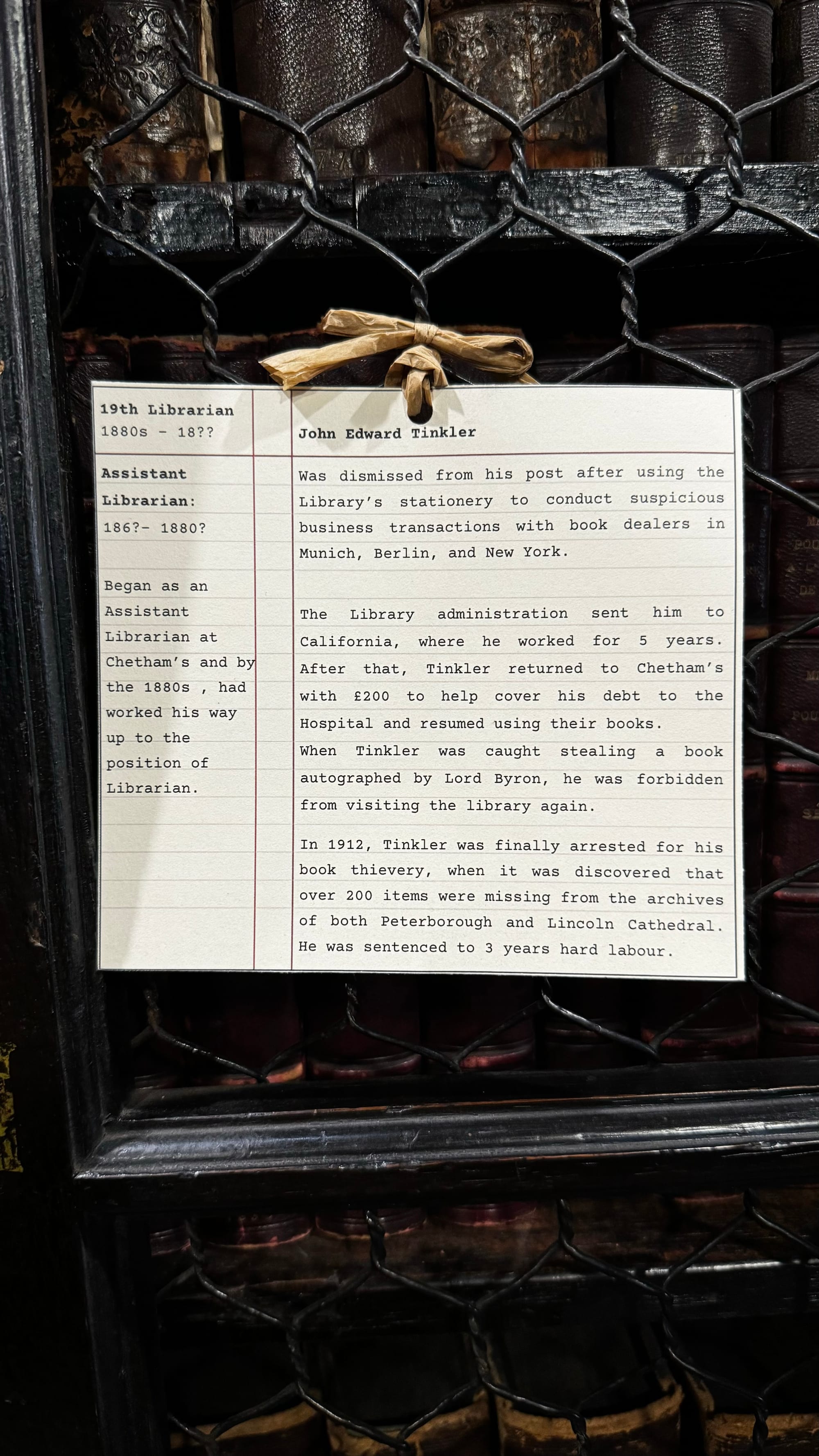
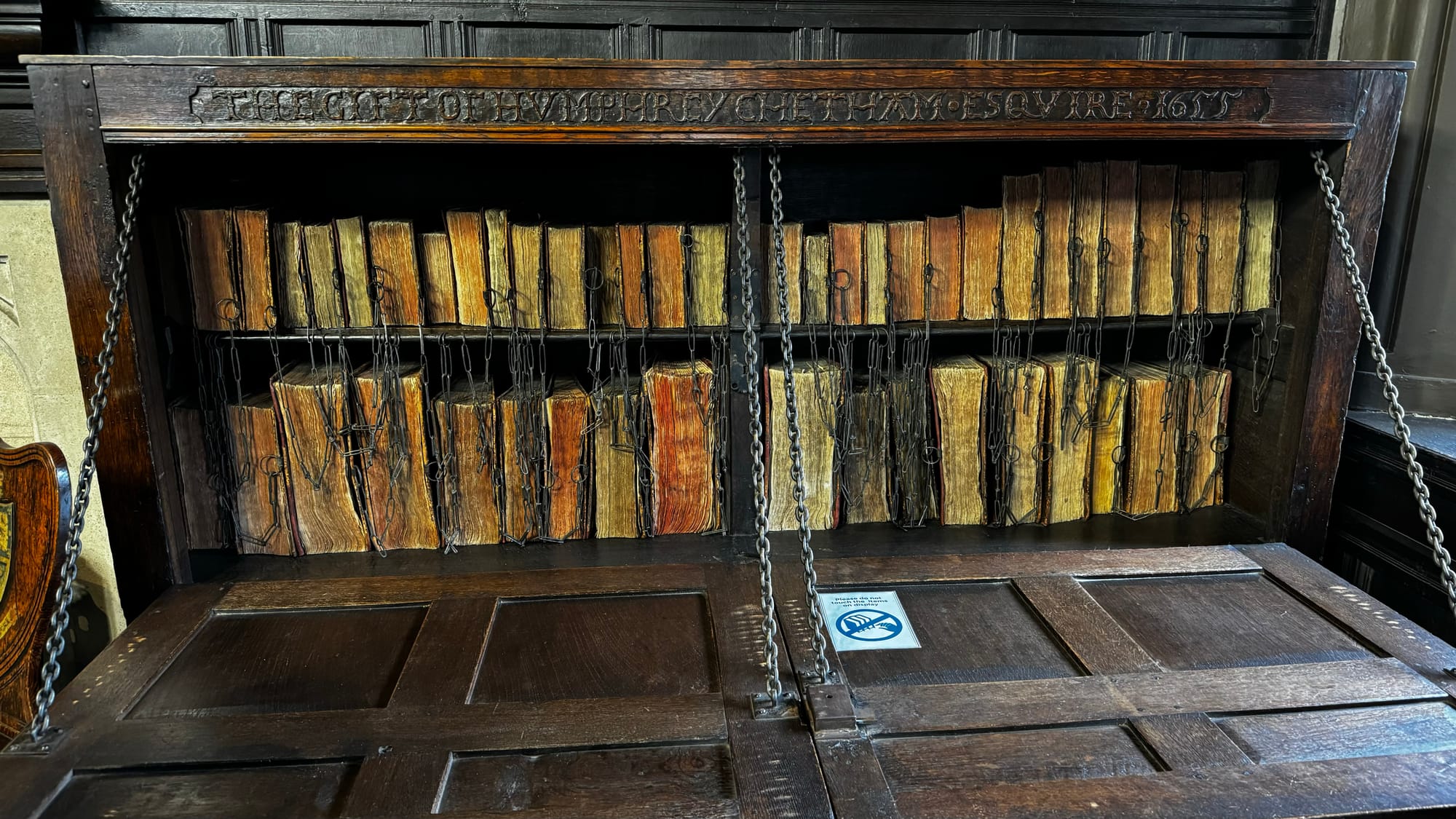
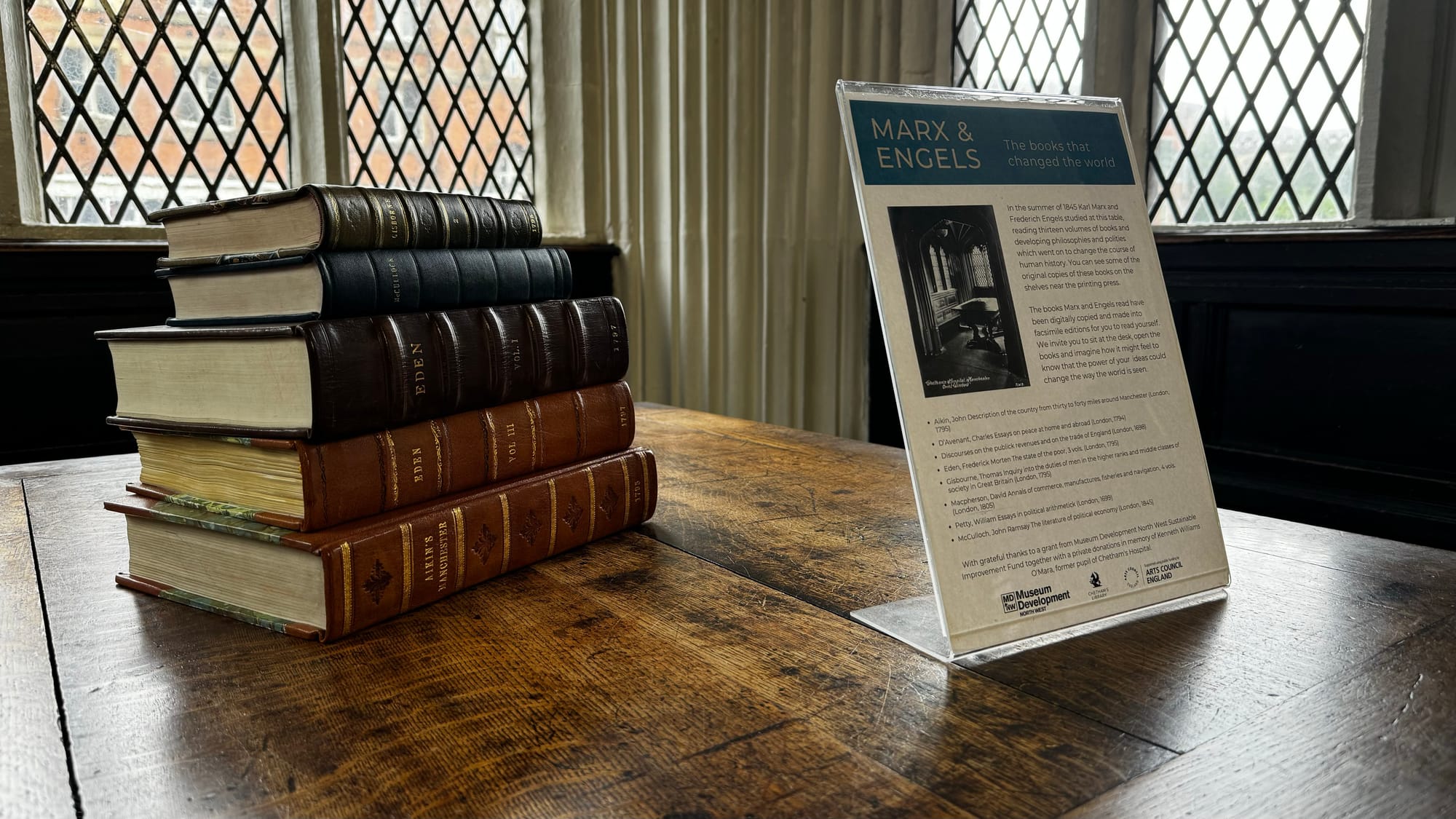
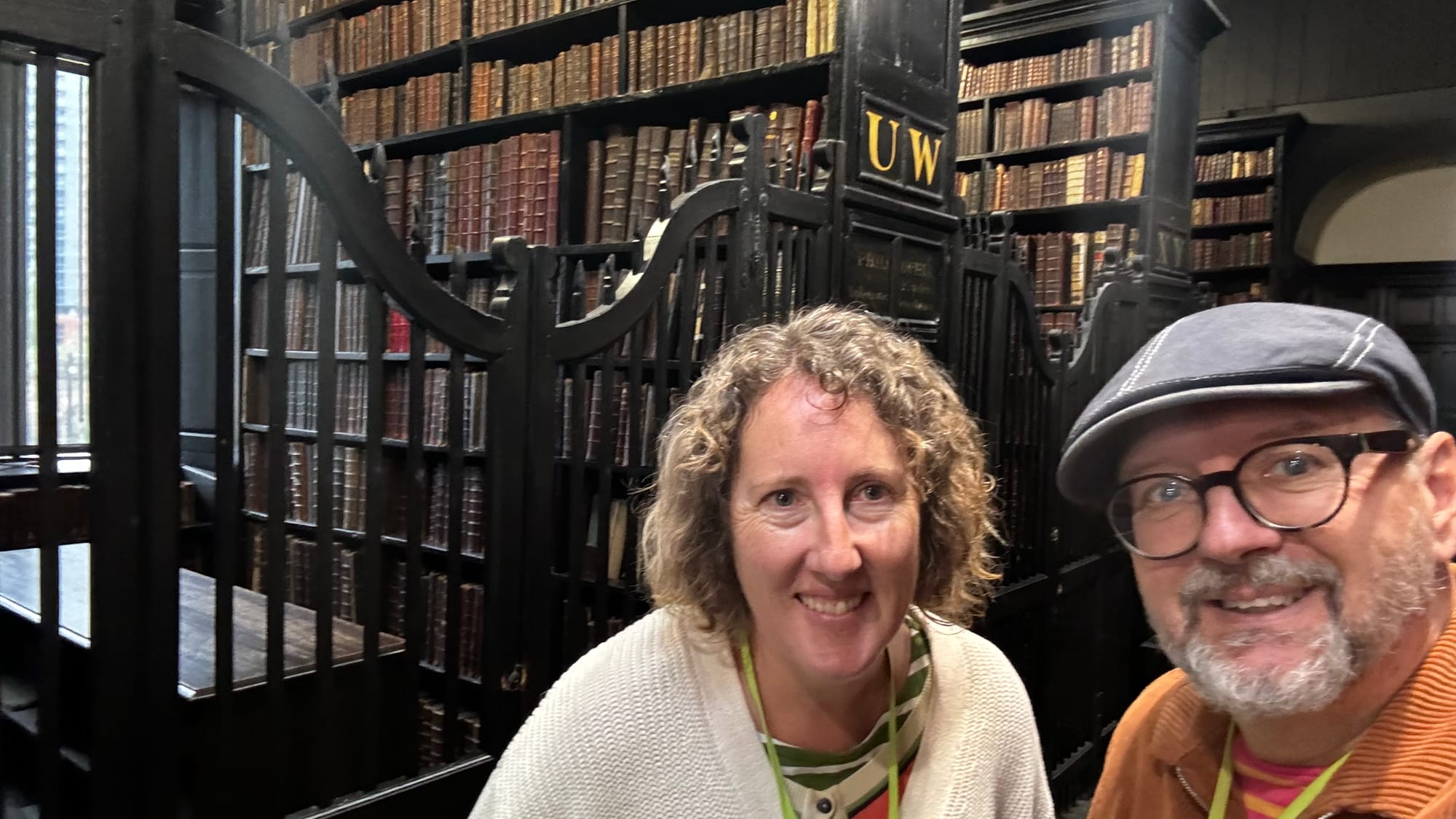
The Chetham library. Note the books ordered on custom shelves by size. Originally they were chained to the shelves. Karina is sitting where Marx and Engels worked.
Today the library still operates 99% as intended under Chetham’s original instructions and contains thousands of rare and original books. It’s a fascinating place, rich with history and well worth the visit.
One favourite fact is that the shelves were custom built and books are still organized by size! If you need to find something, you’re given a specific ”folio”, shelf and book number. O.3.45 is located in the group of shelves called O, 3rd shelf from the top and 45th book from the left. The system apparently works very well, except if several people try borrow a book from the same shelf on the same day!
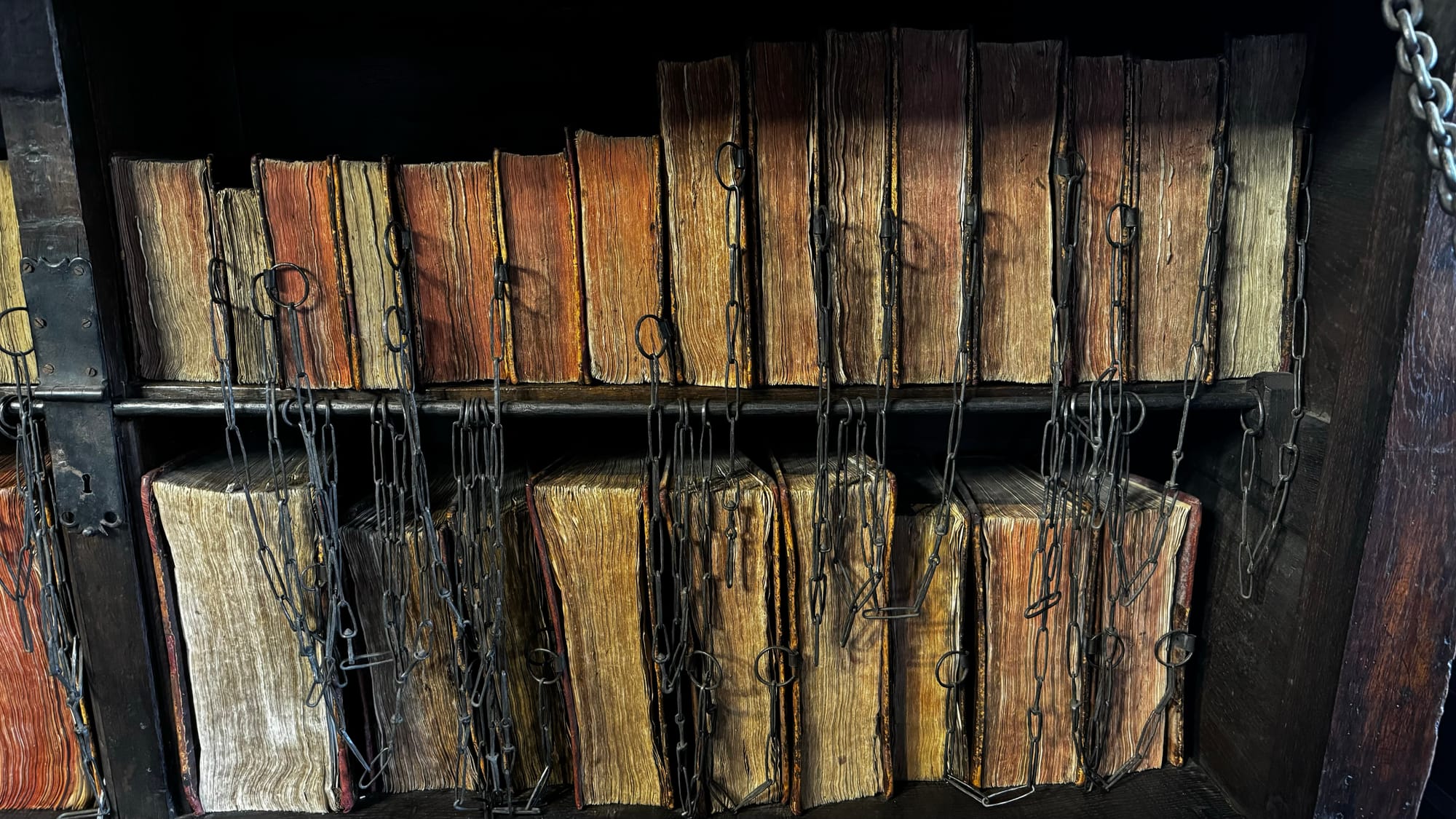
A parish library. Chains still intact.
Originally the building held monks and the books are now in their cells (modified in the 16C). All in all a very interesting place. It’s also were Karl Marx and Freidreich Engels worked together in 1845 on the communist manifesto published 1847. The desk where they worked still exists and has copies of several of the books they referred to laid out for use.
After this bit of culture, we wandered more of the city, marveling at the fashion (crop tops and booty shorts in 12C and raining), the public drunkenness at 2pm and the general feeling of mayhem but also vibrancy in the city centre. I think we’d enjoy spending more time. We found a cool donut shop, walked a canal (which goes under the modern city, but still has the old locks) and visited the statue to Alan Turing (founder of modern computing).
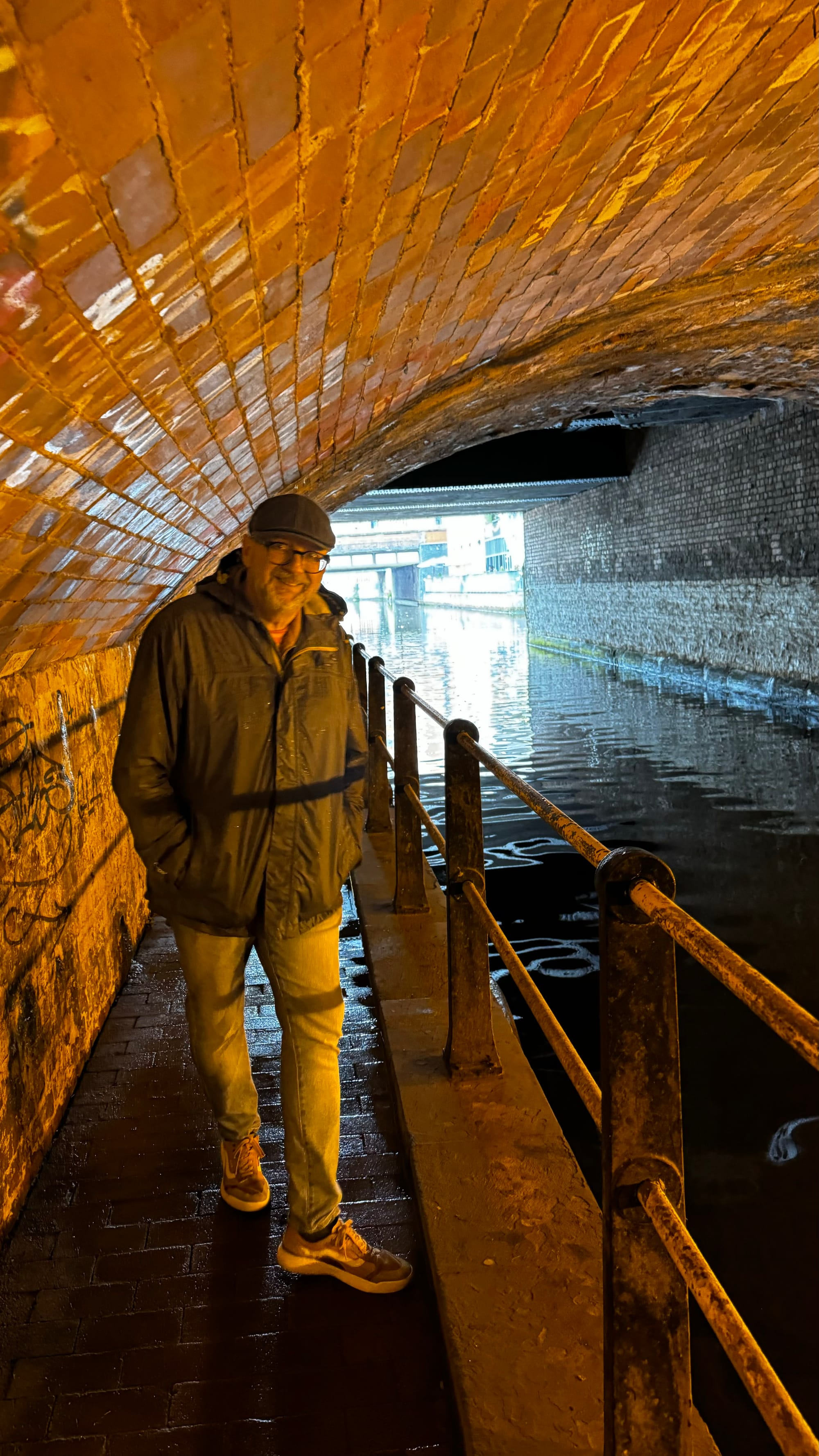
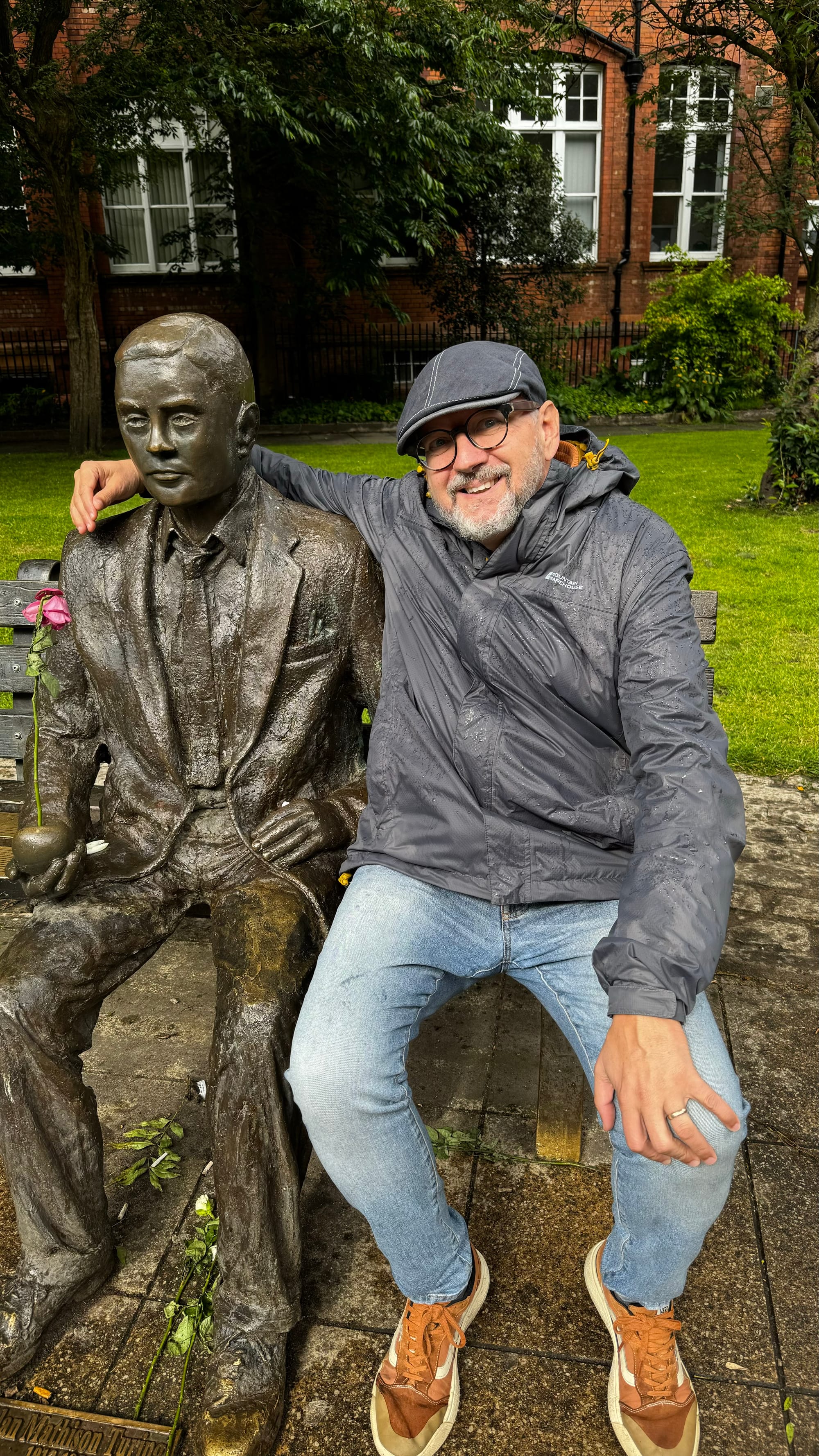
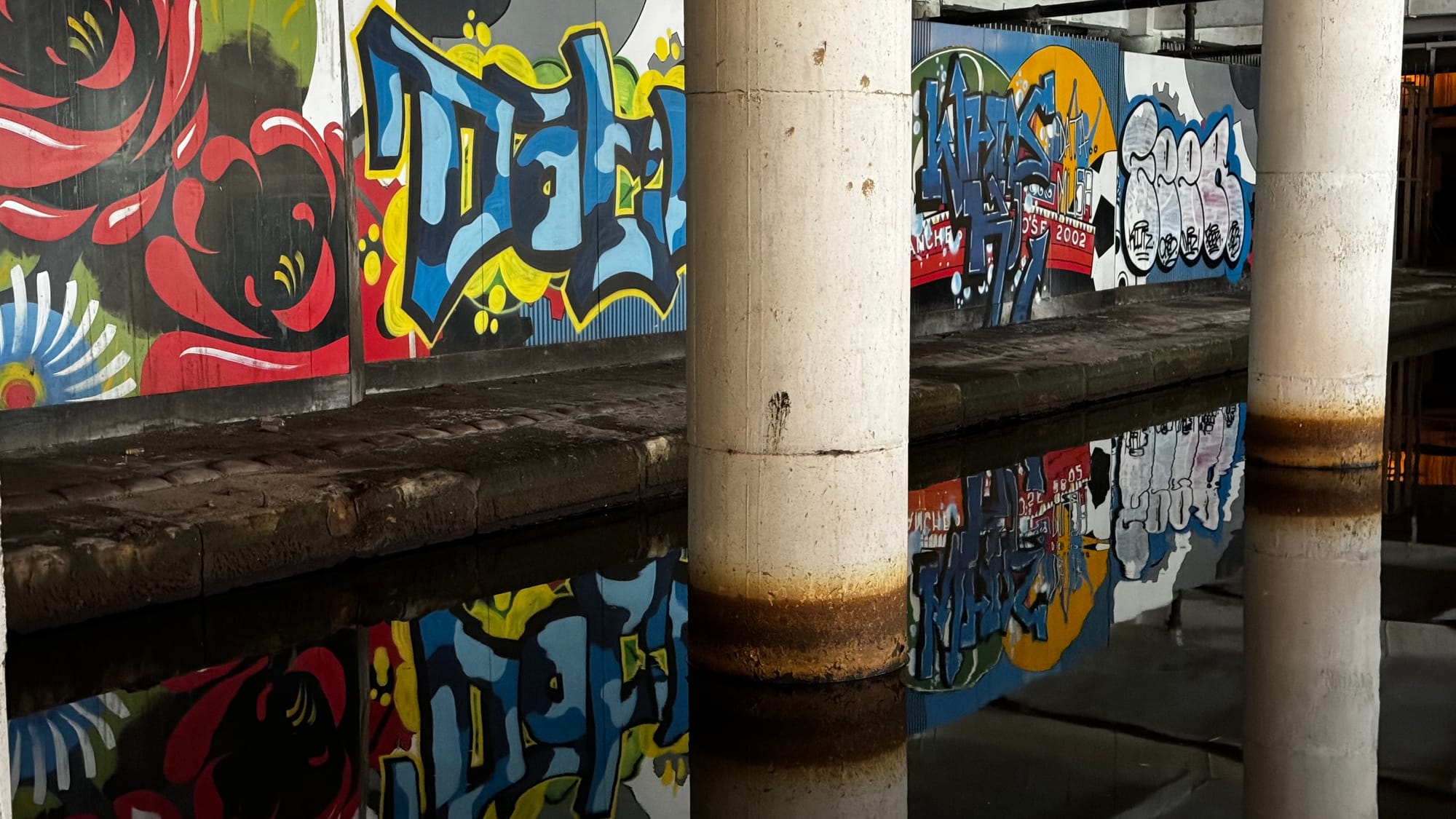
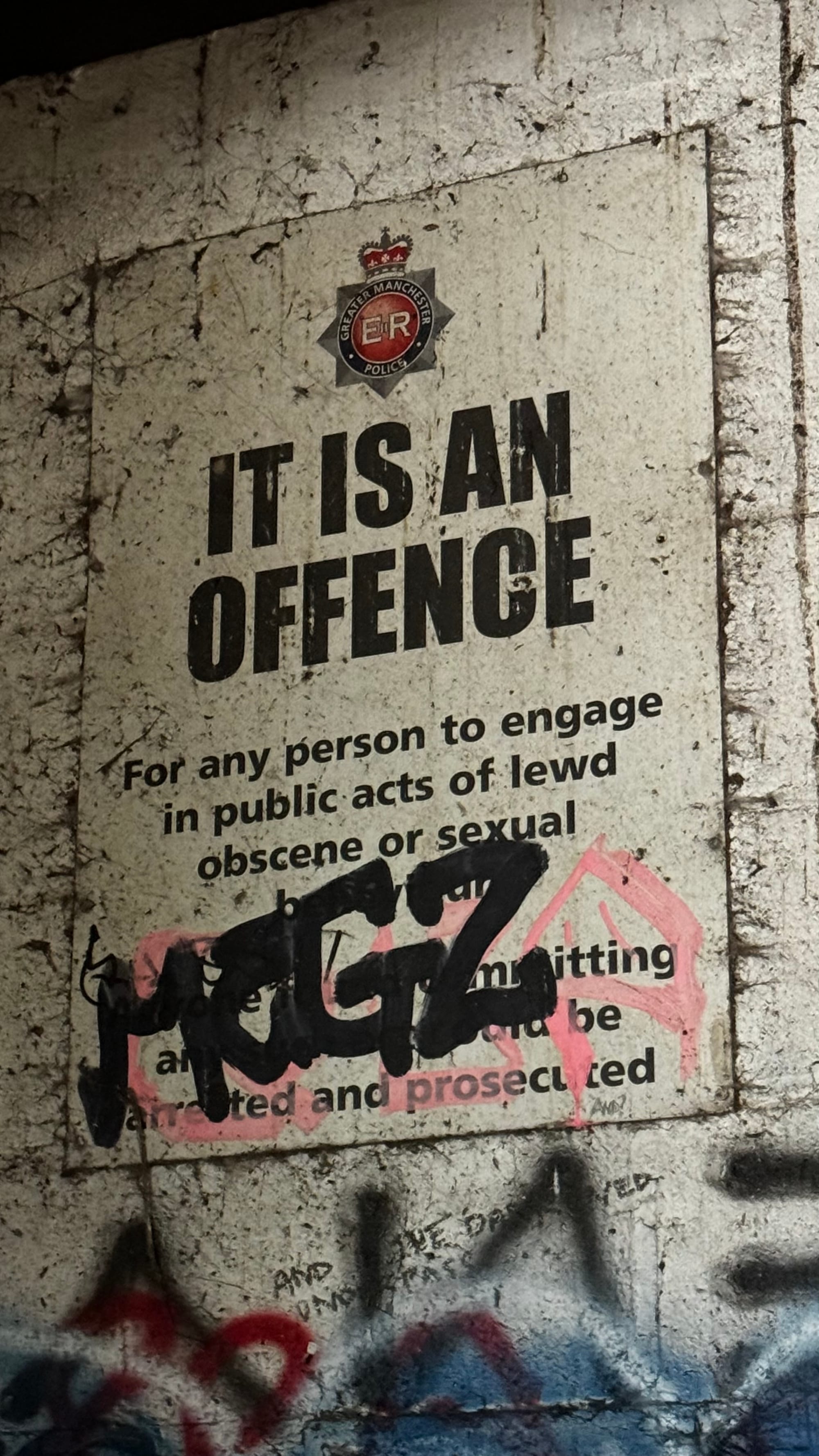
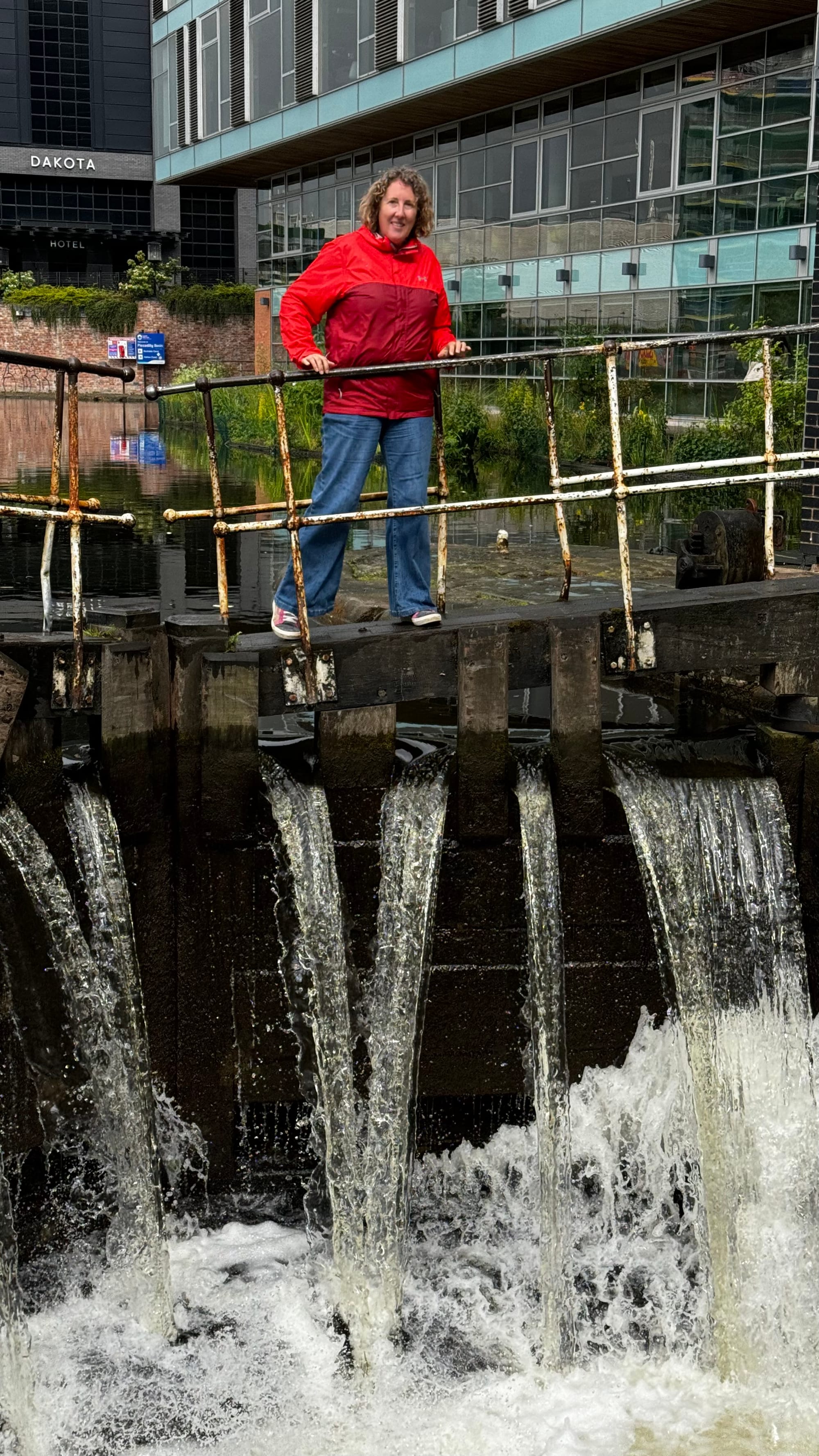
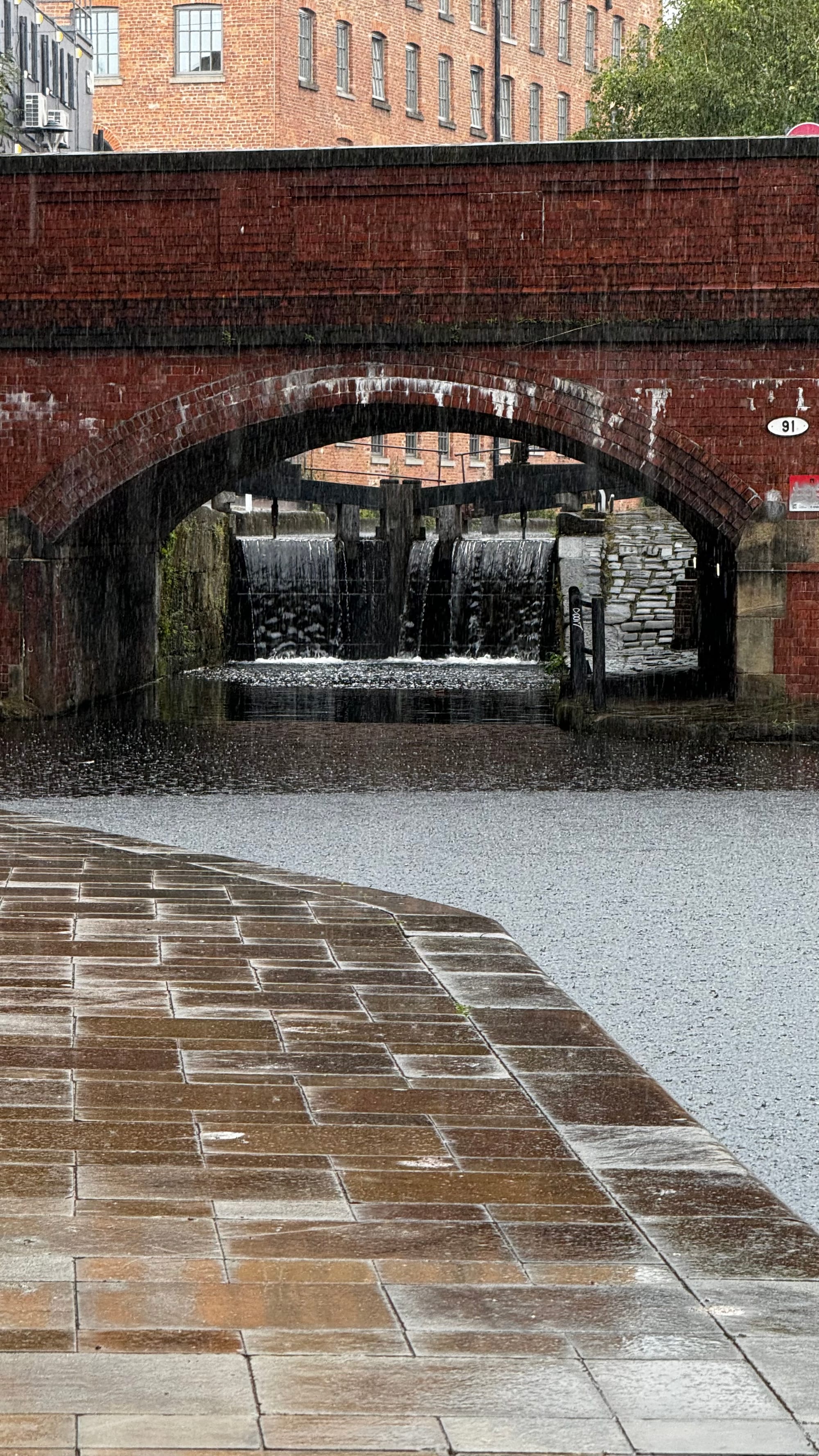
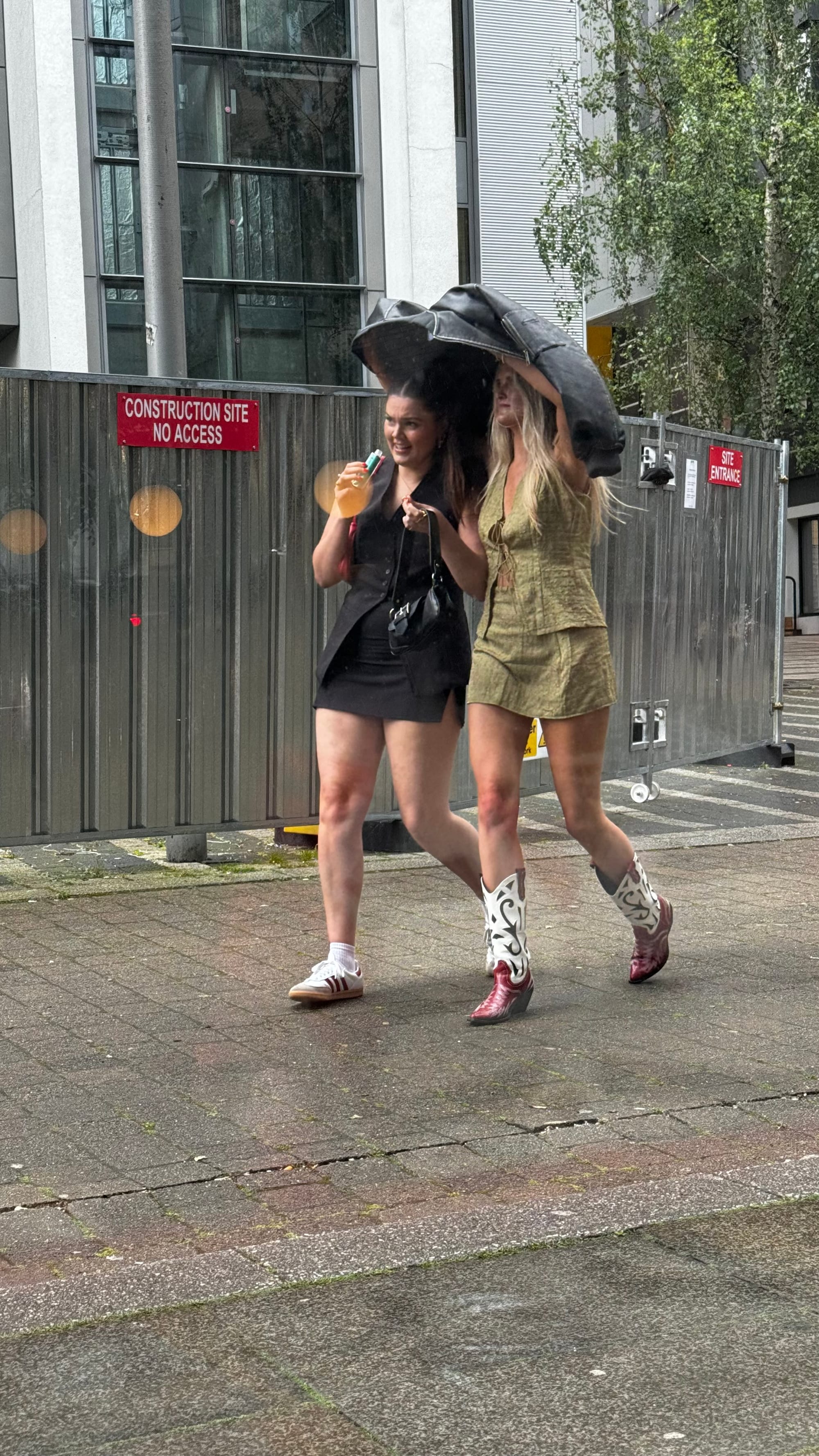
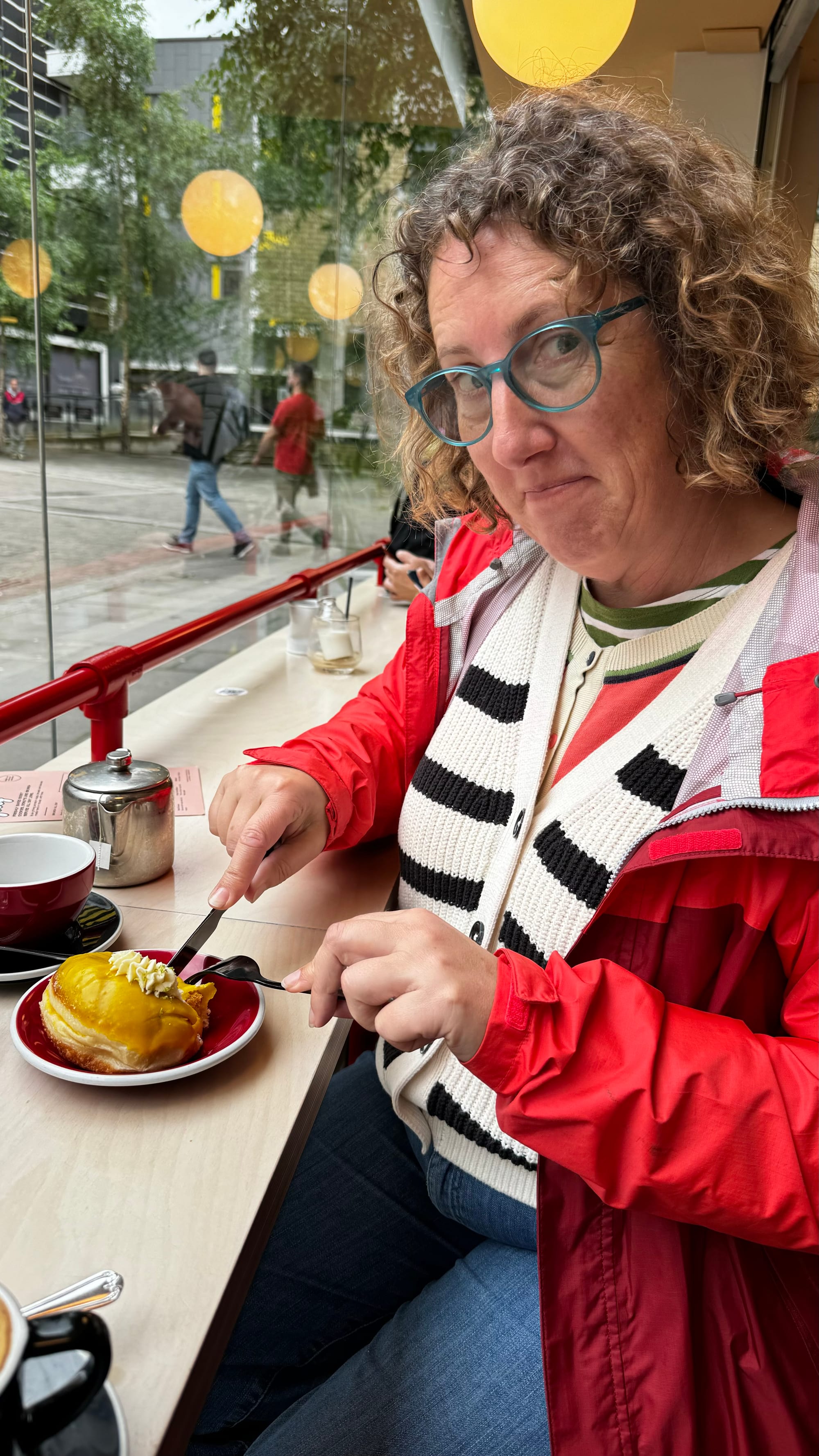
Views around Manchester.
Finally it was off to the airport where we are relaxing before boarding our flight. We arrive in Spain at 1.30AM and will head to a hotel for sleep before picking up a hire car, collecting Mum and Dad, then heading to northern Spain for a week.
Until next time
Tim and Karina
